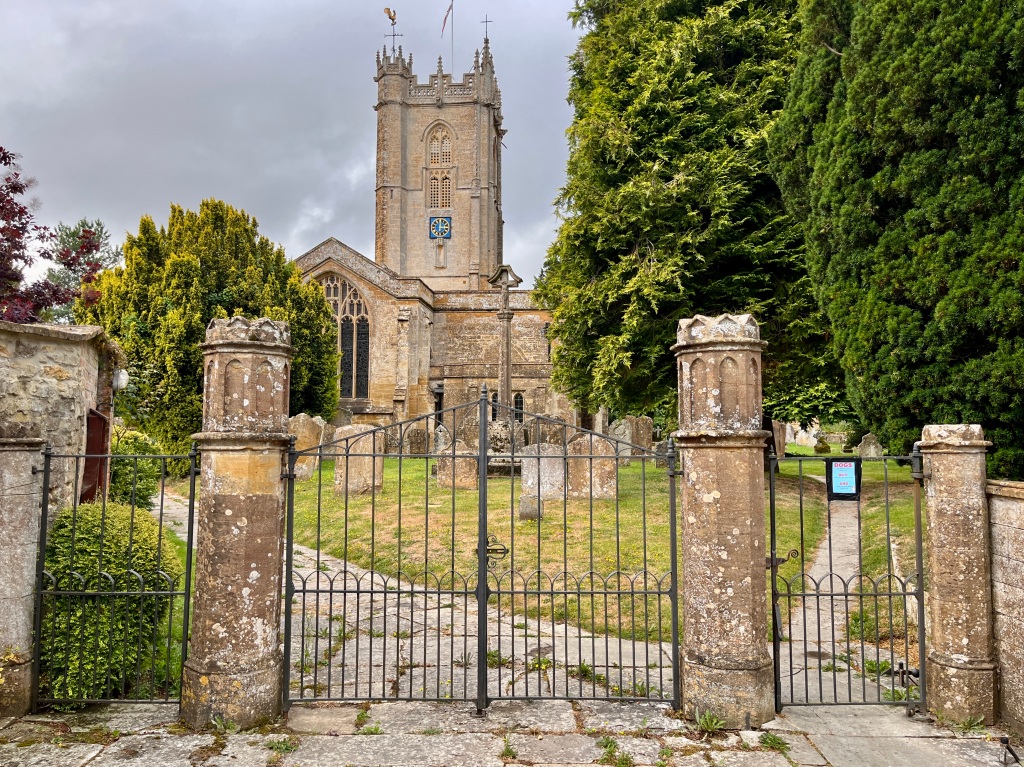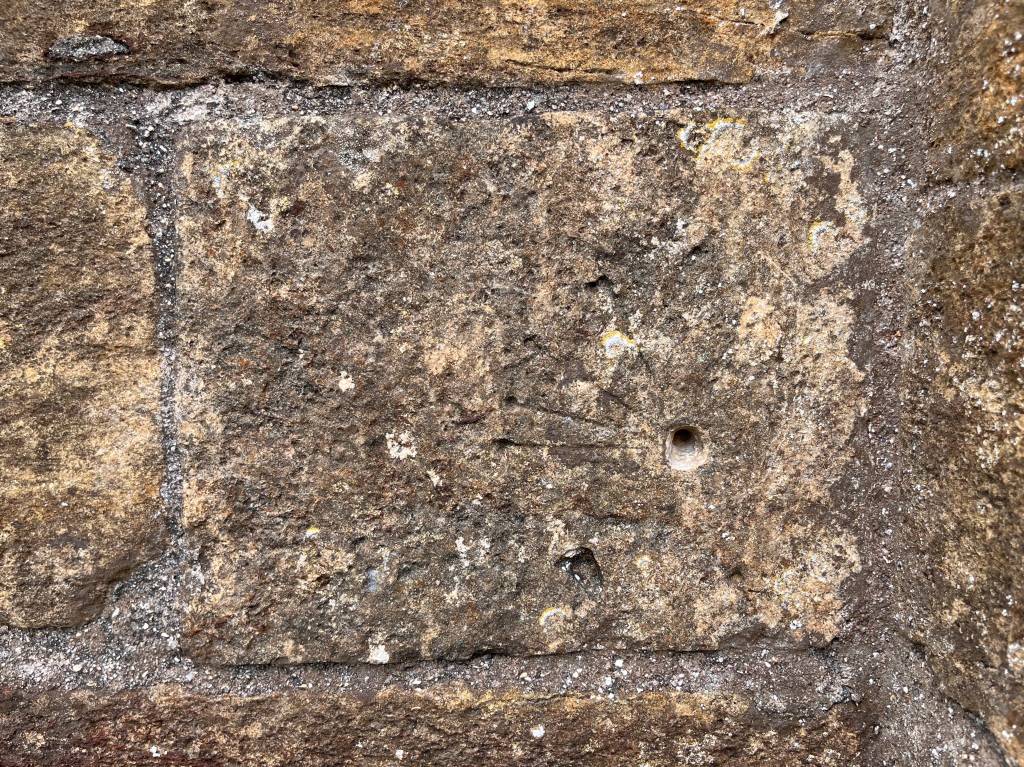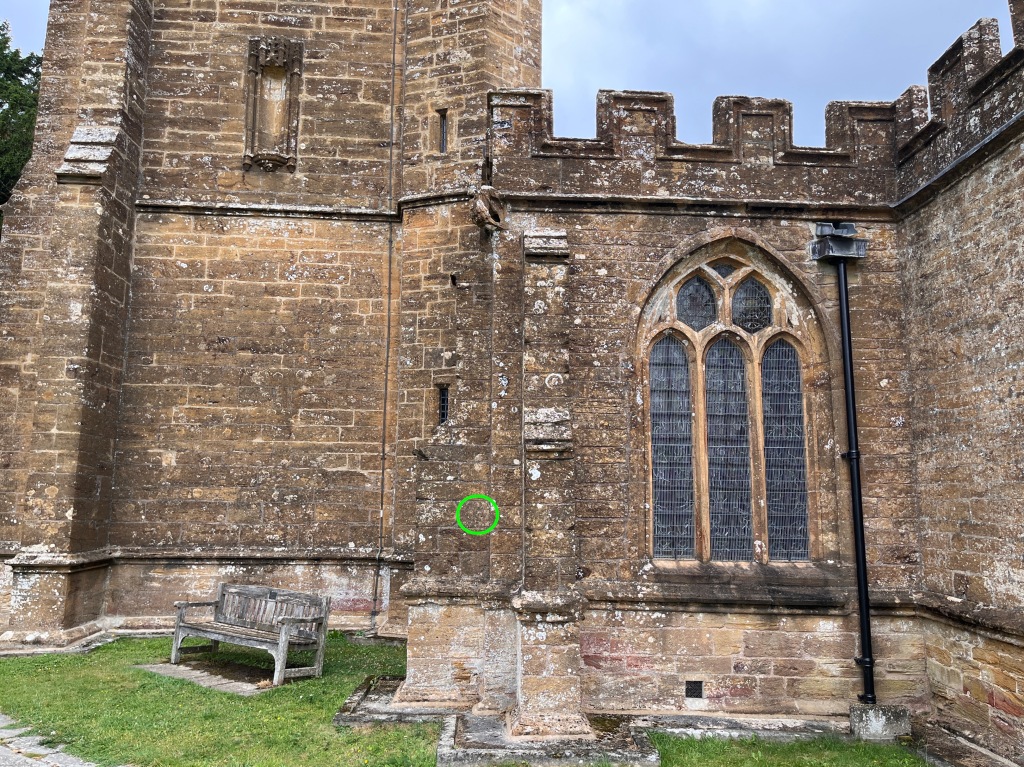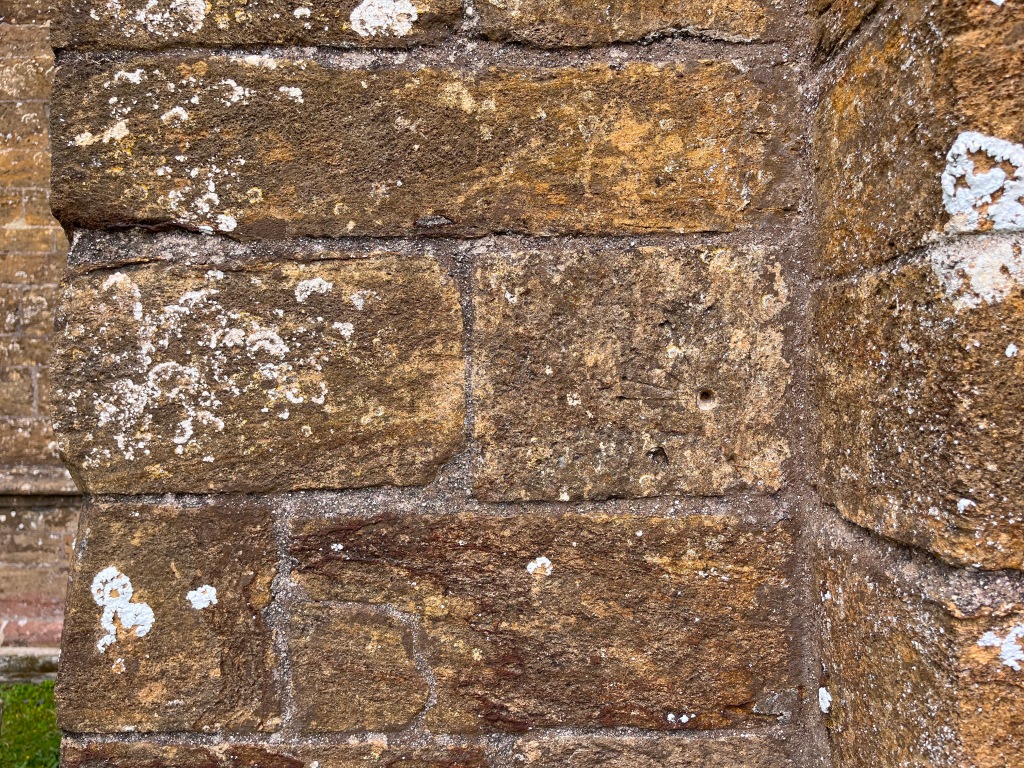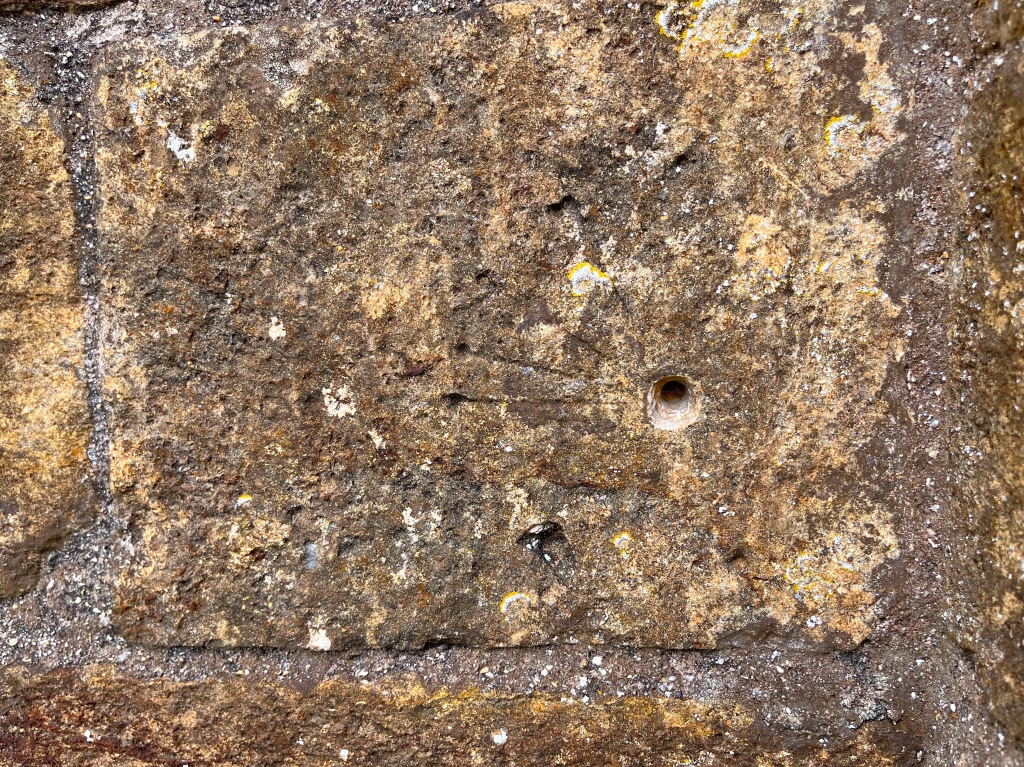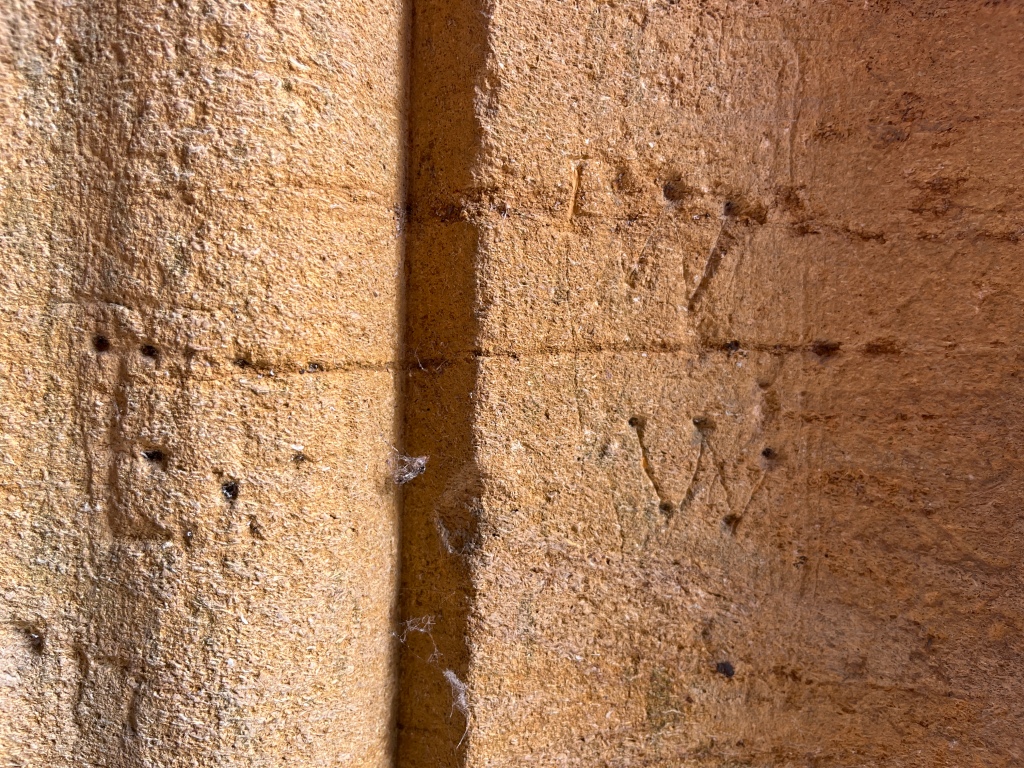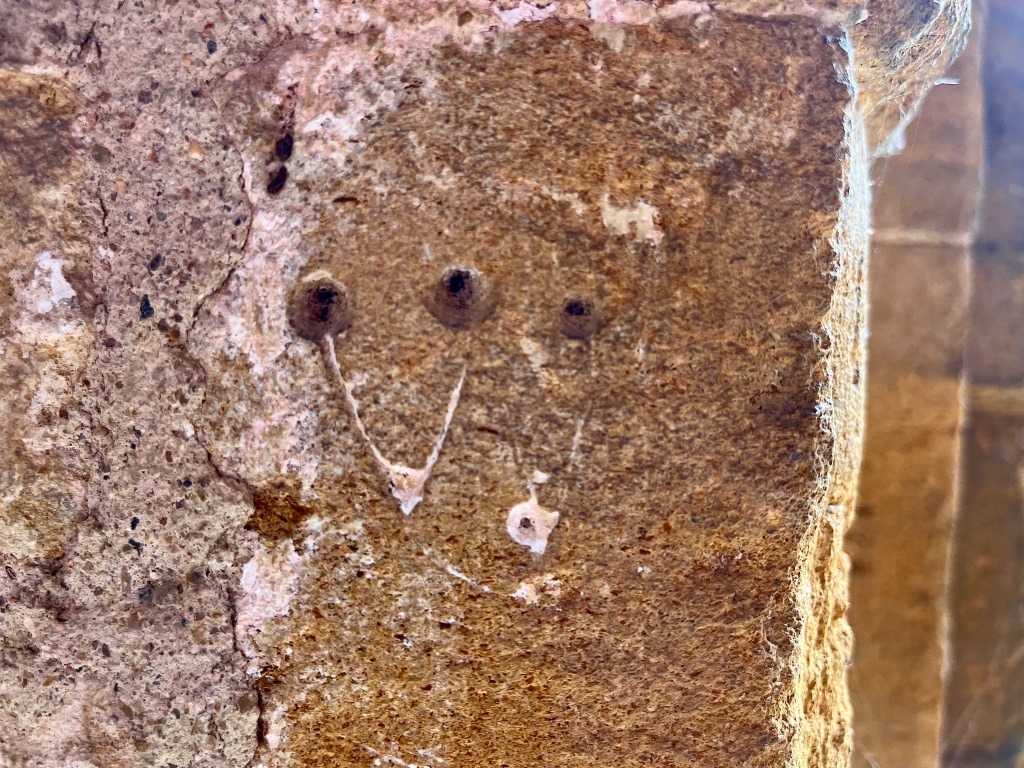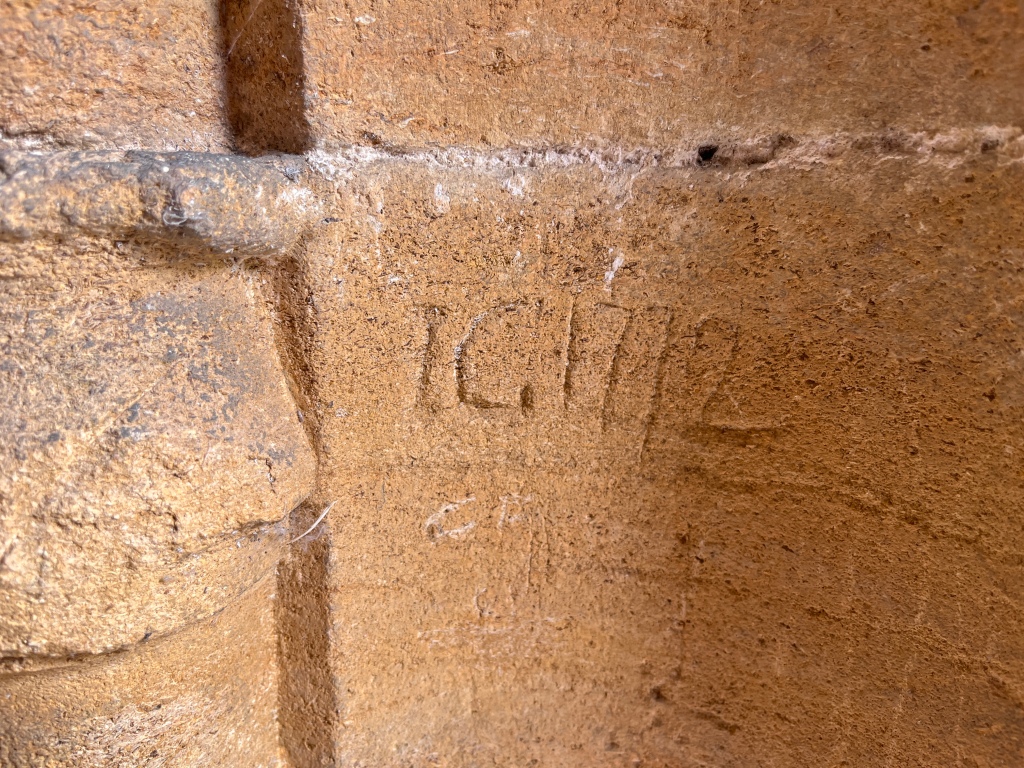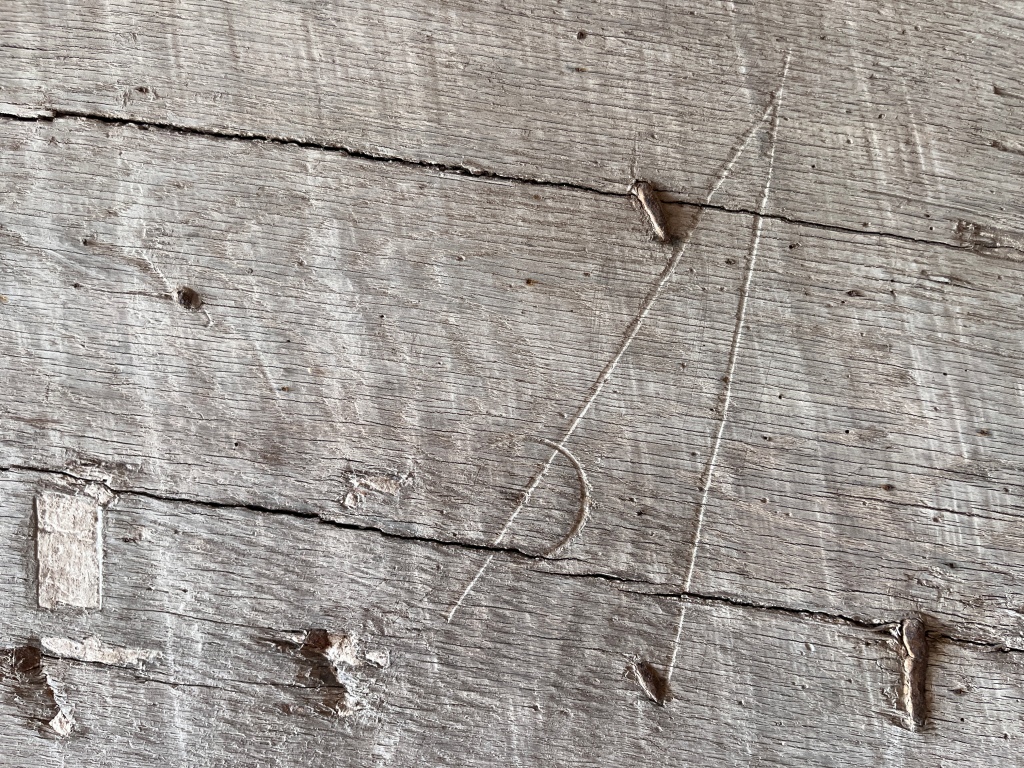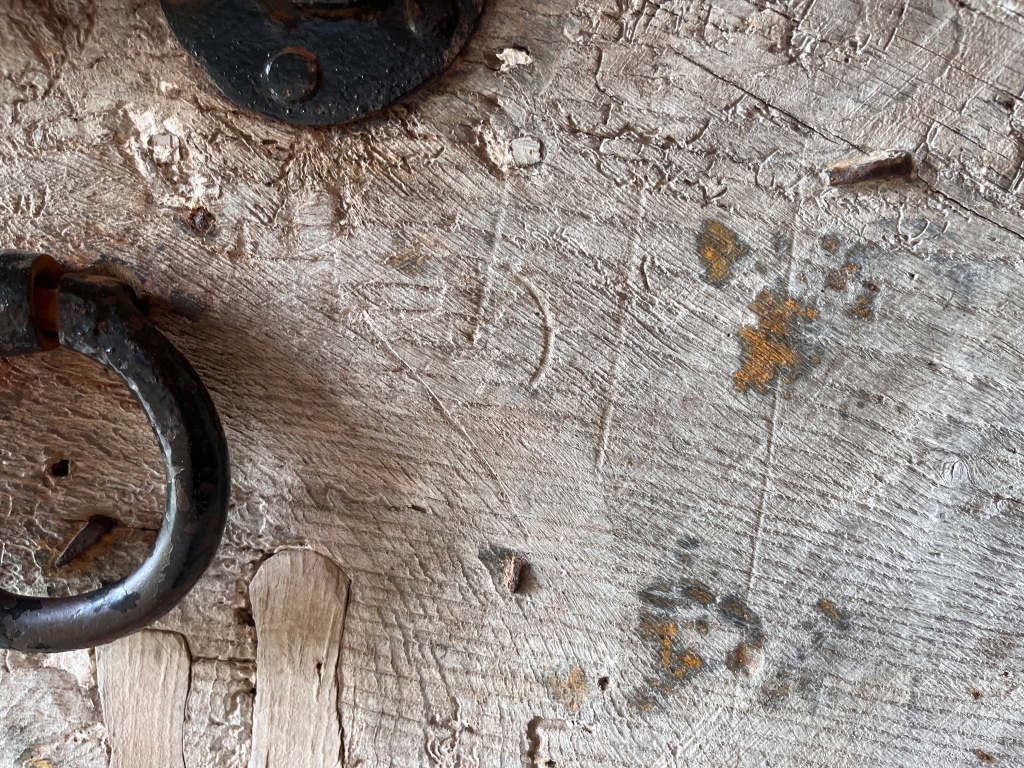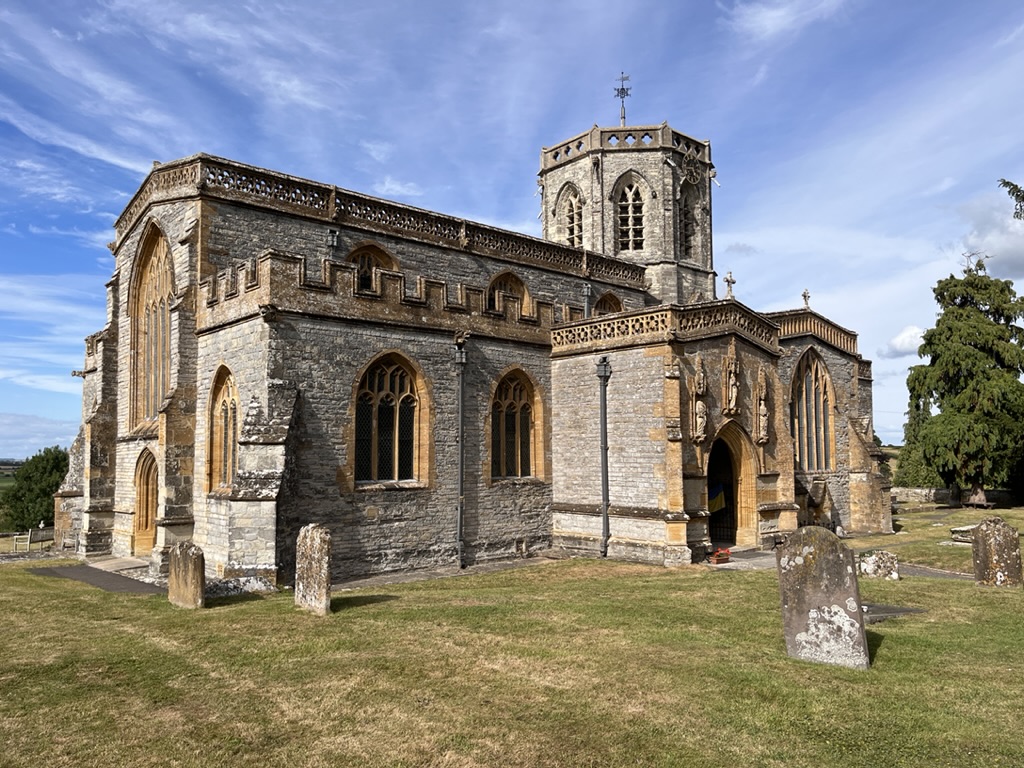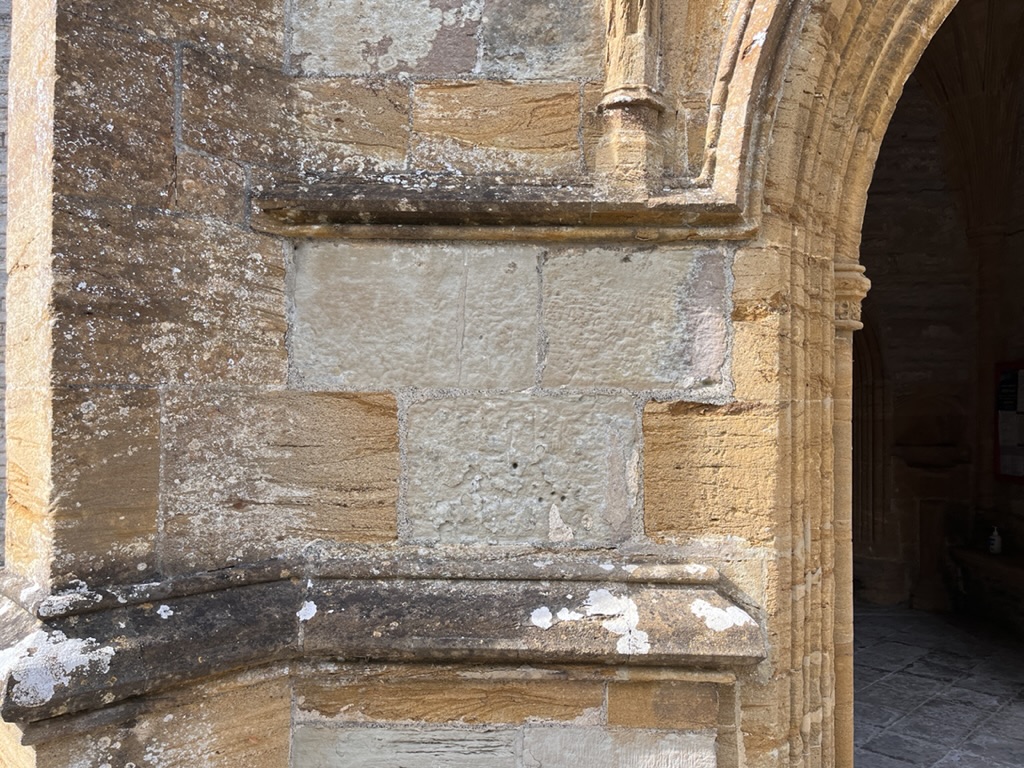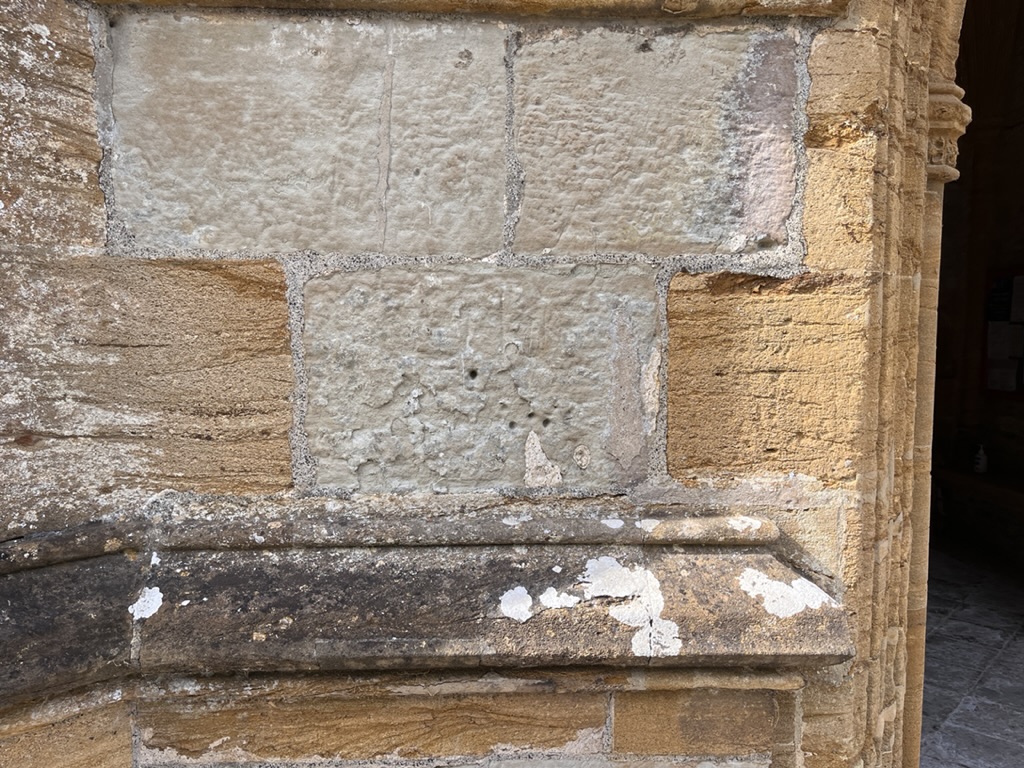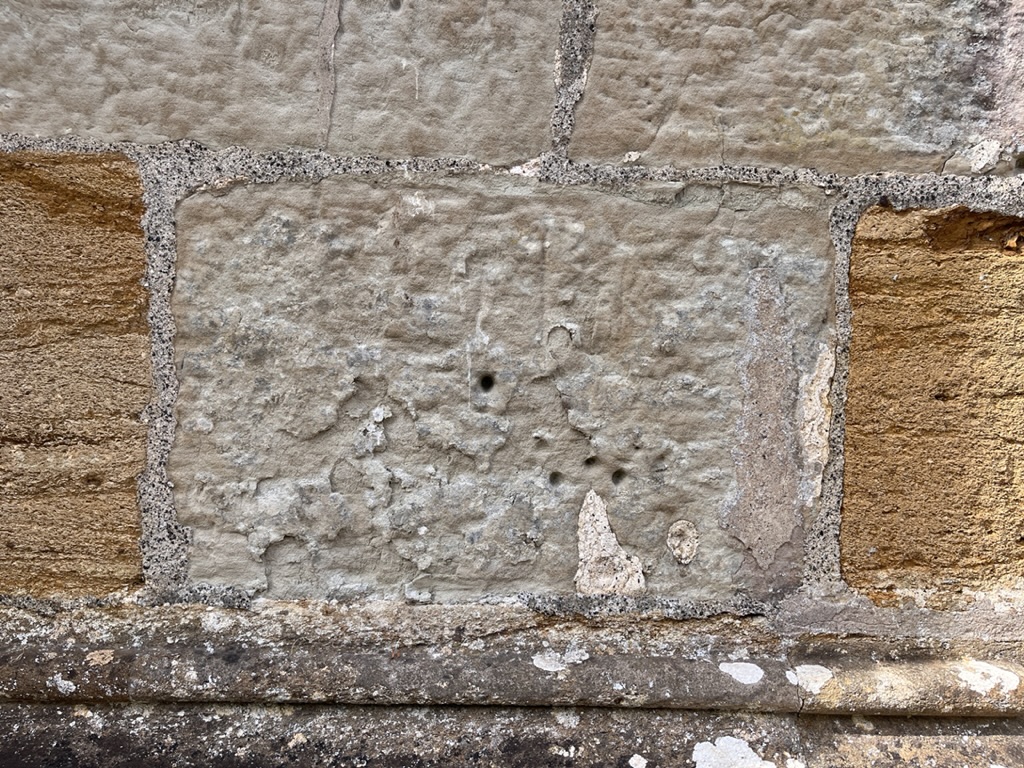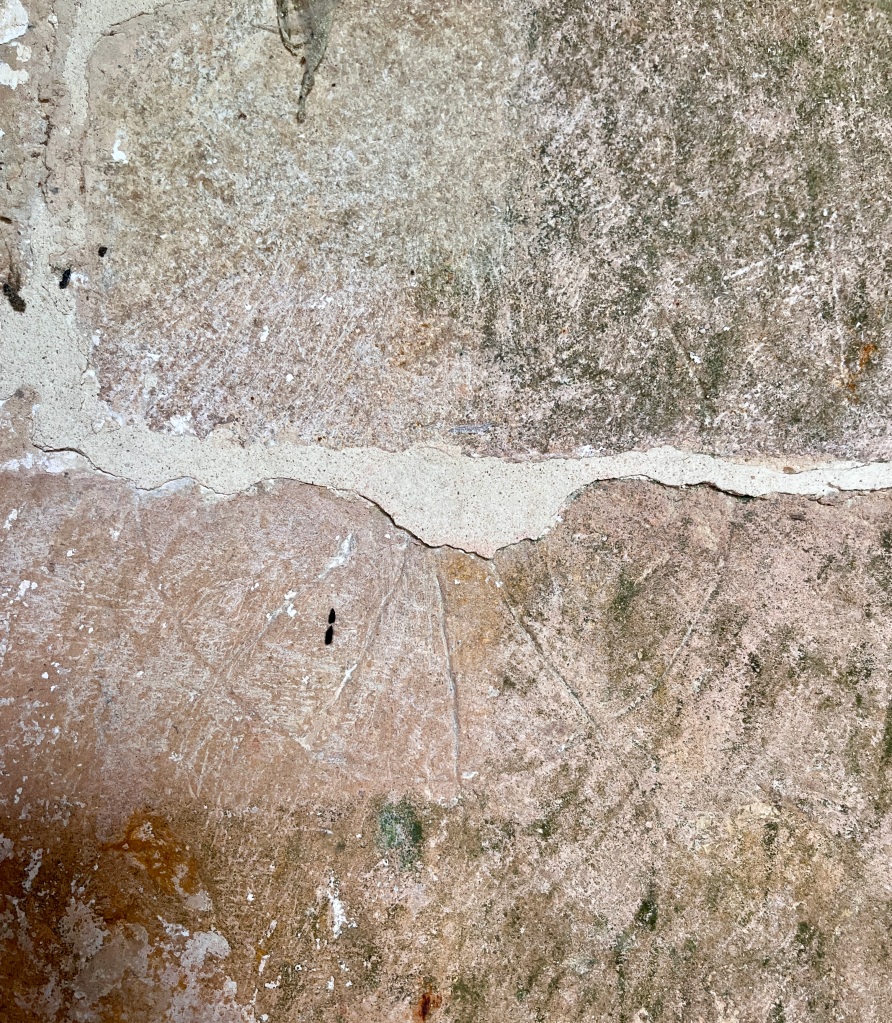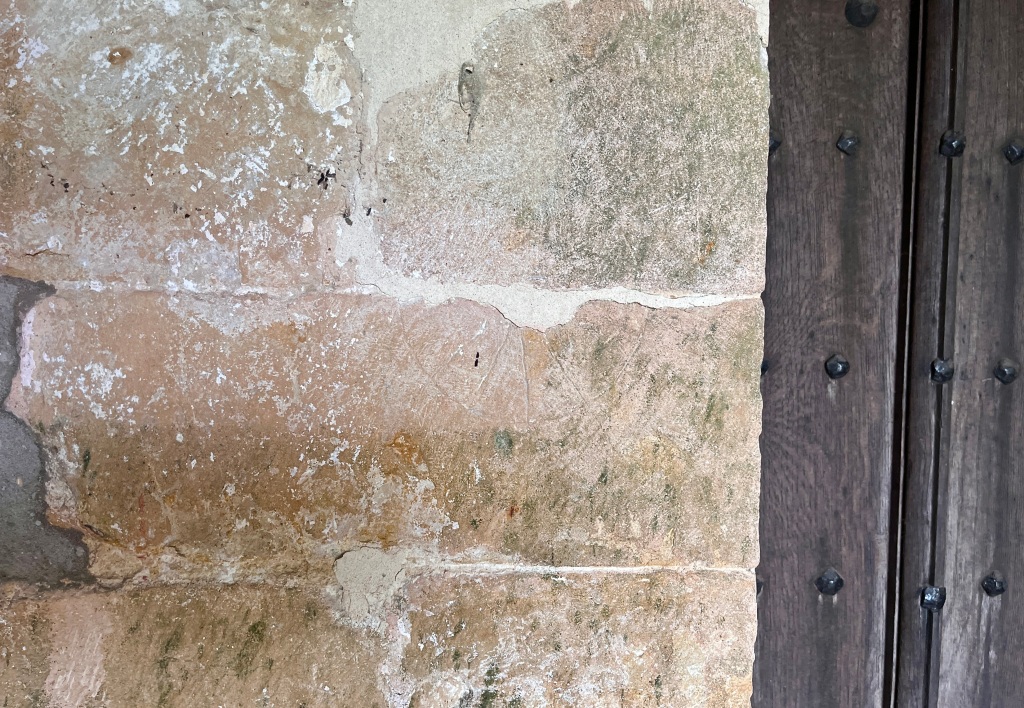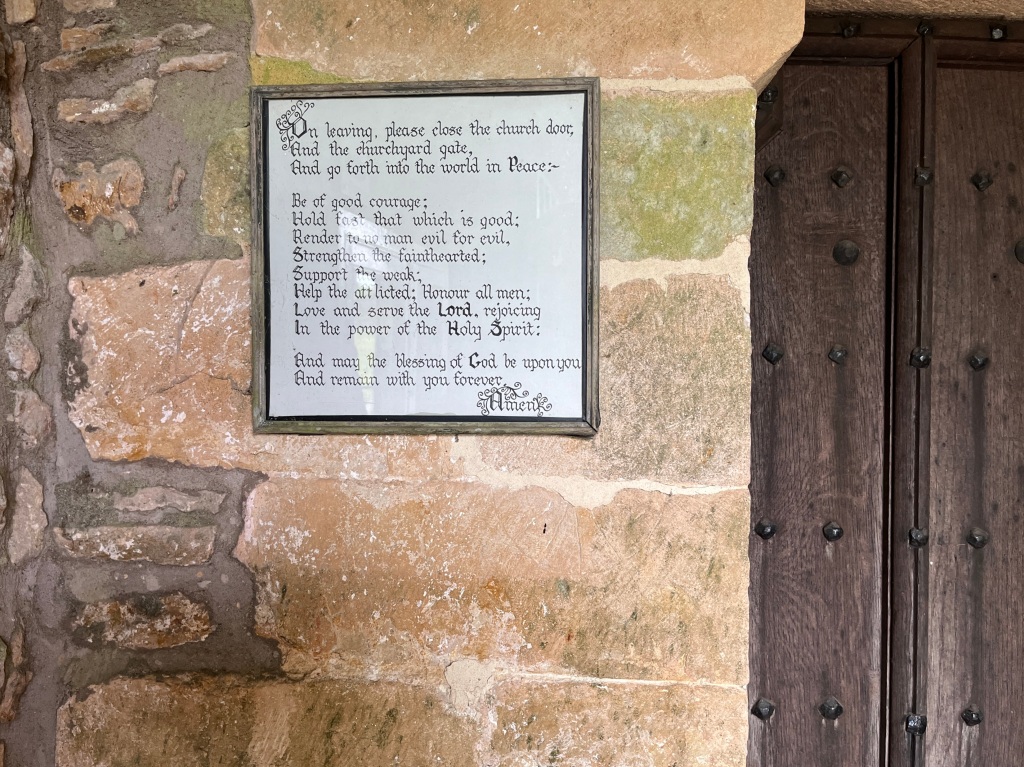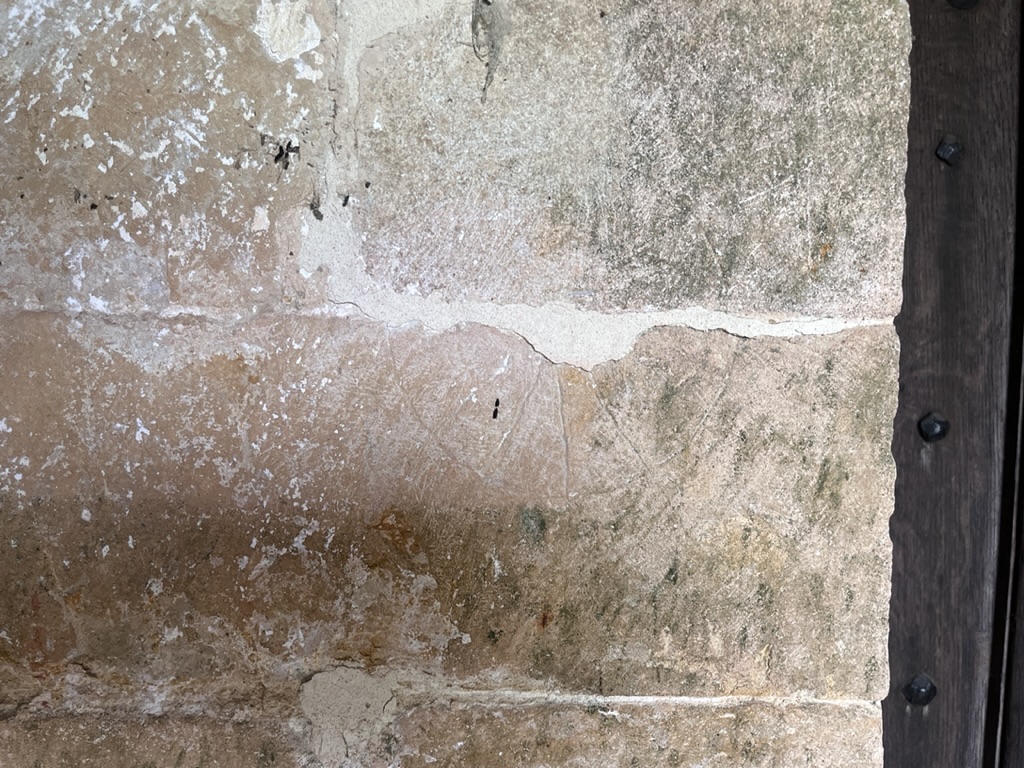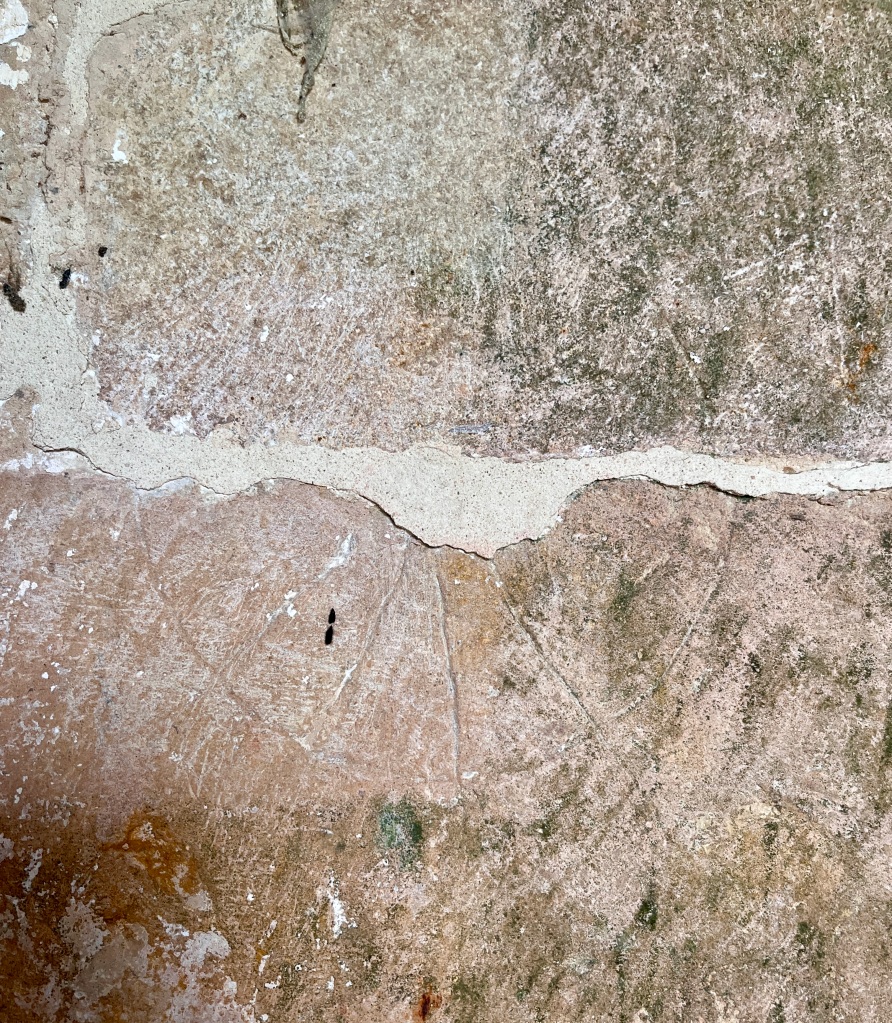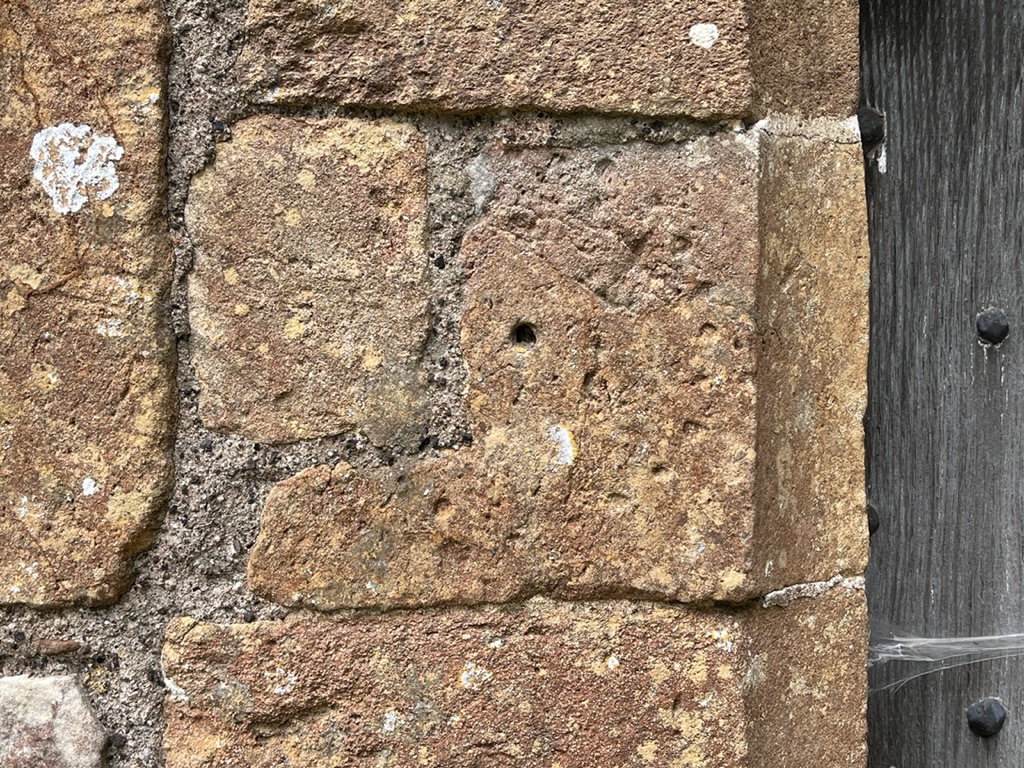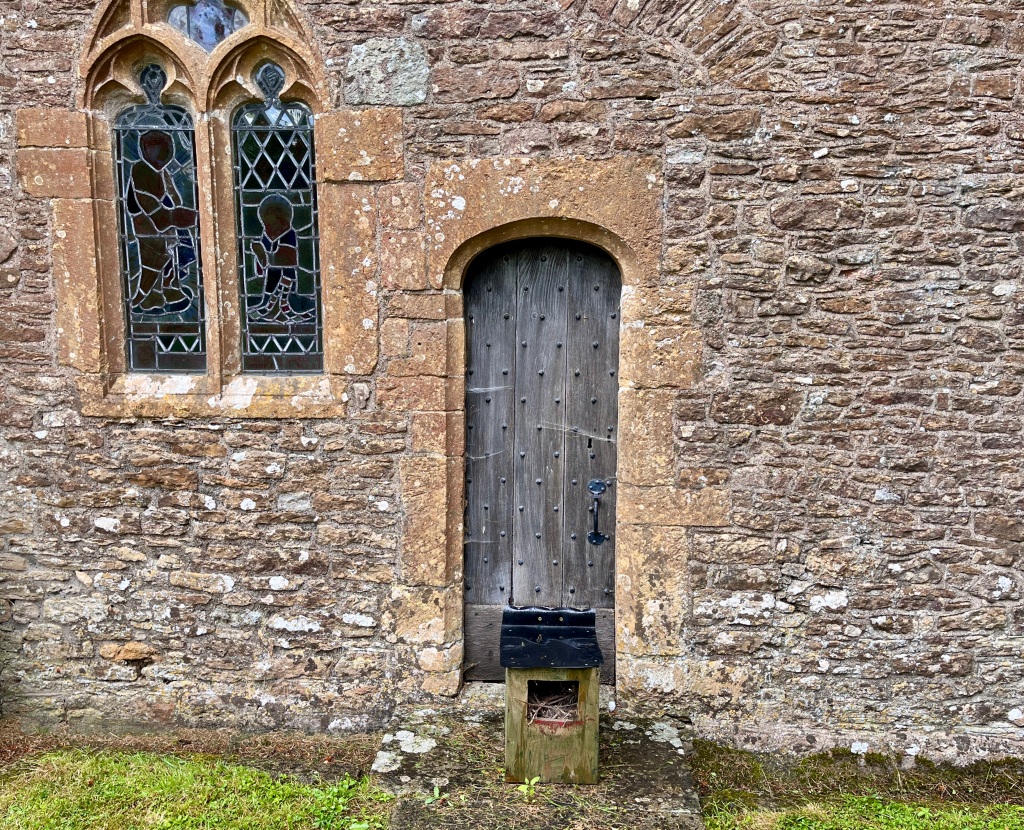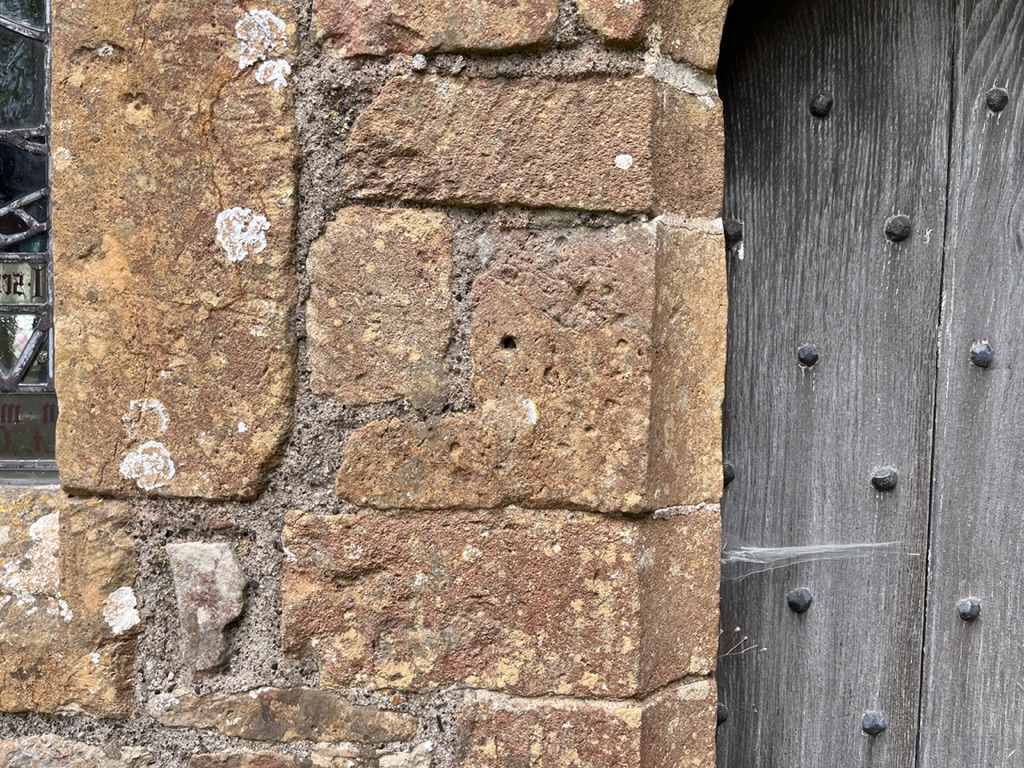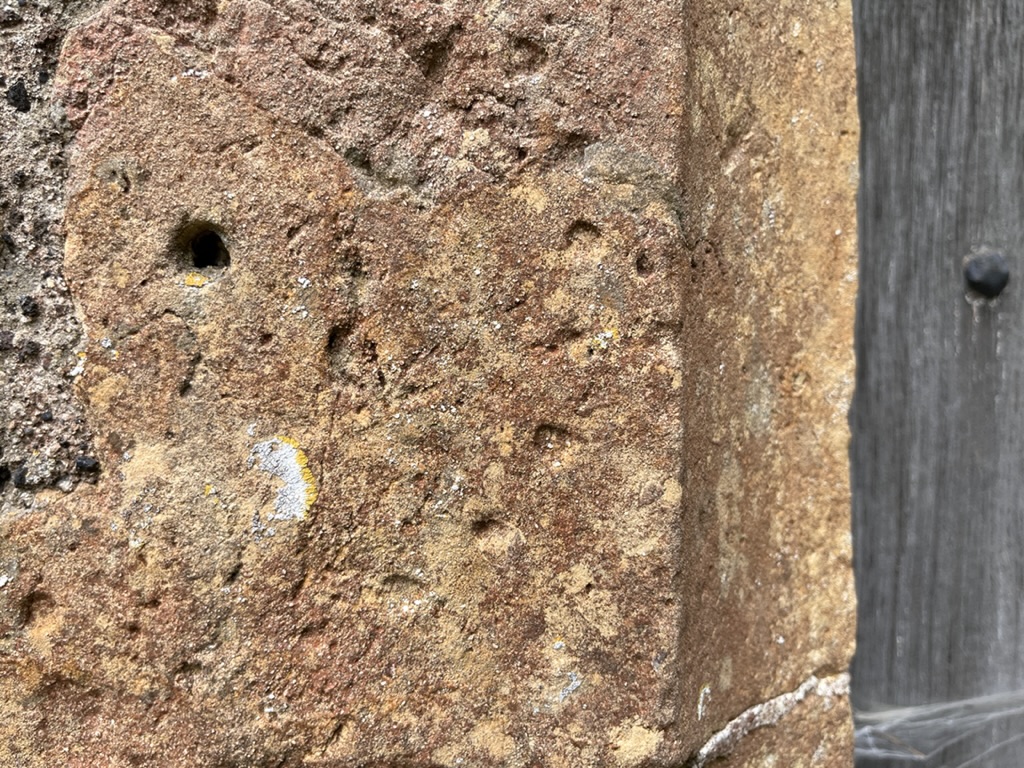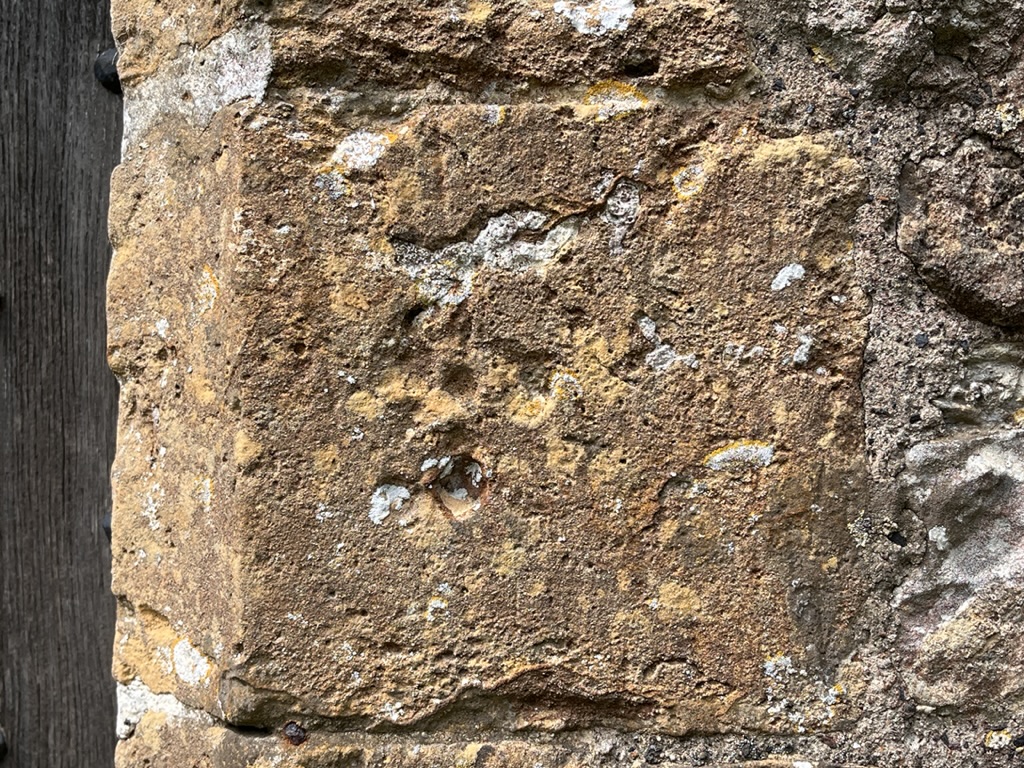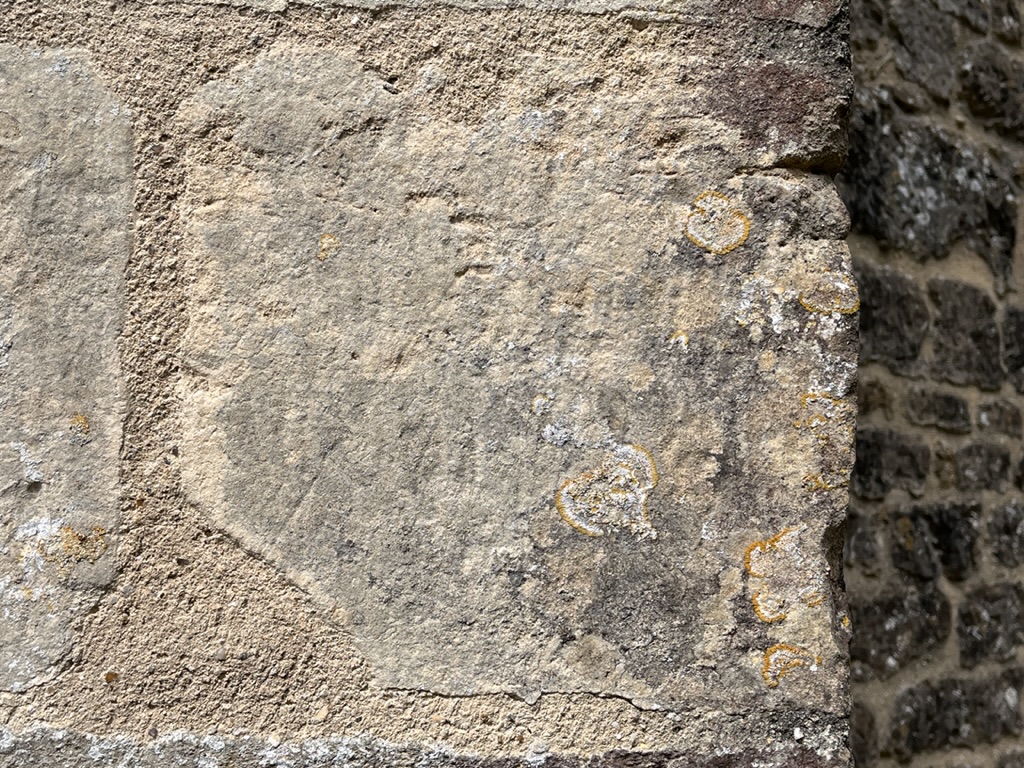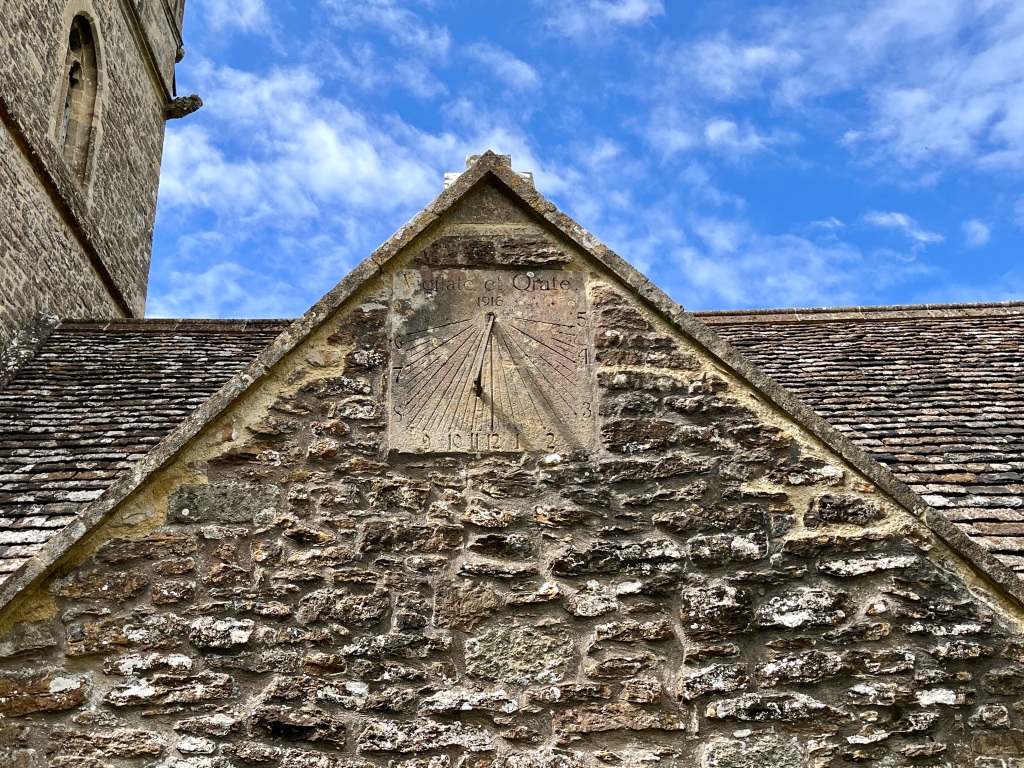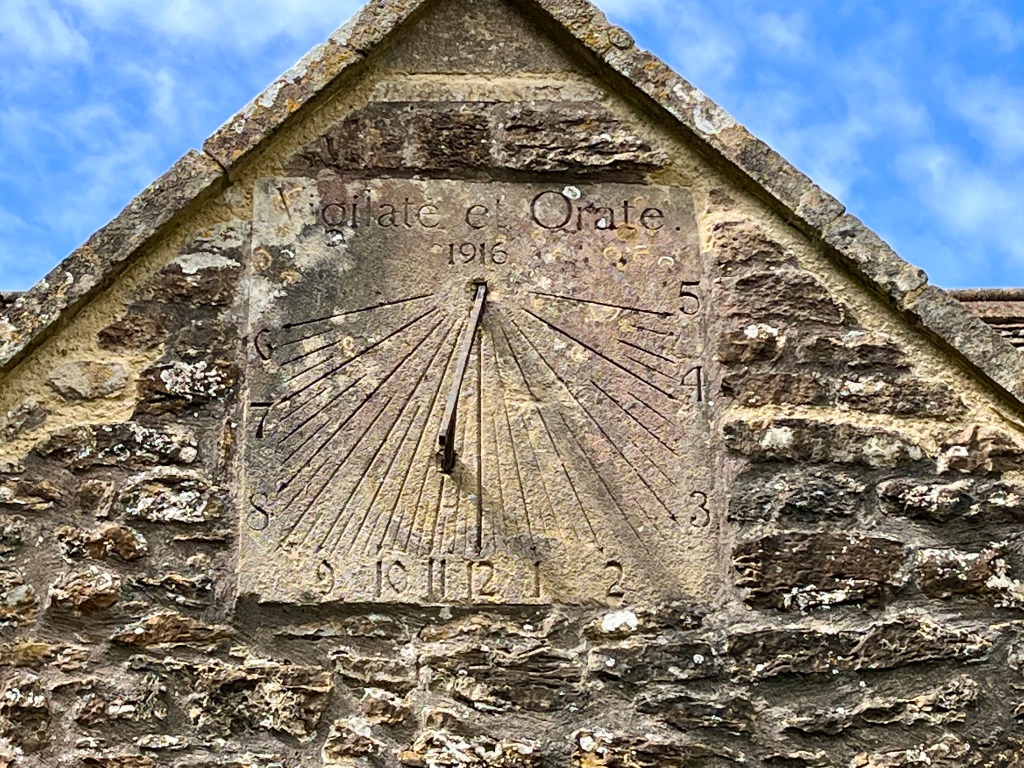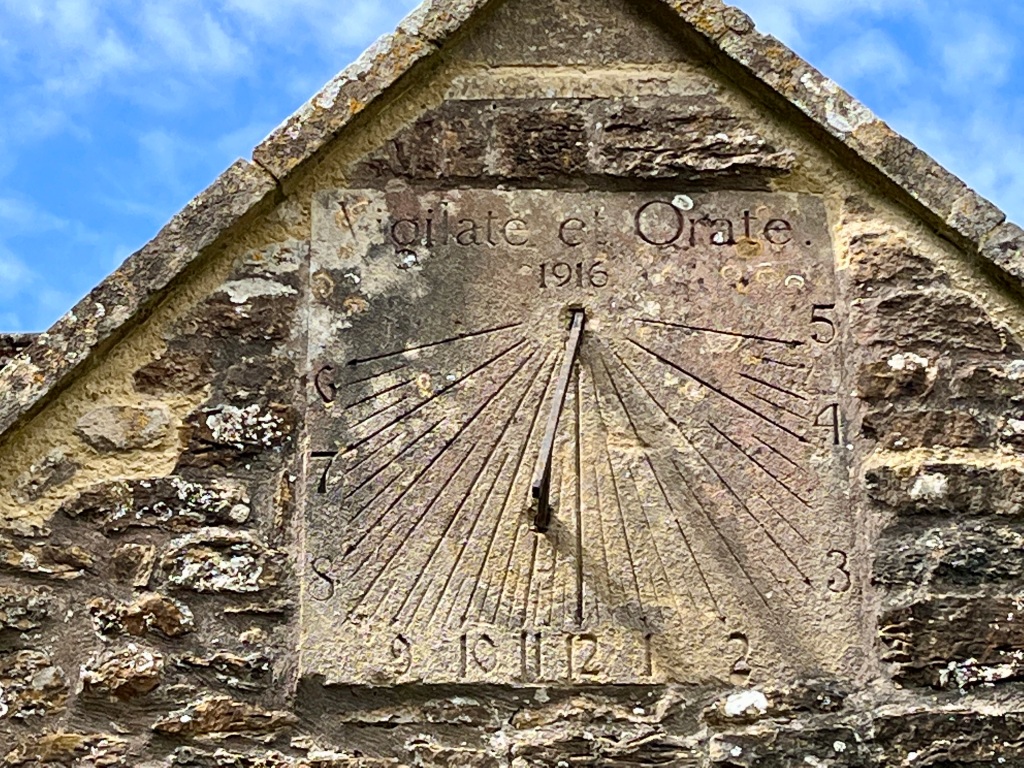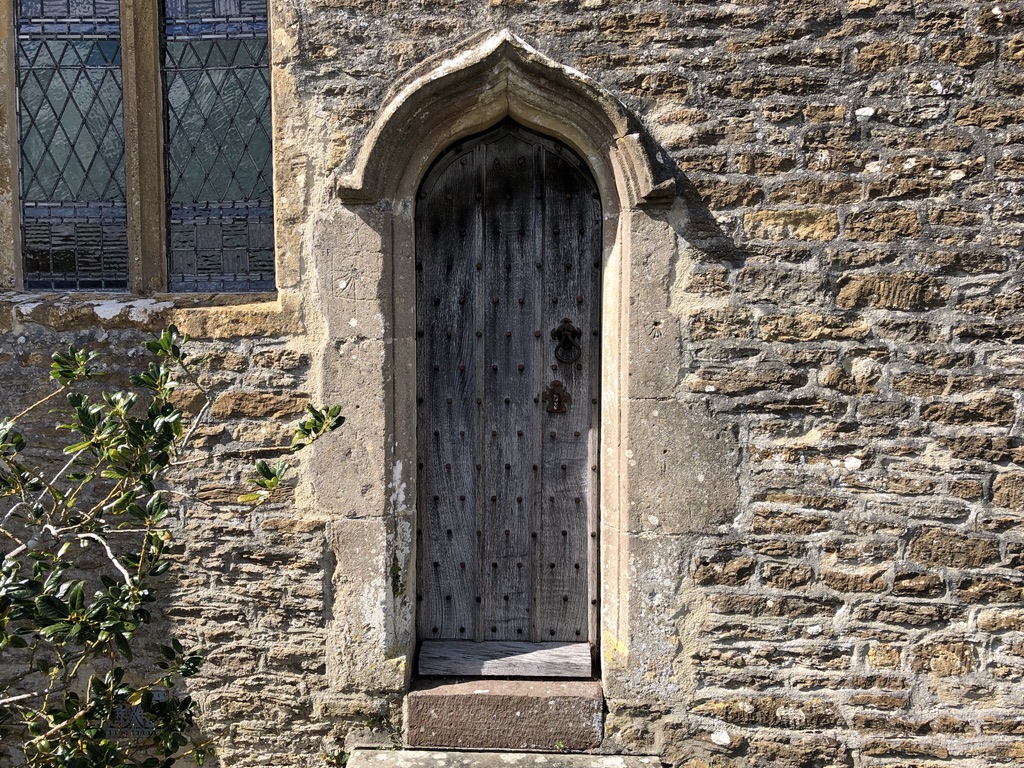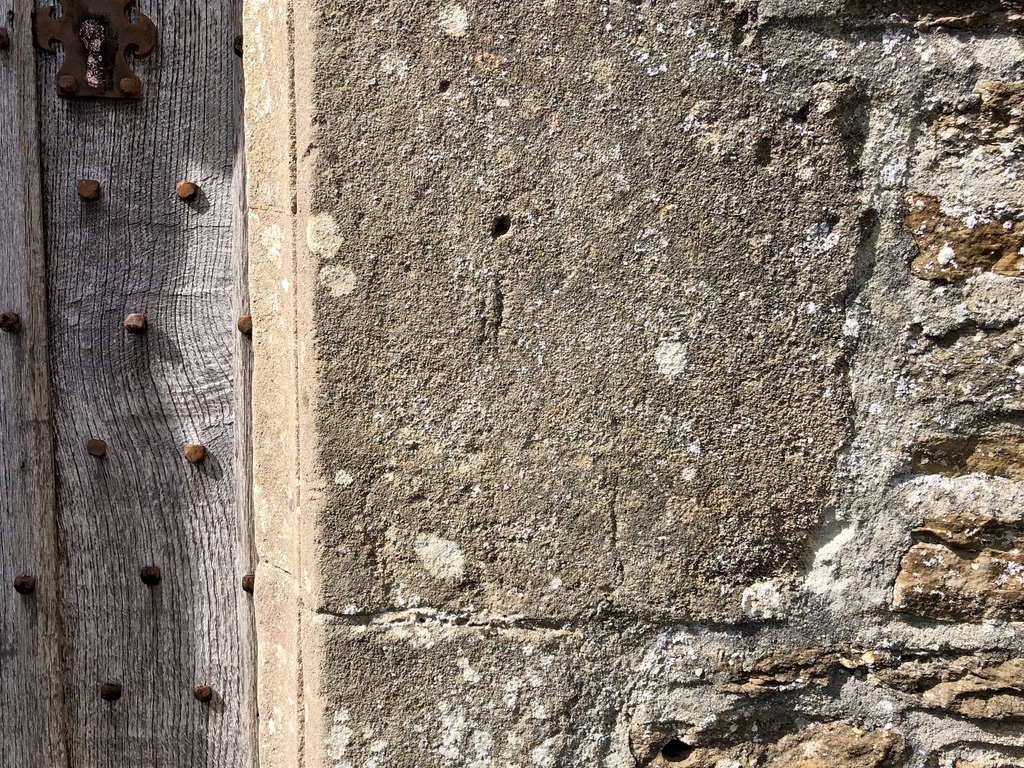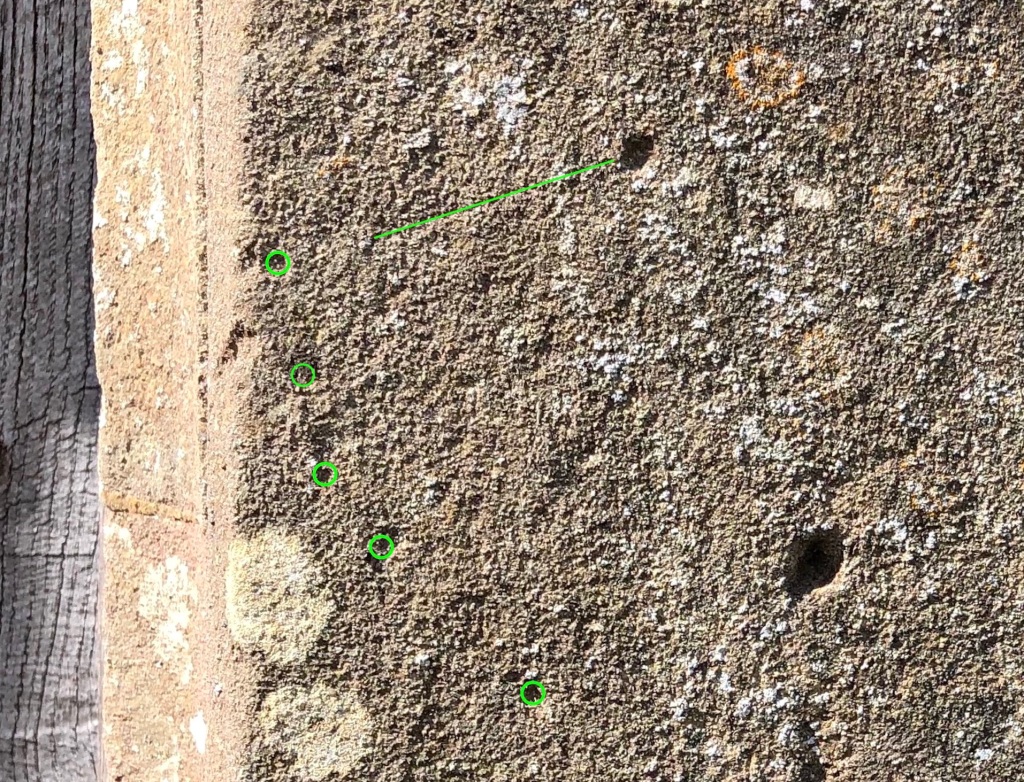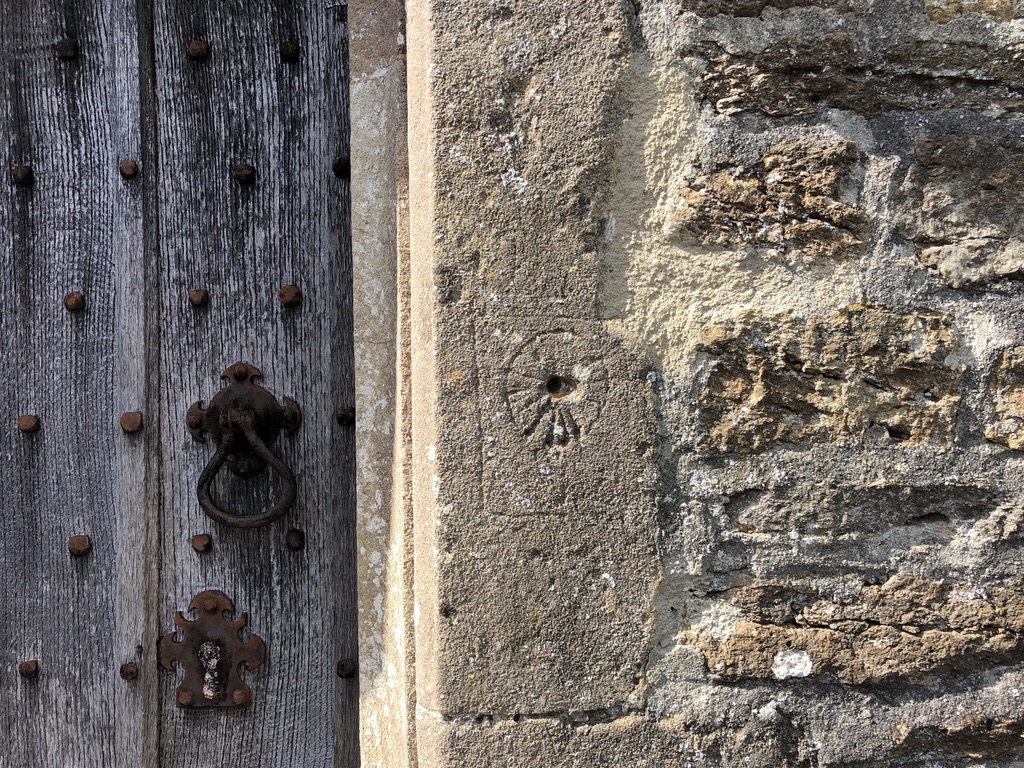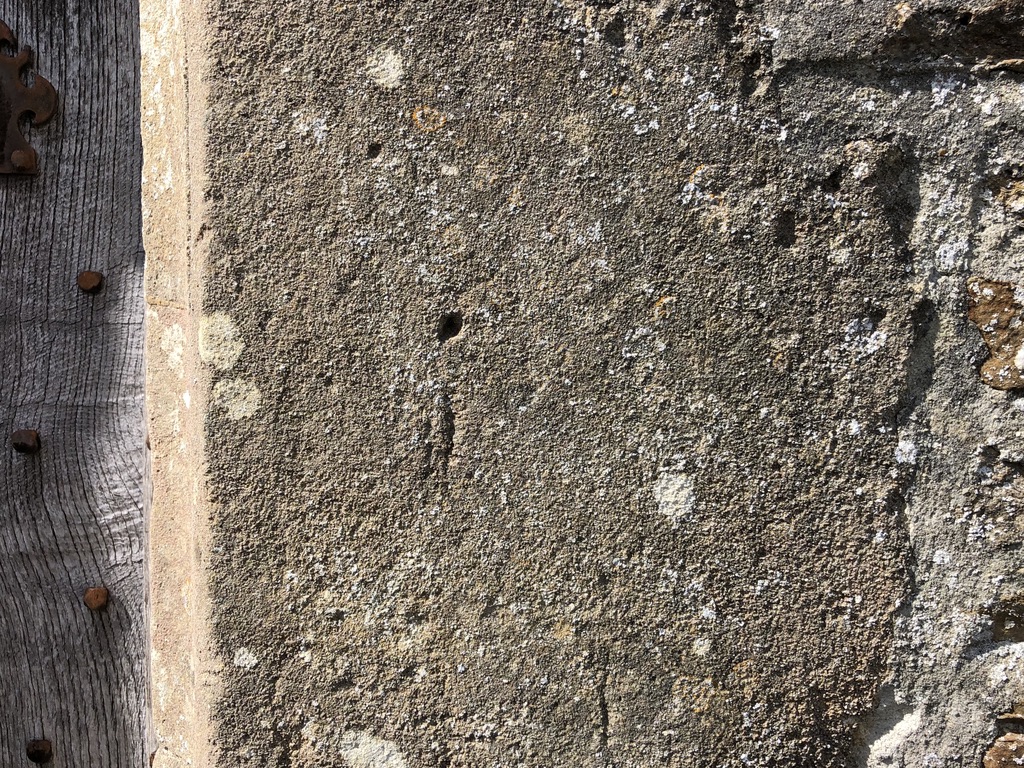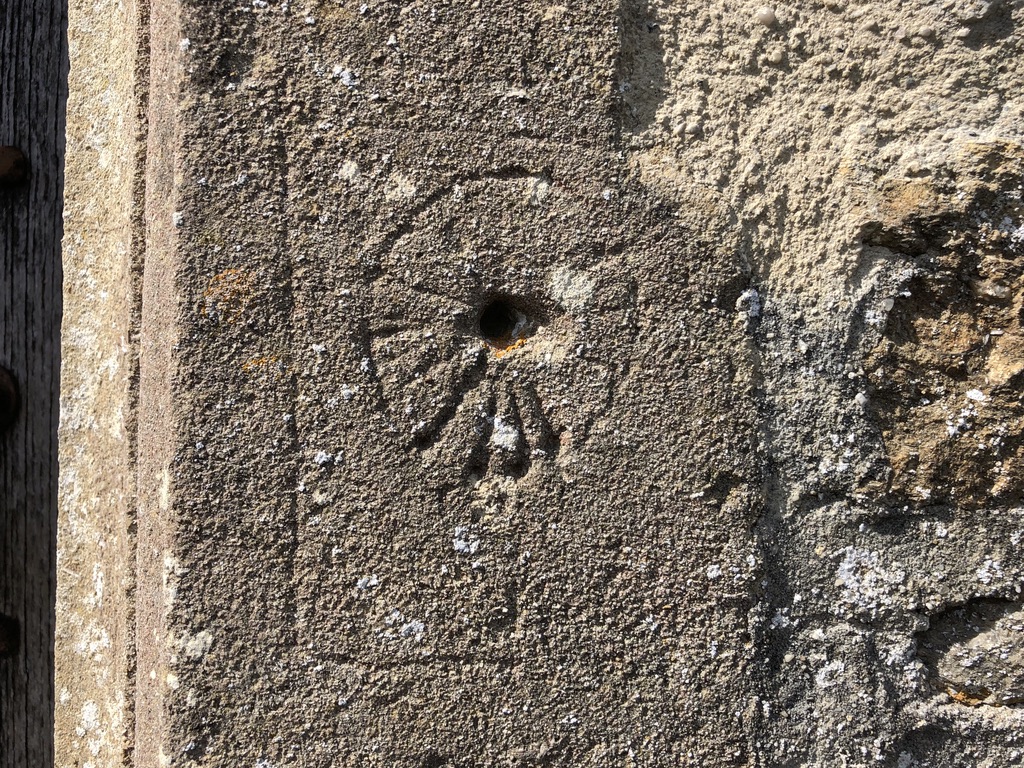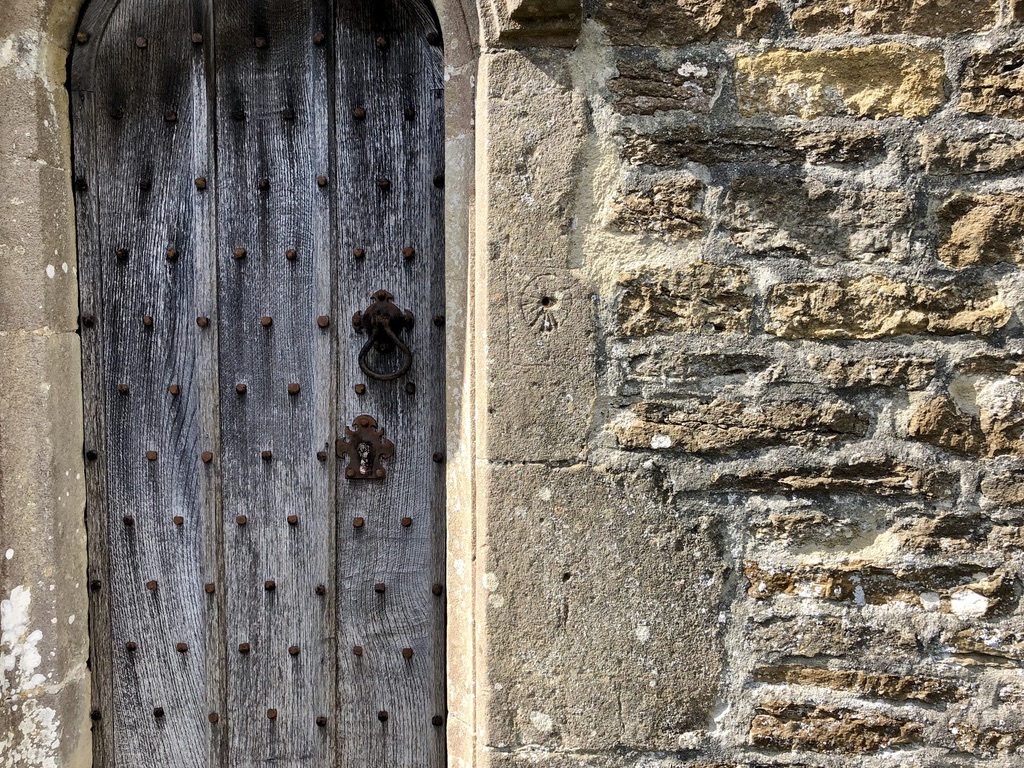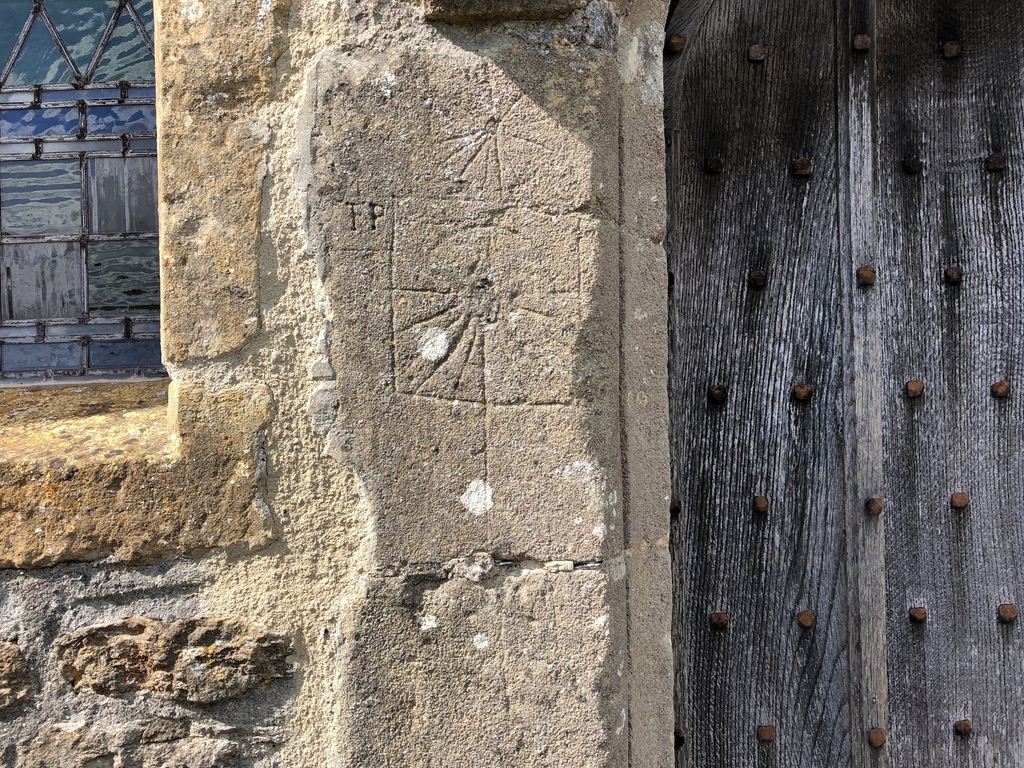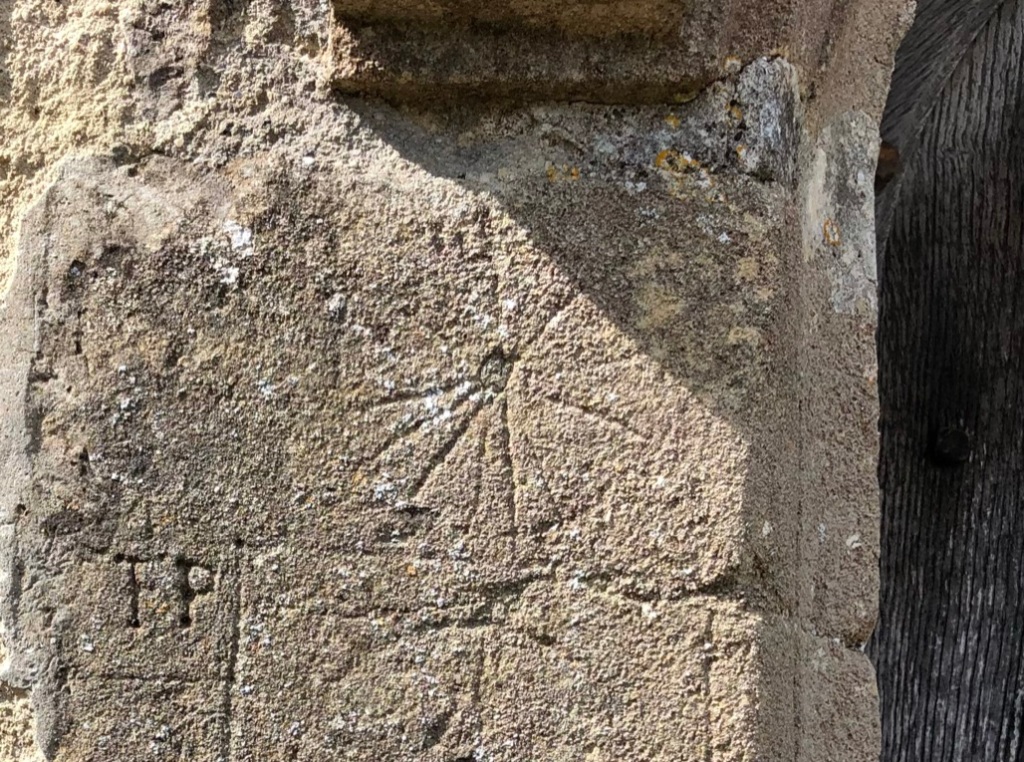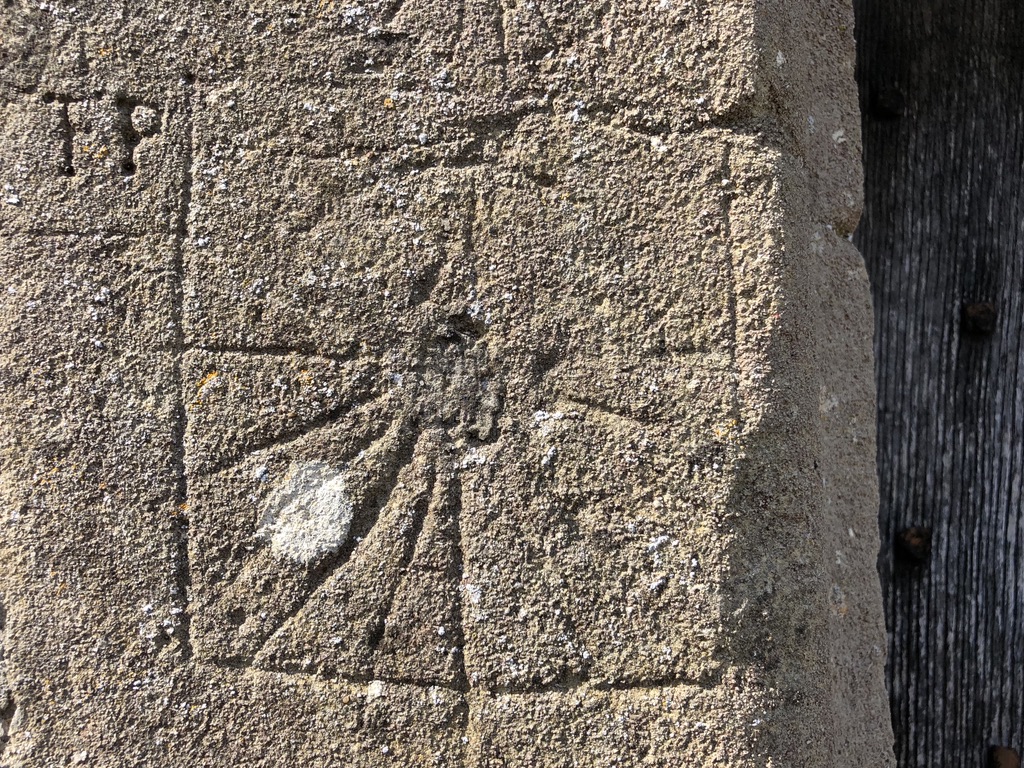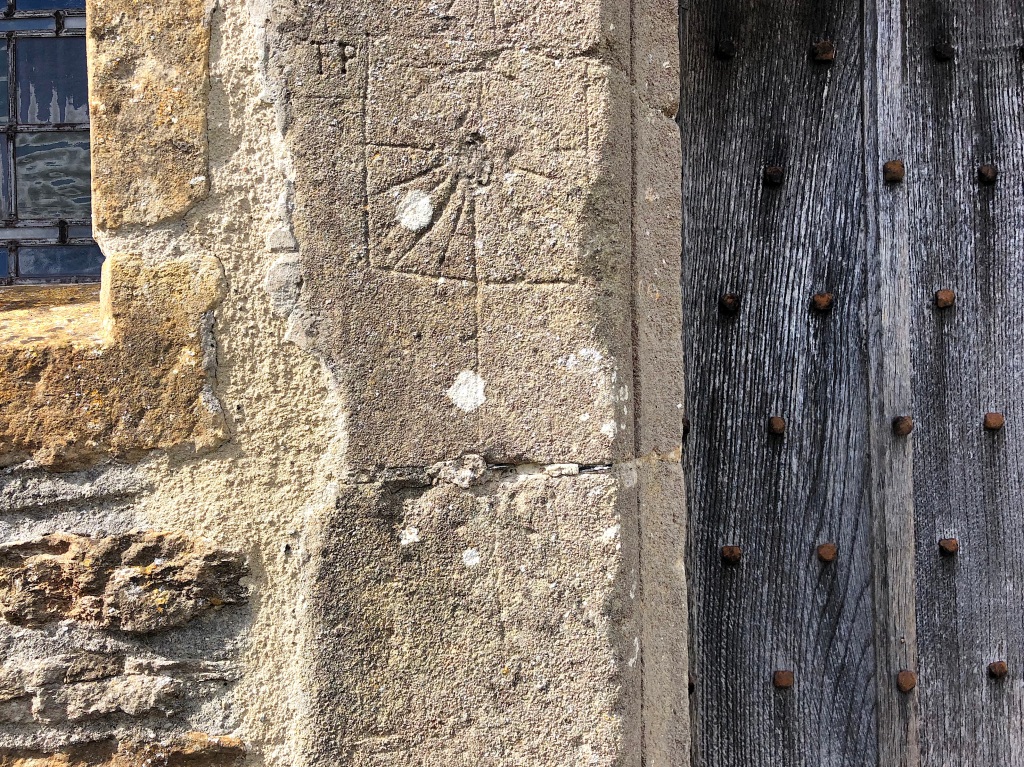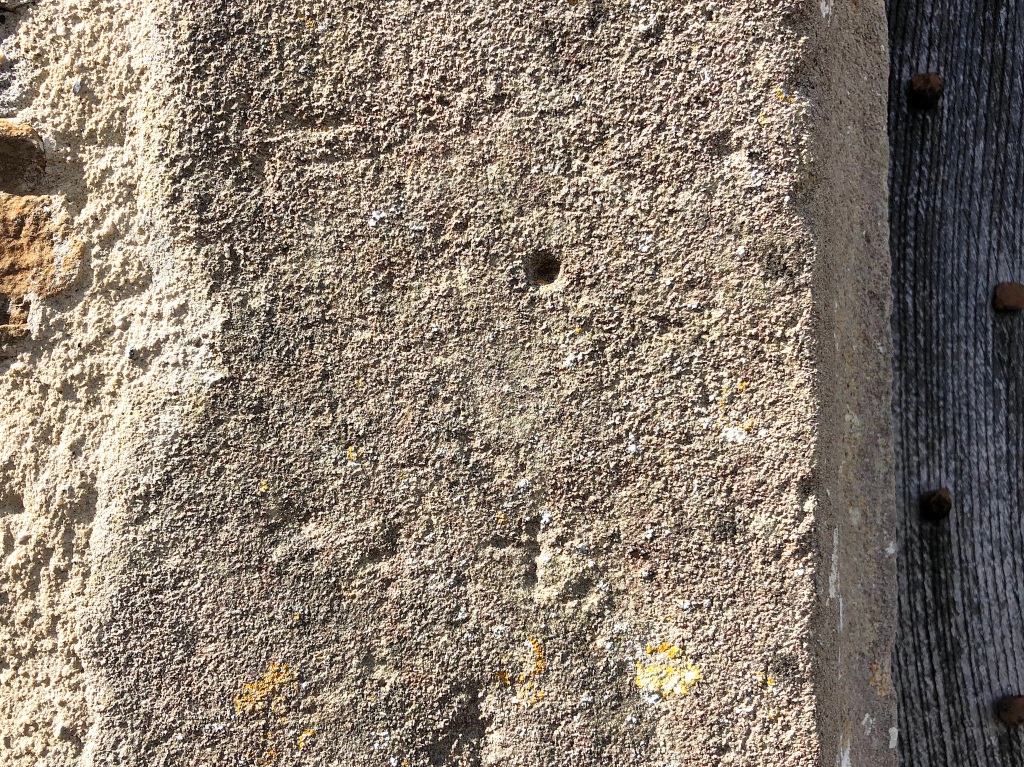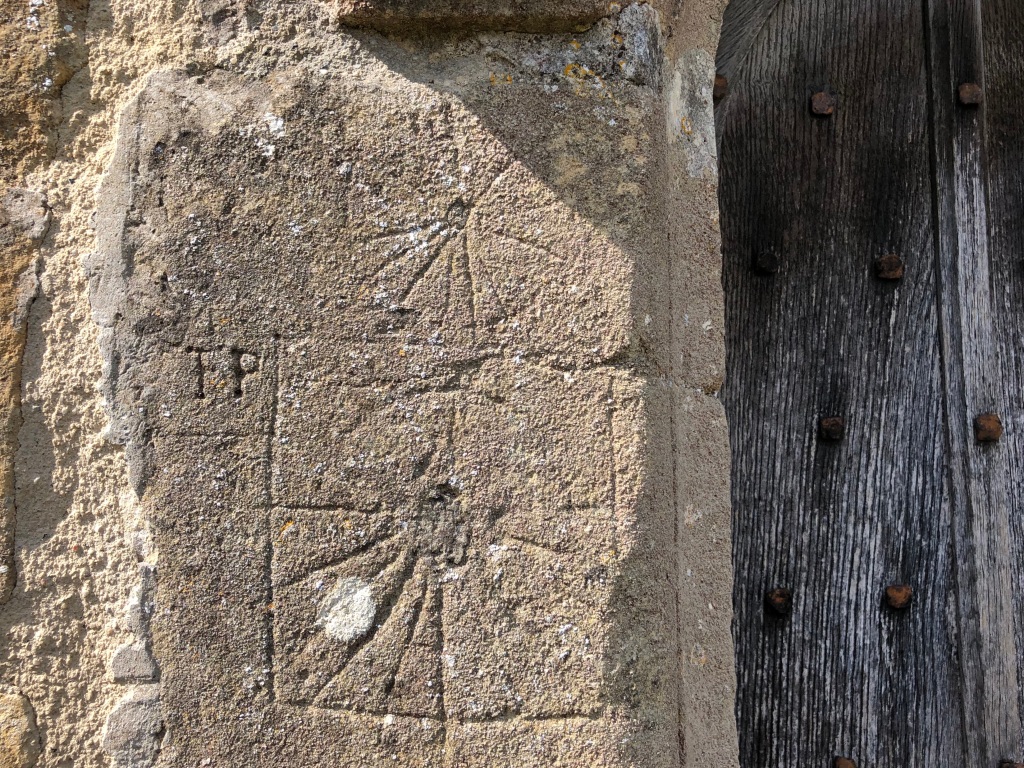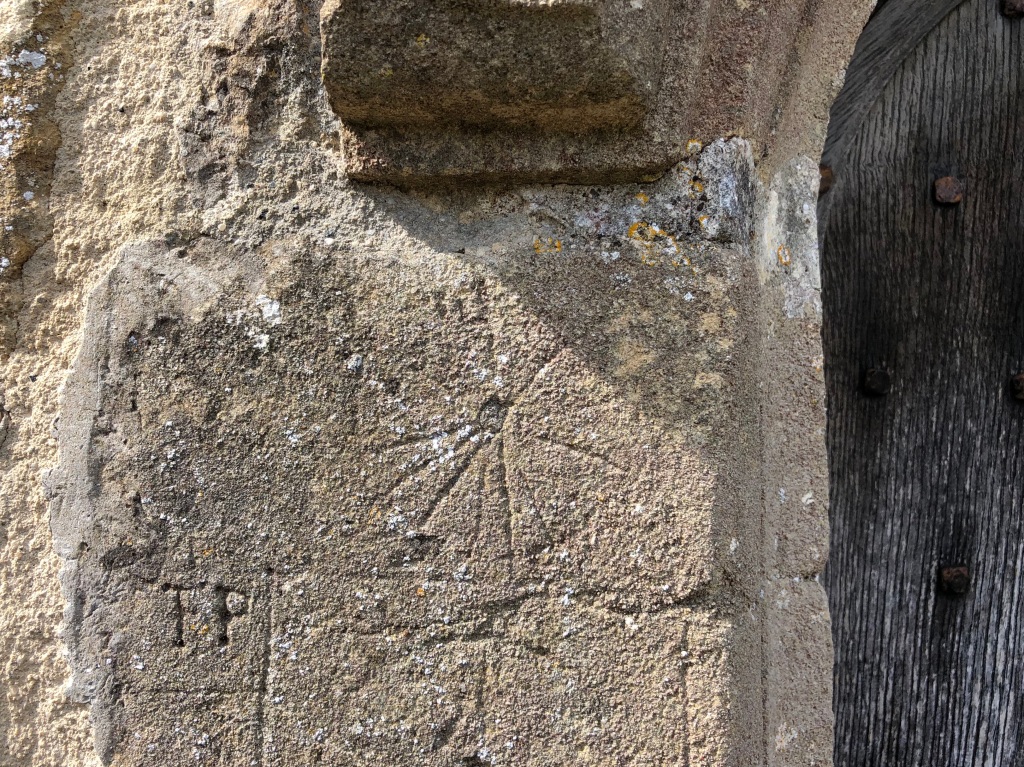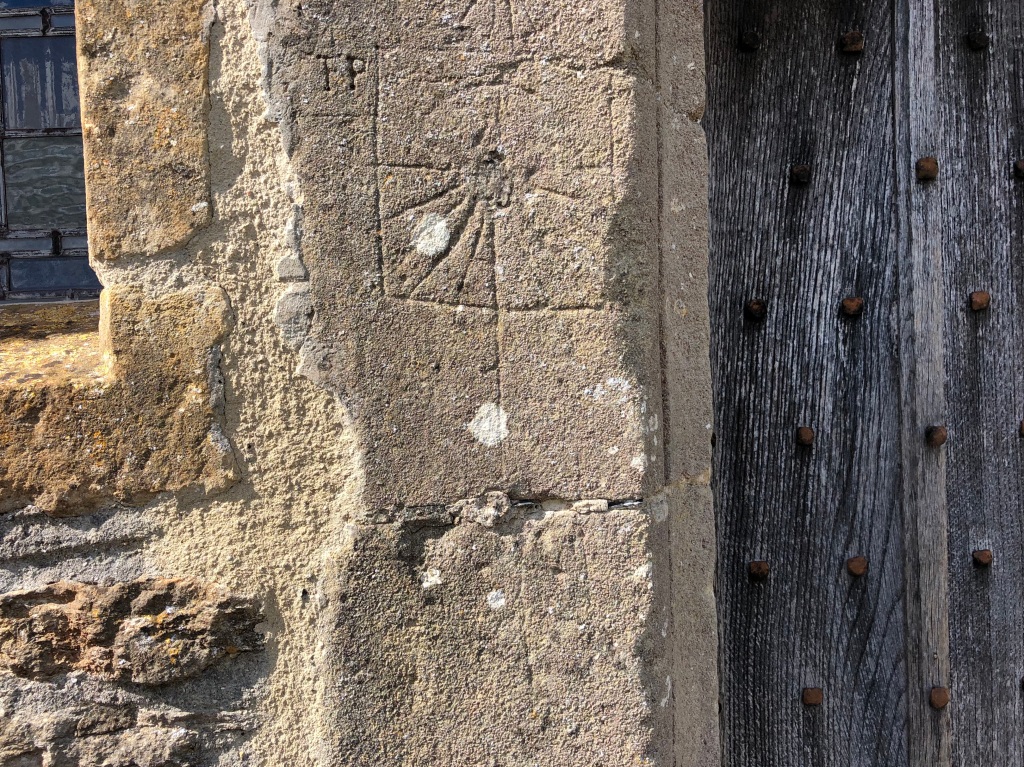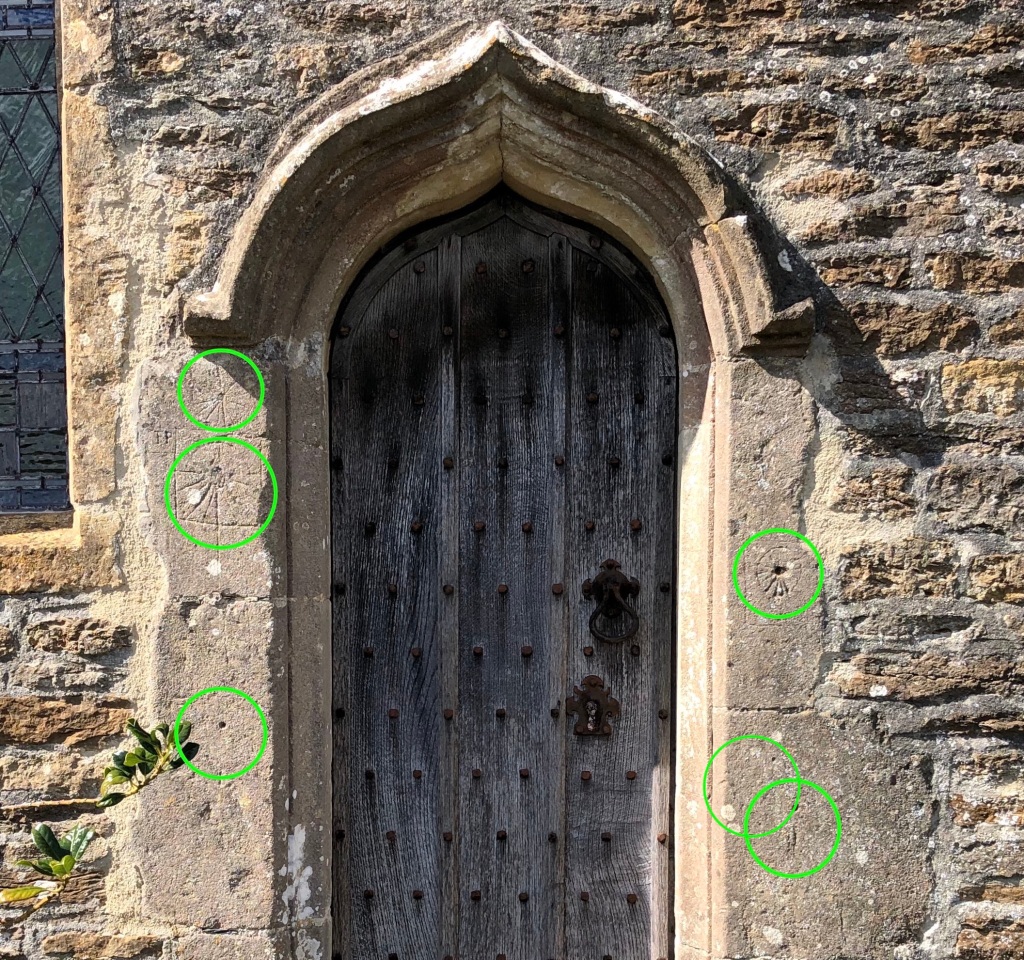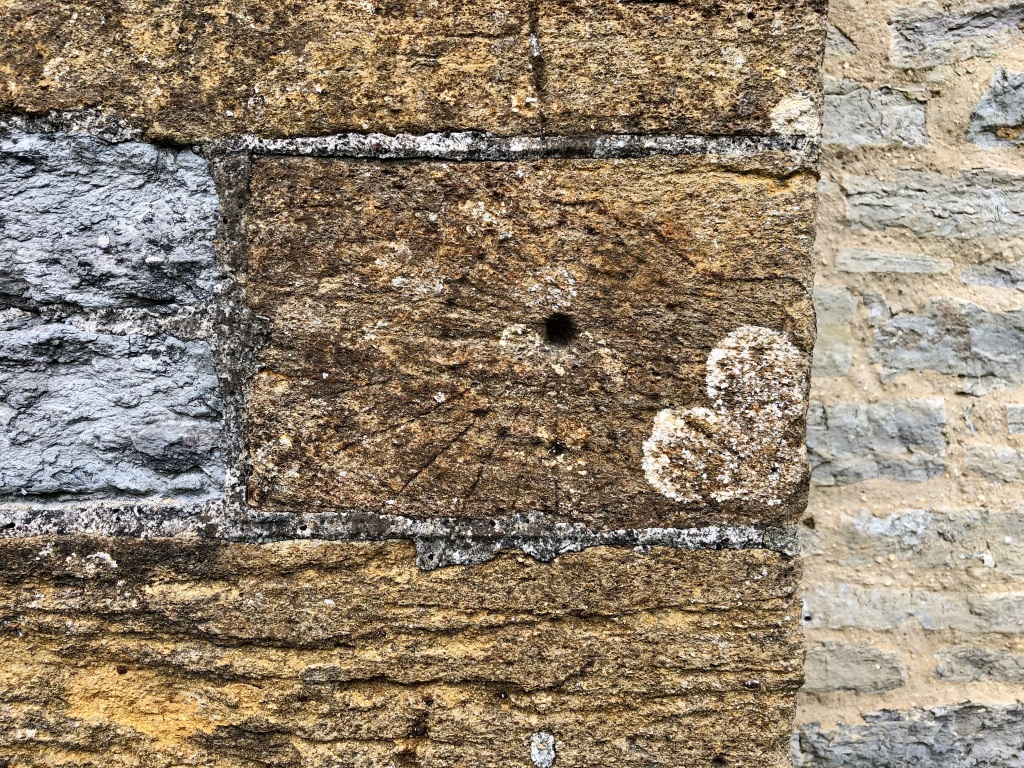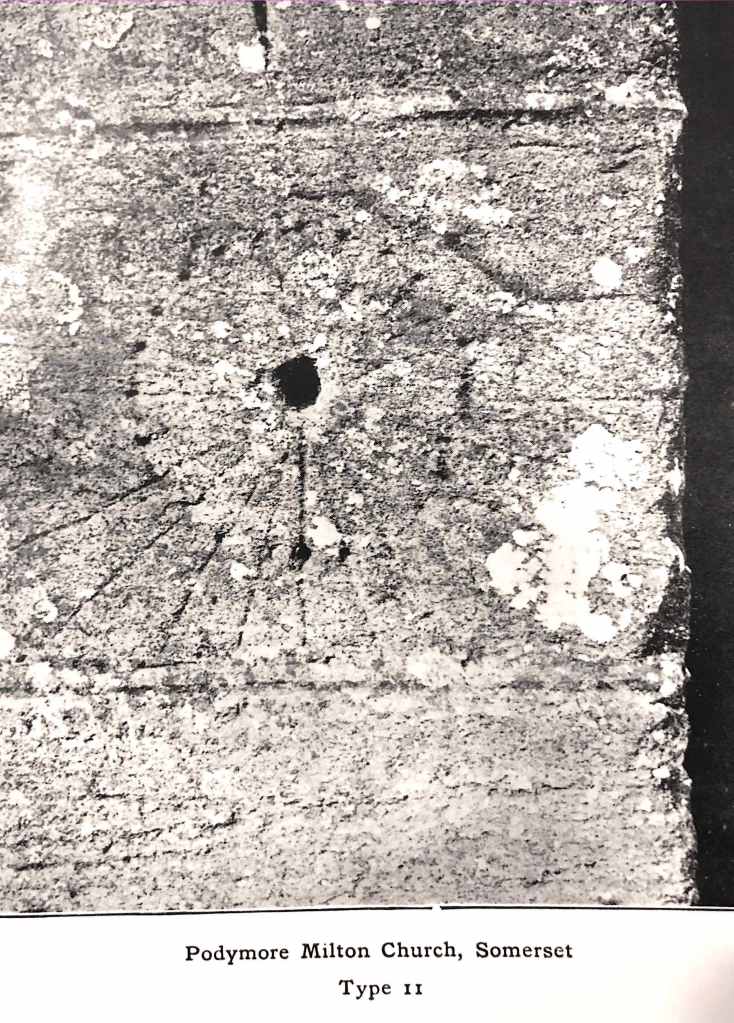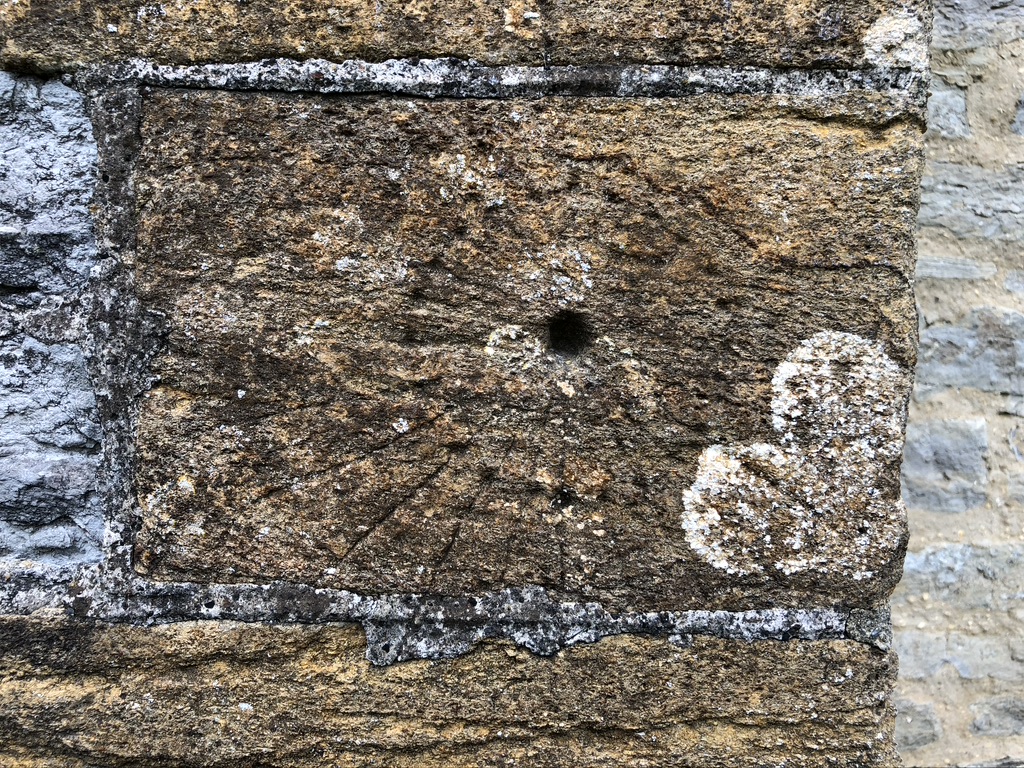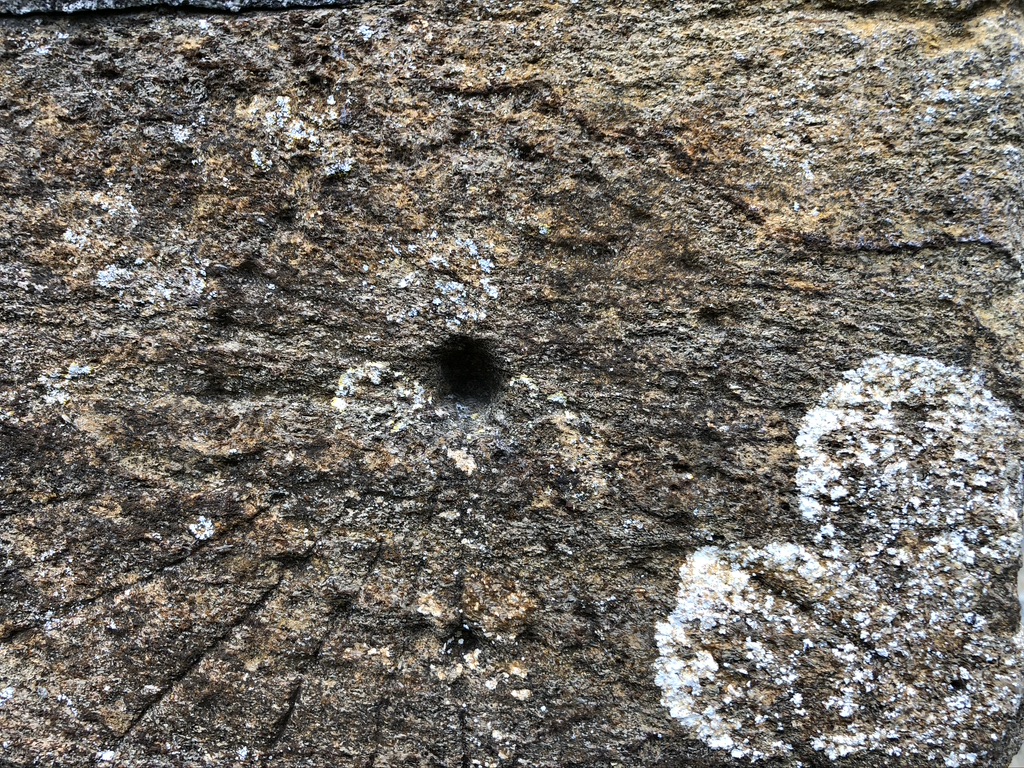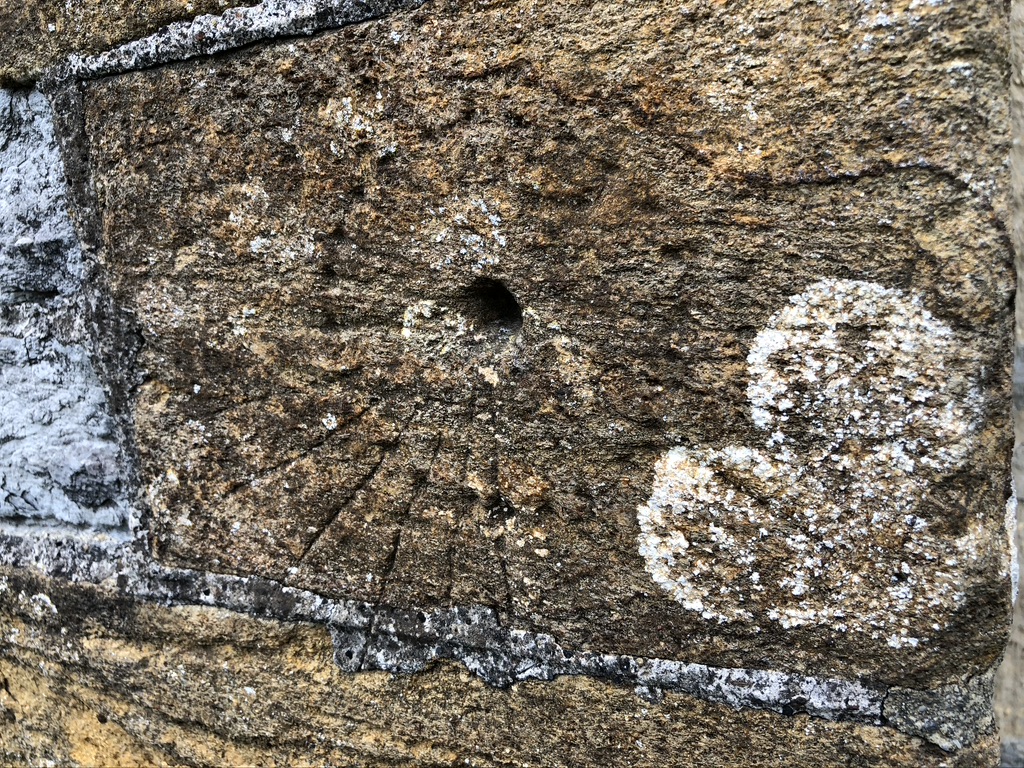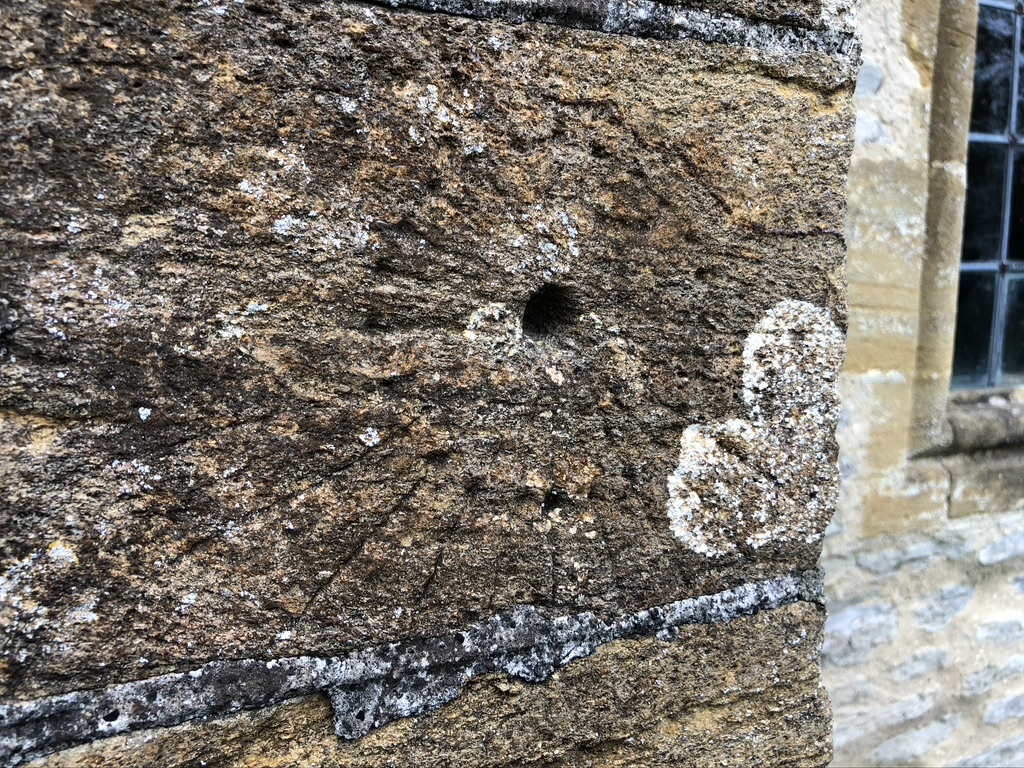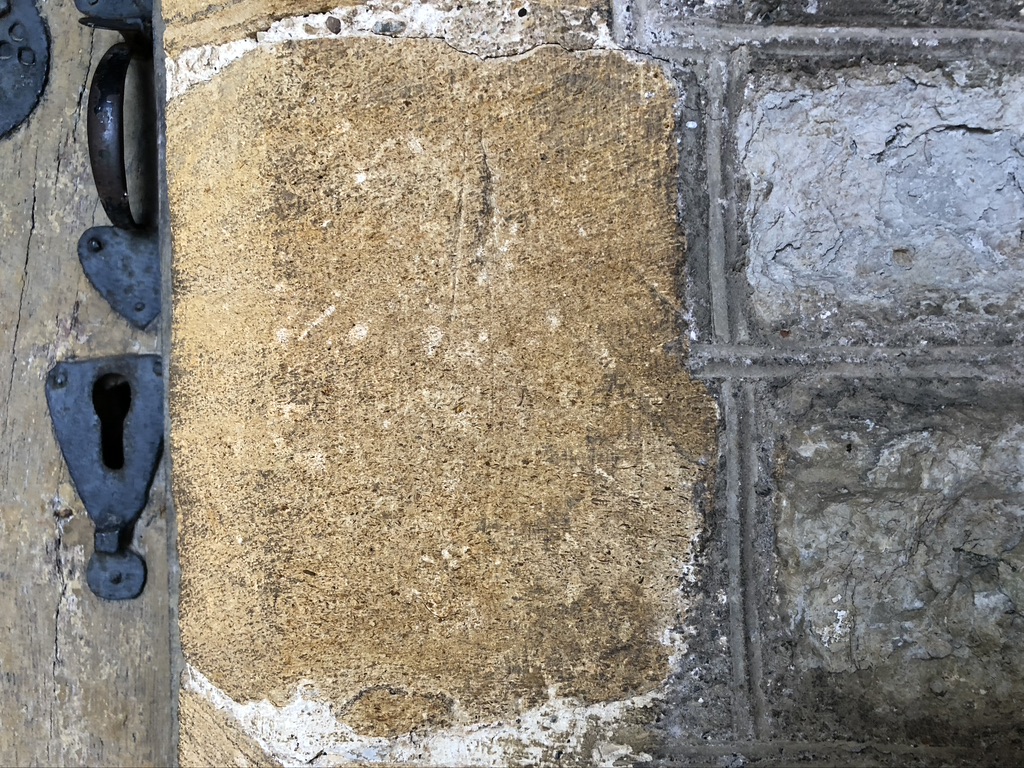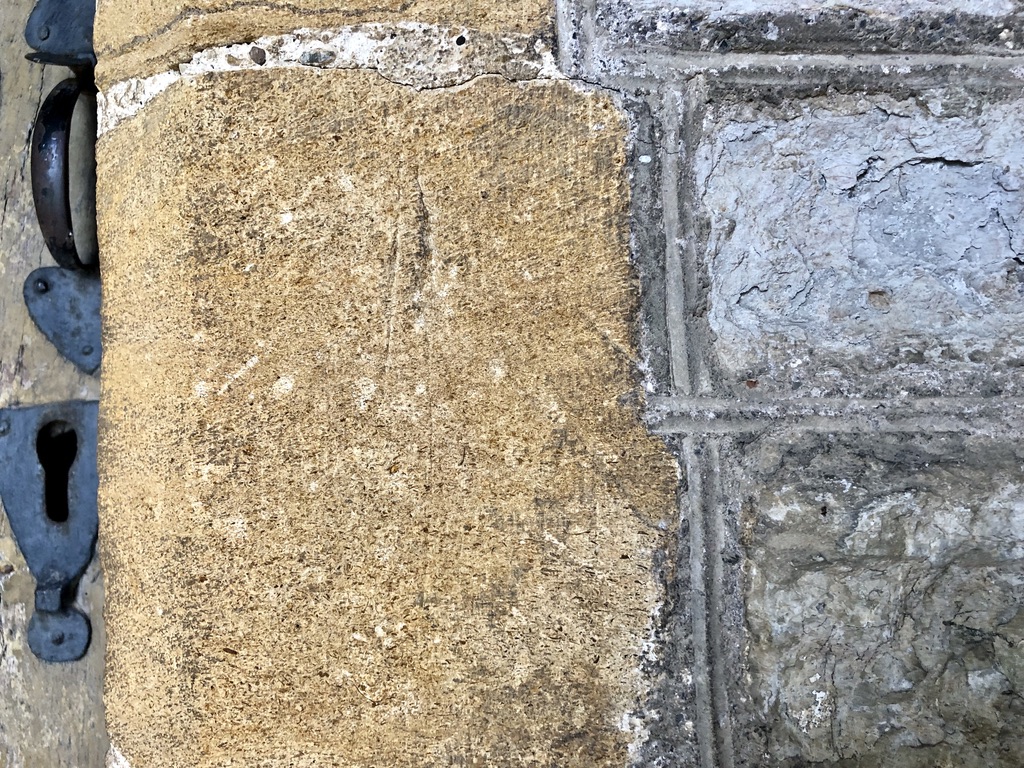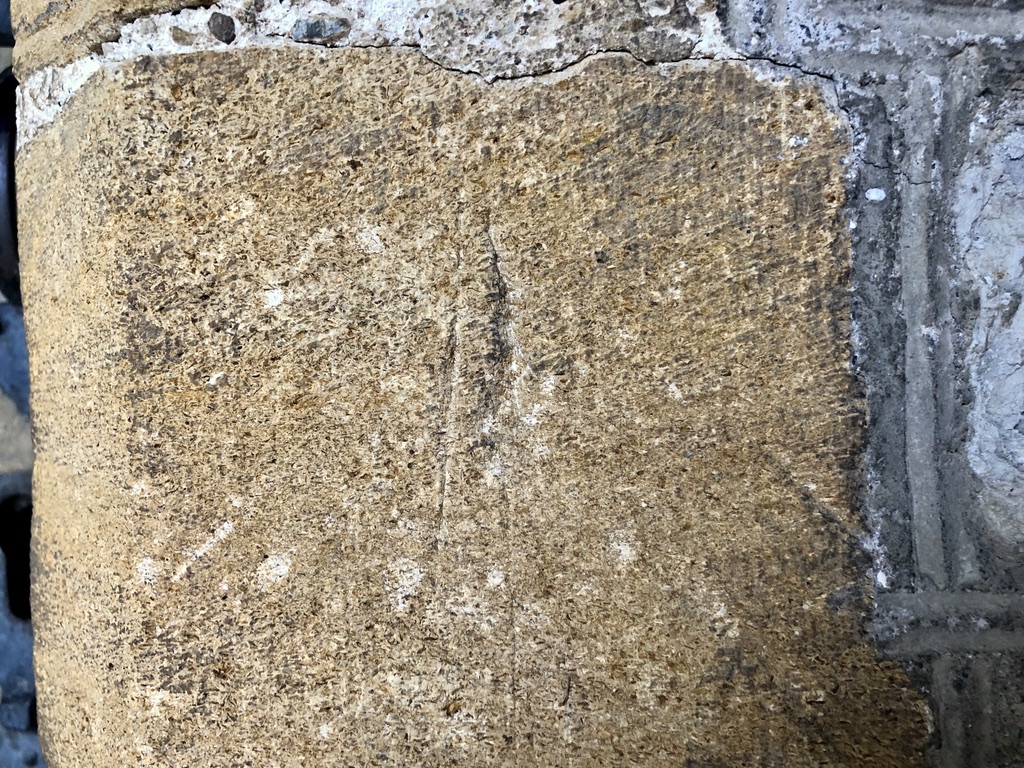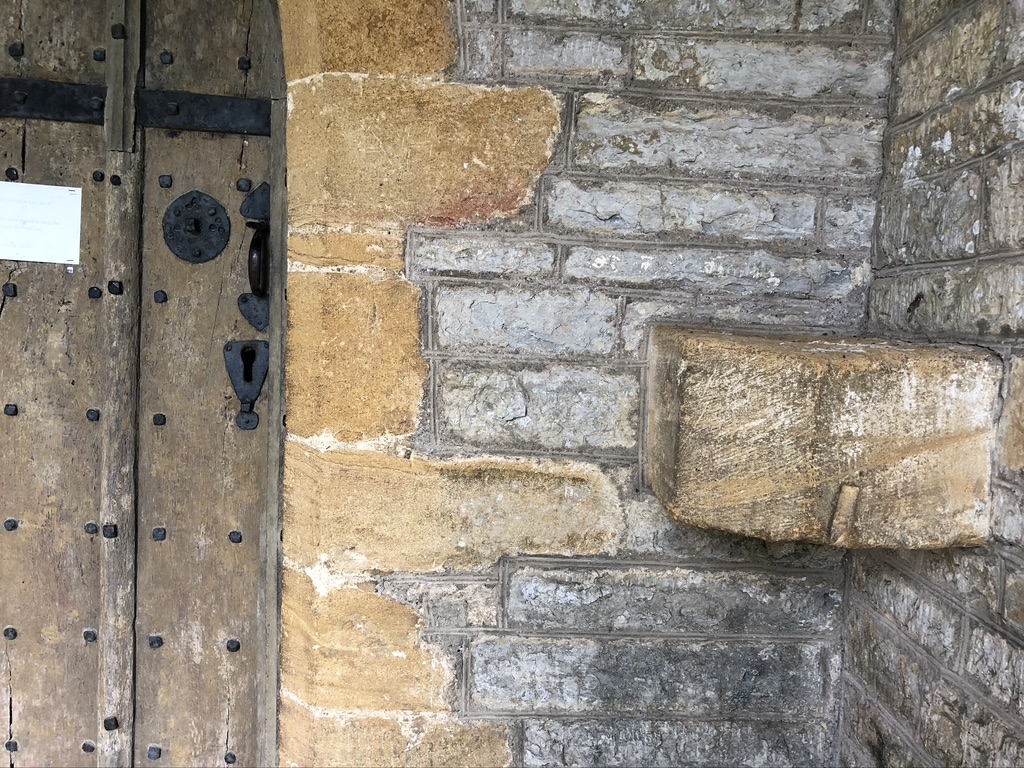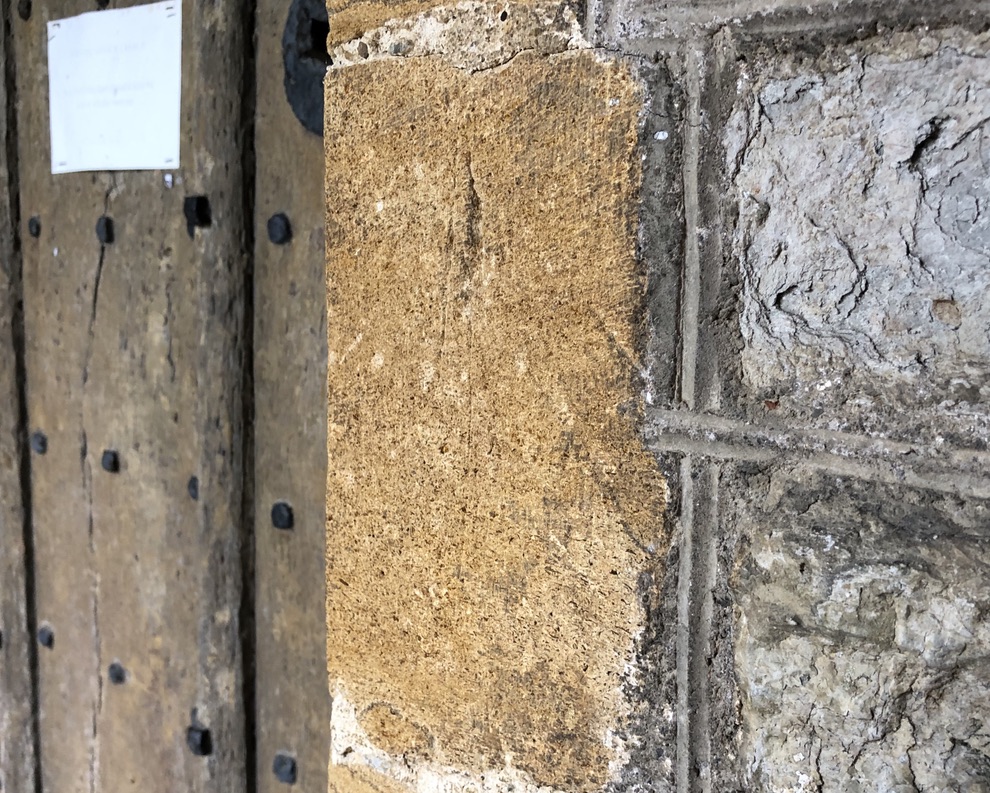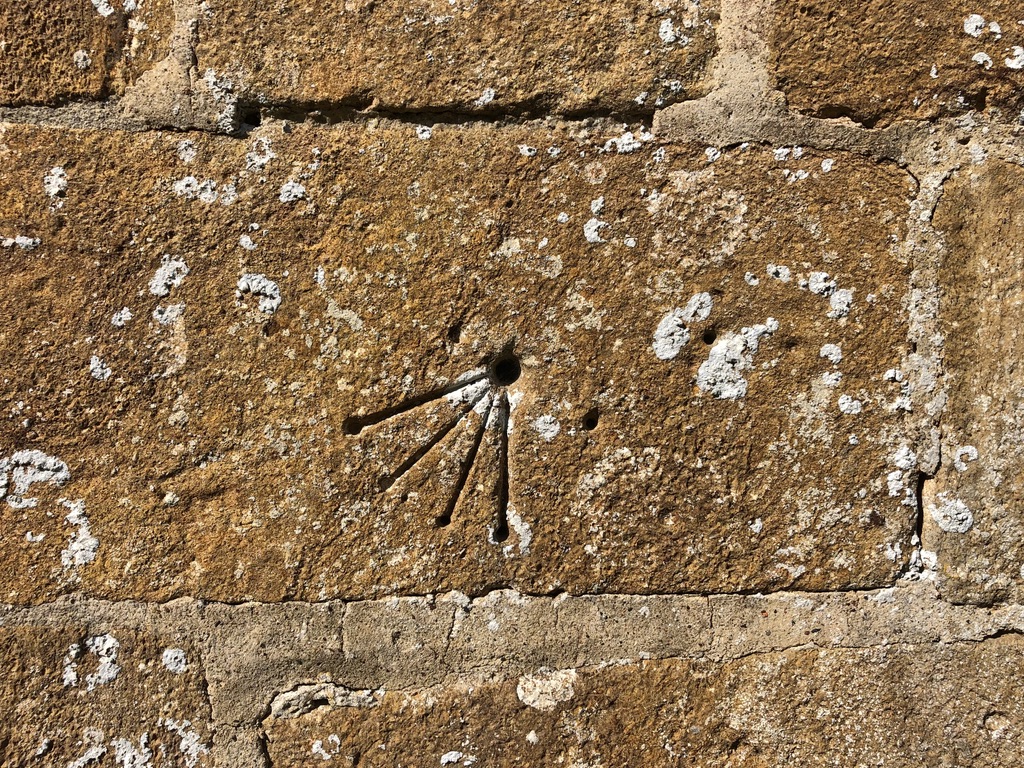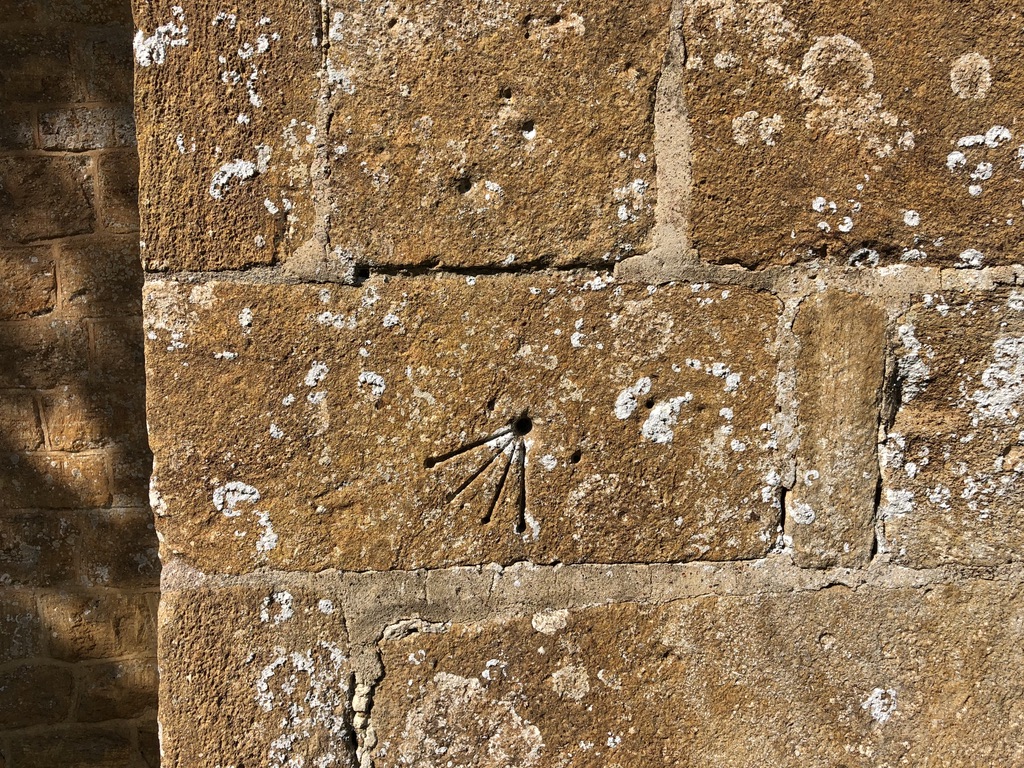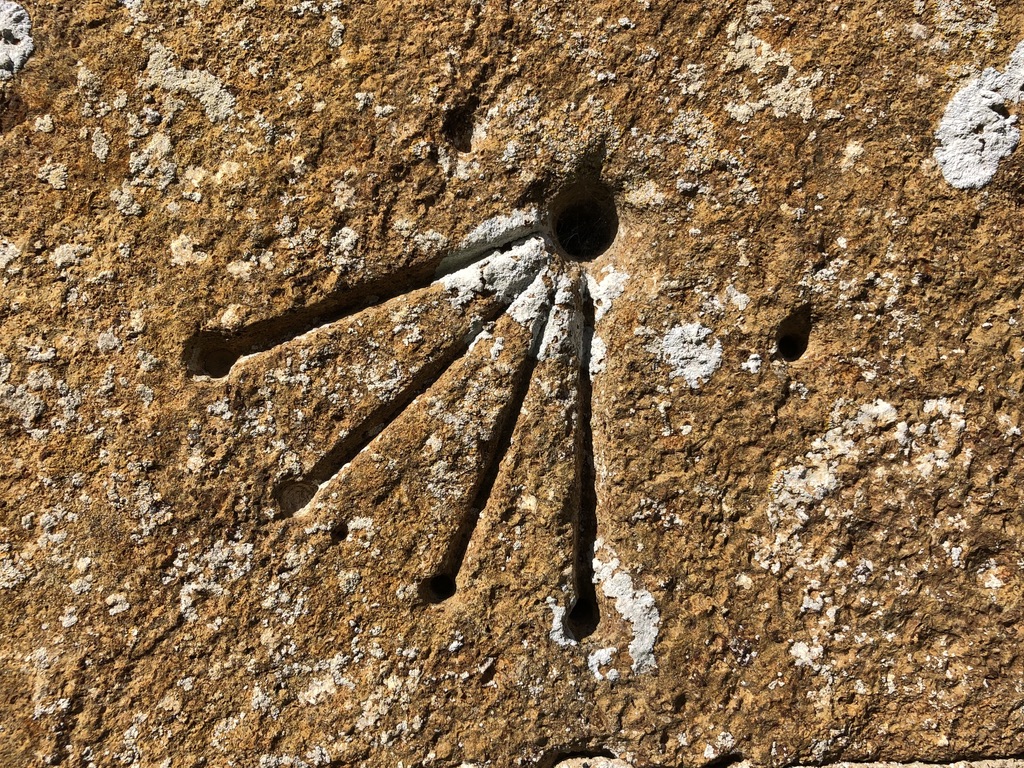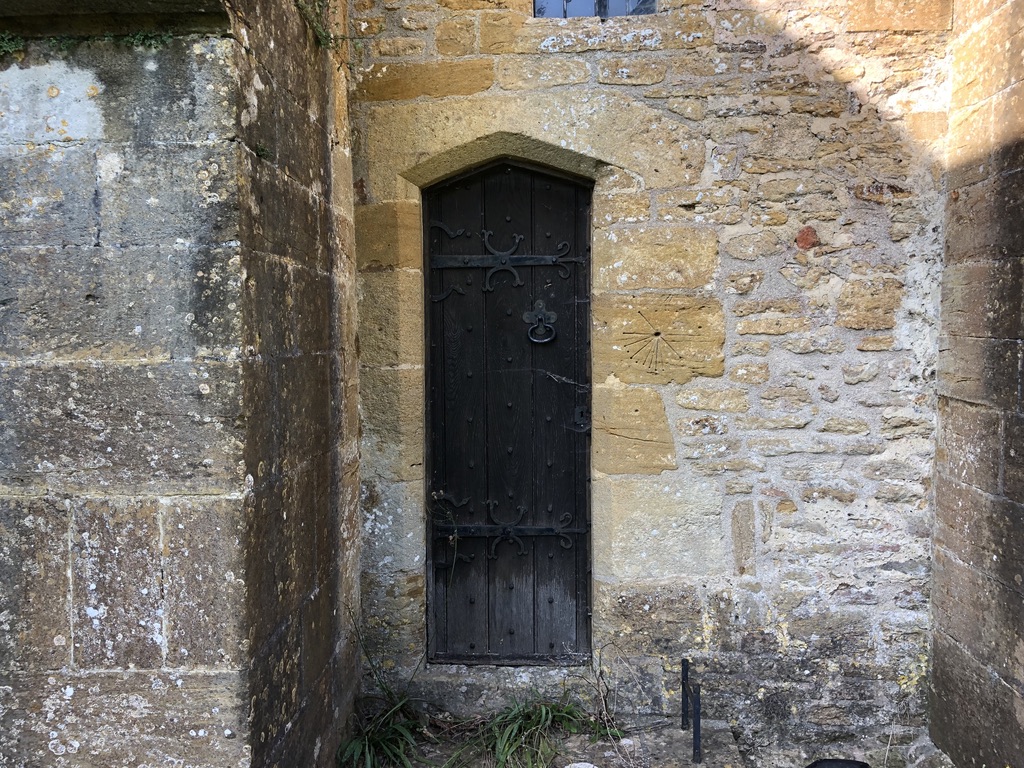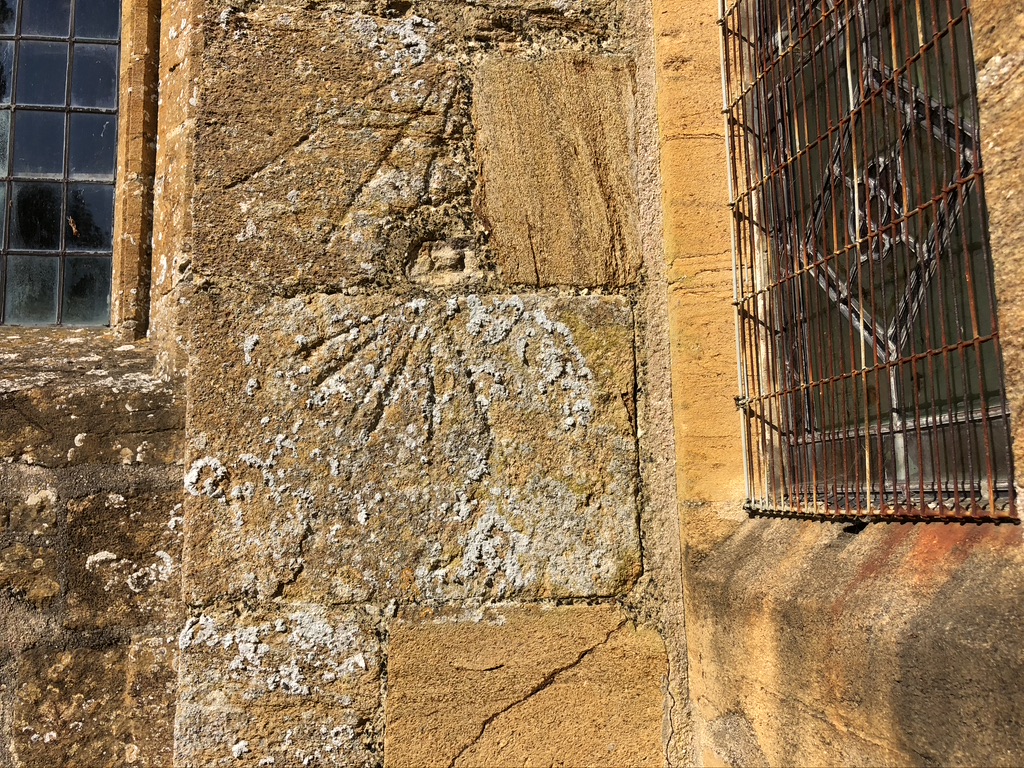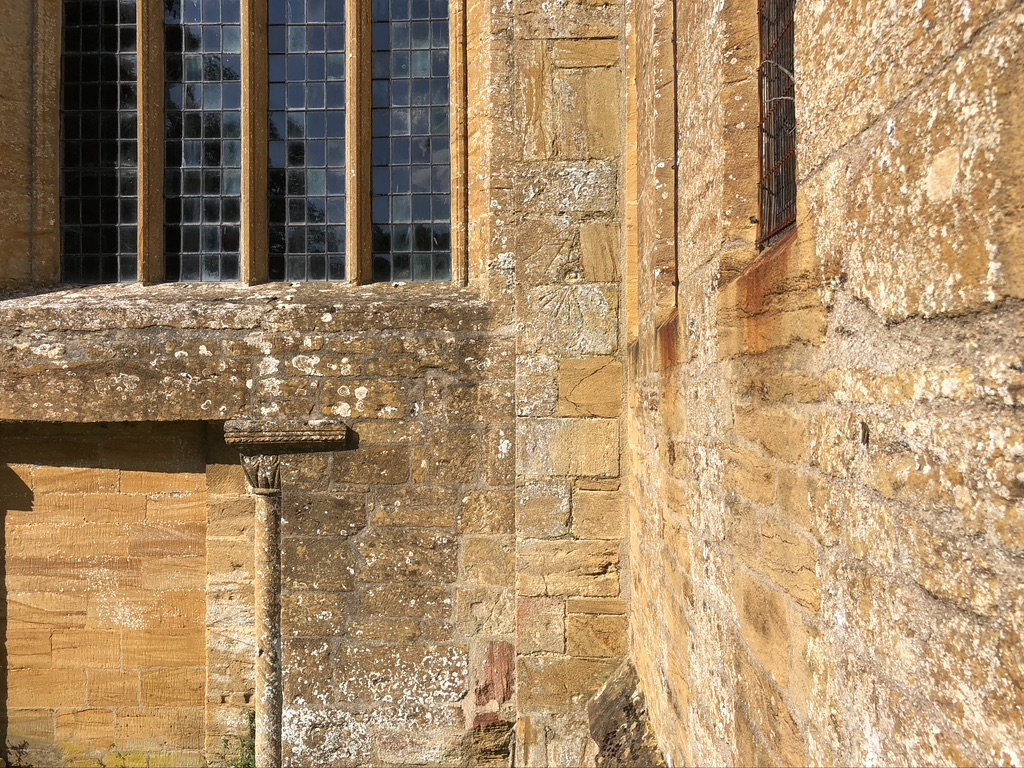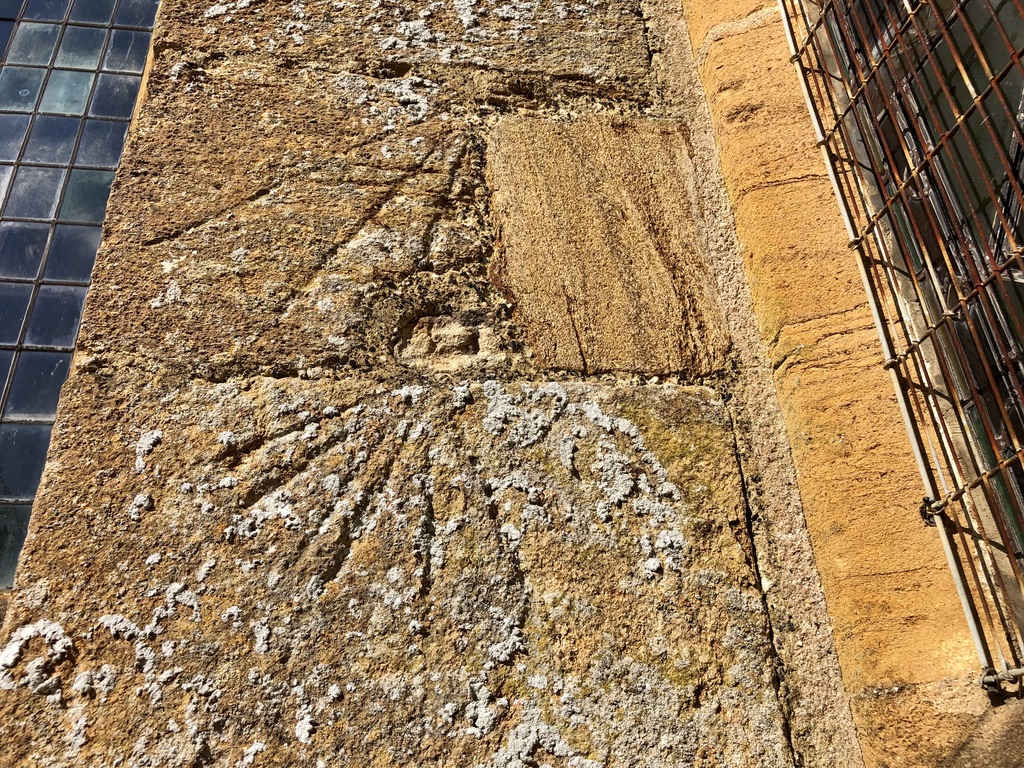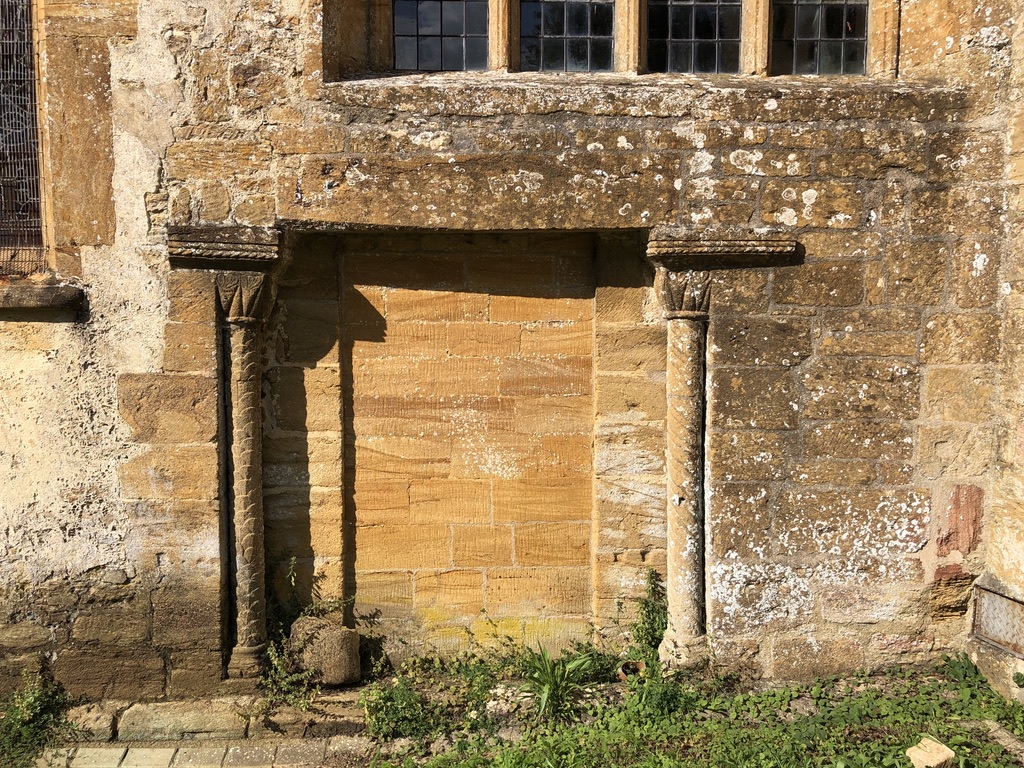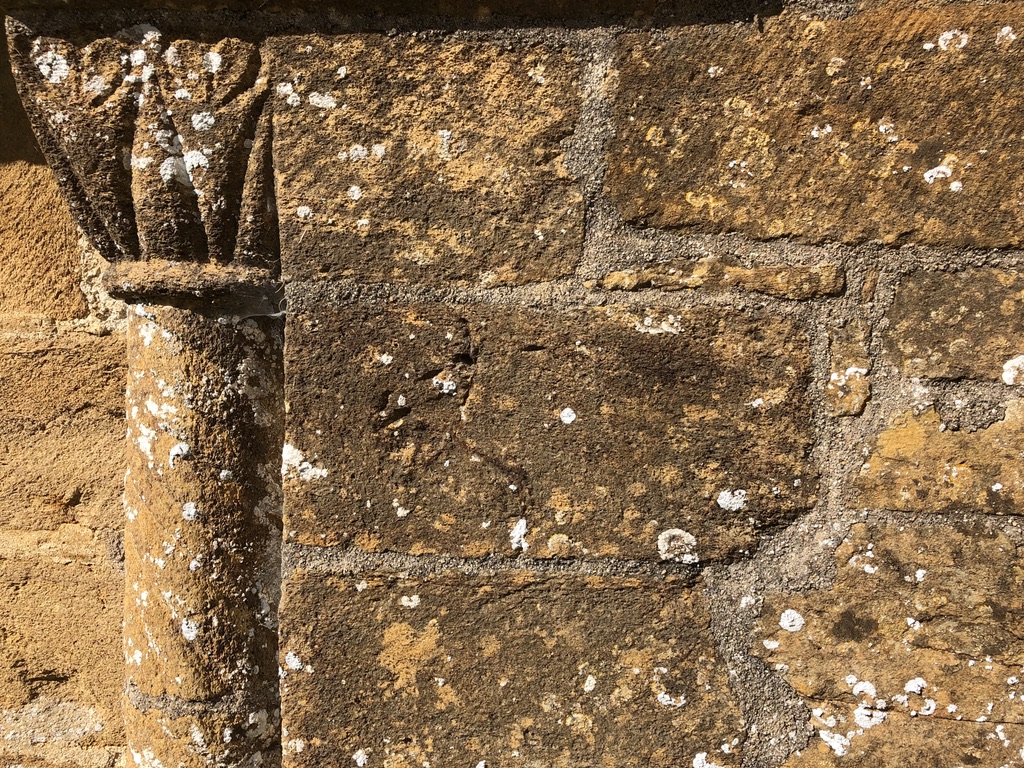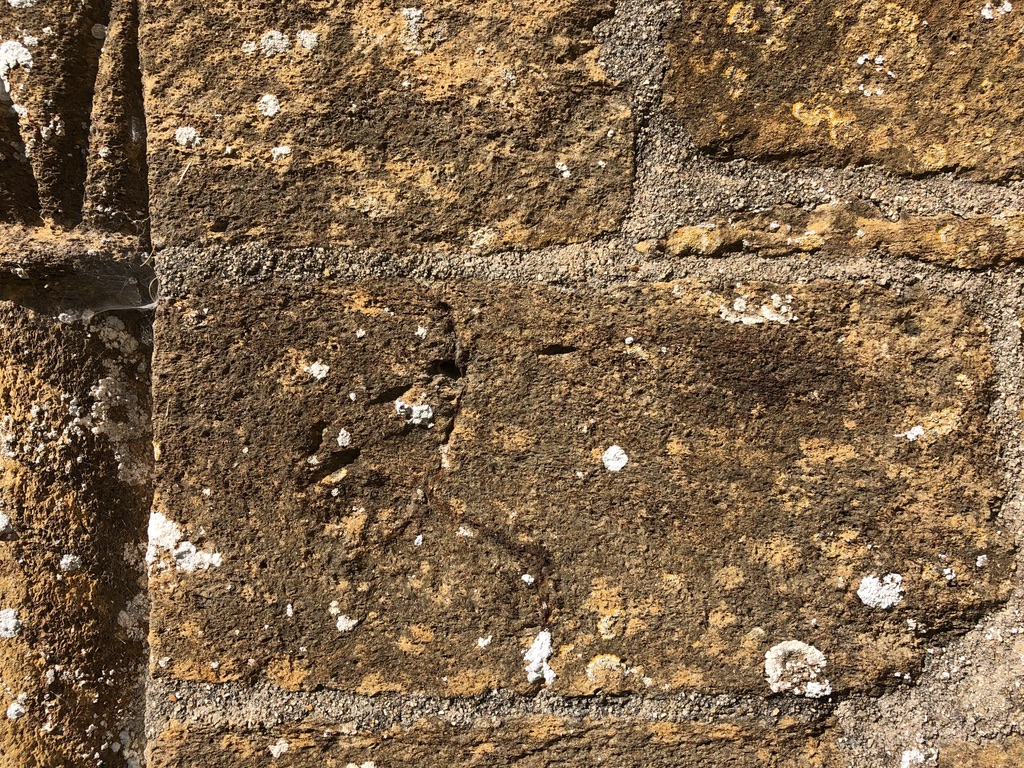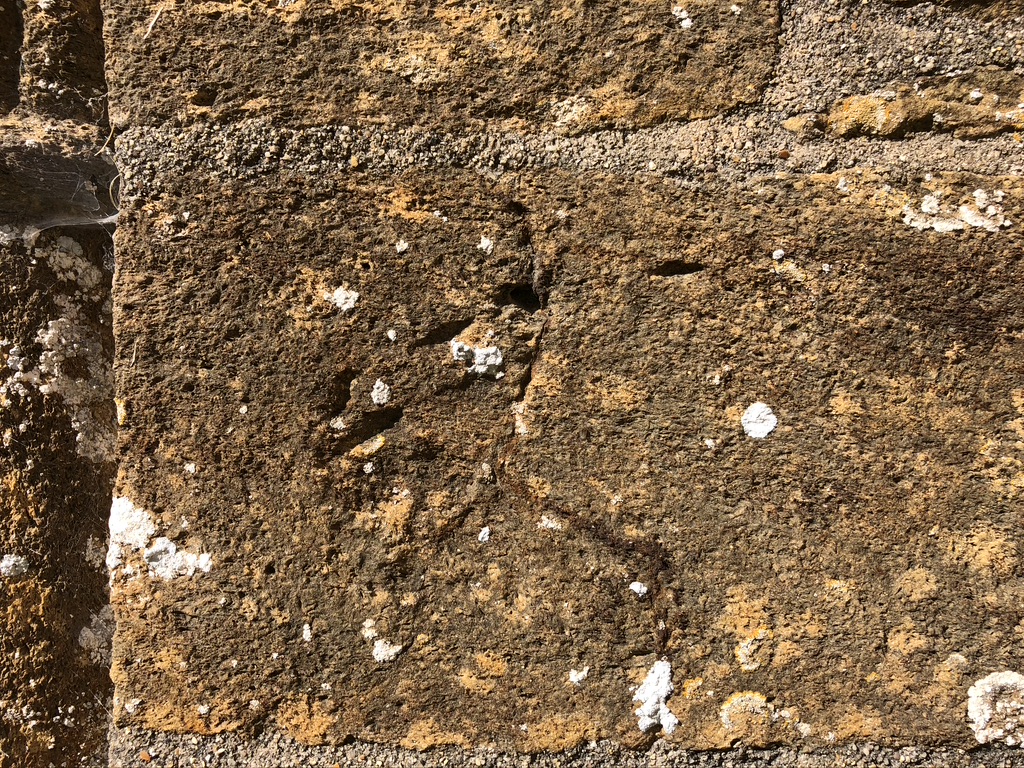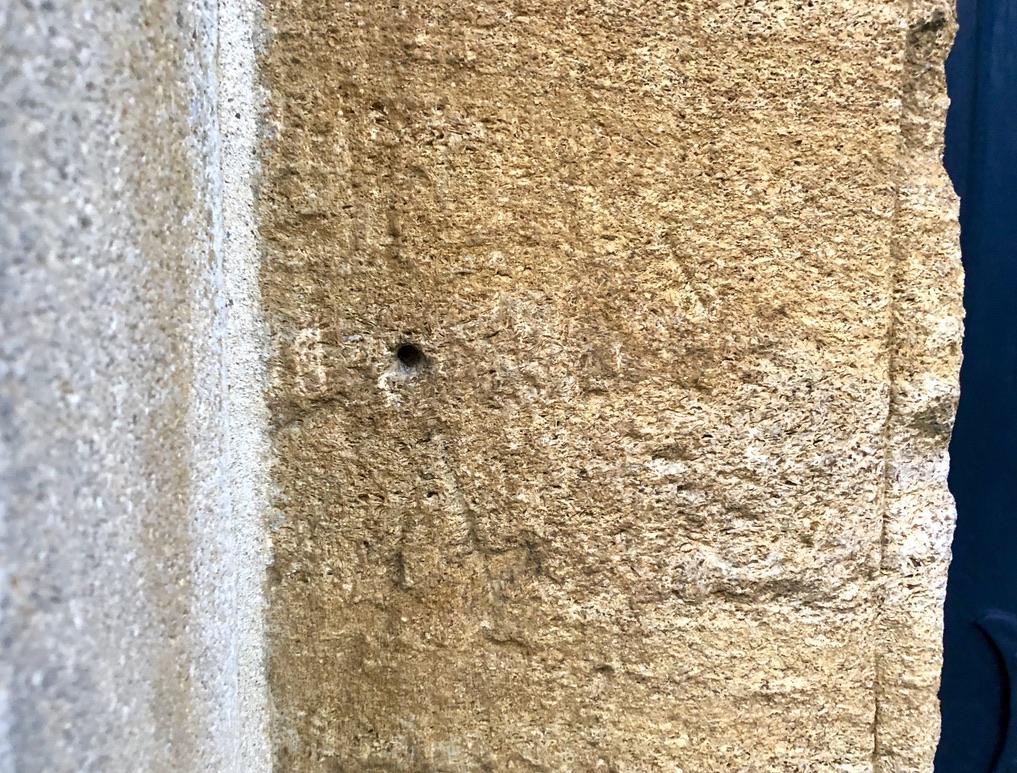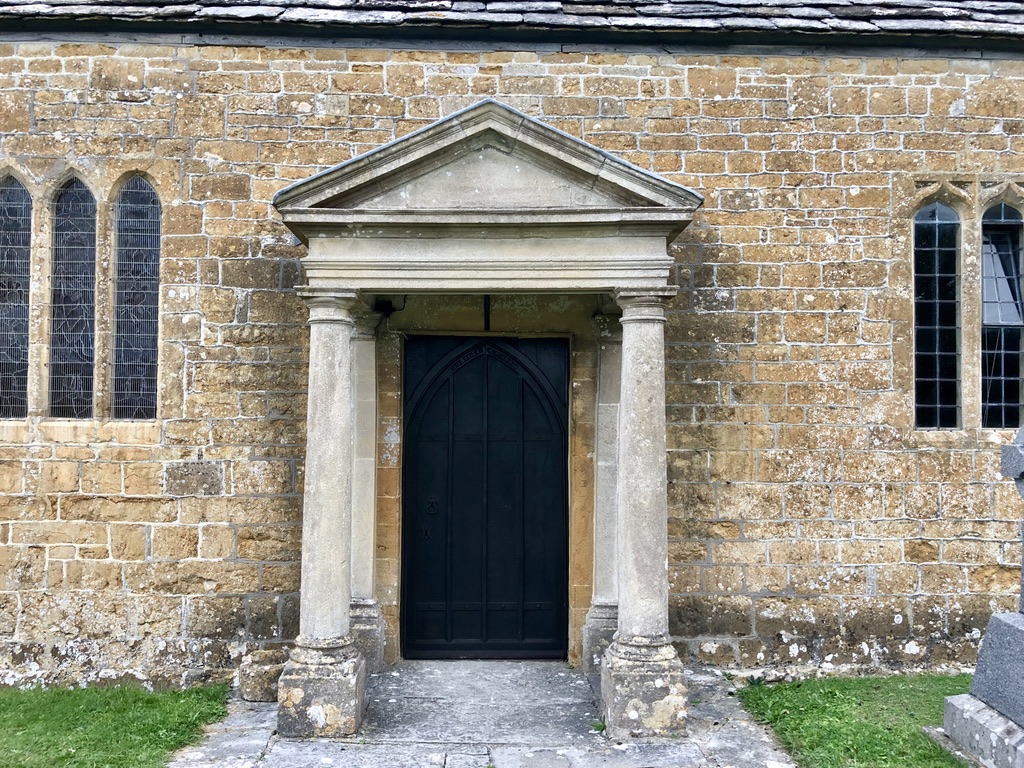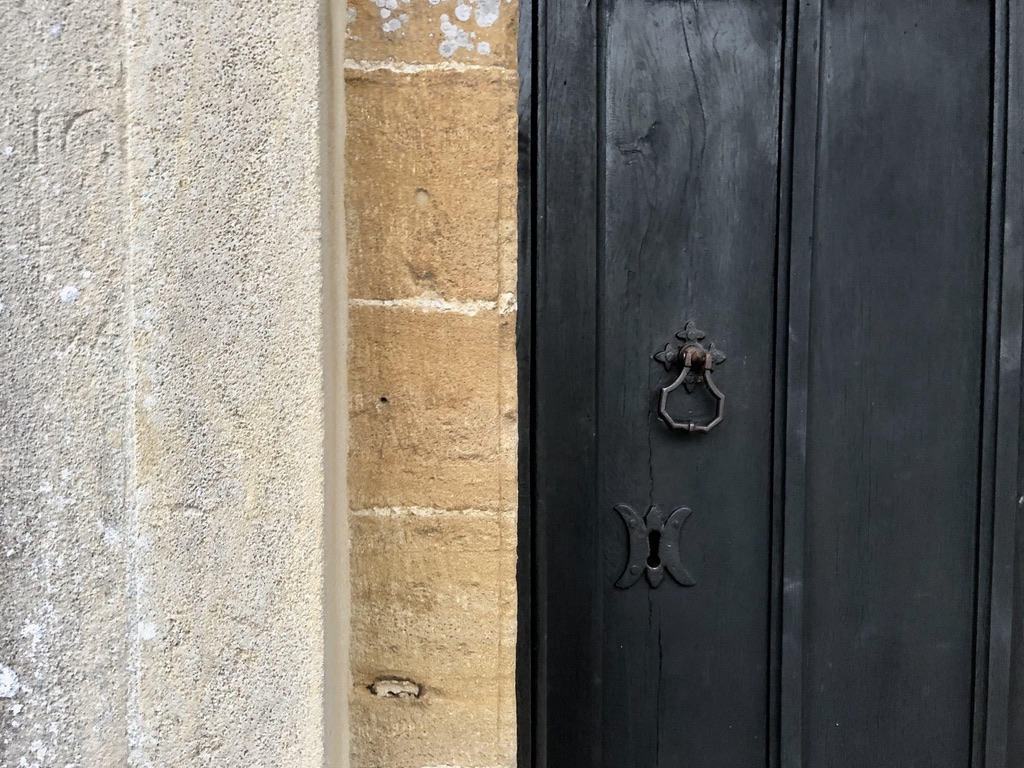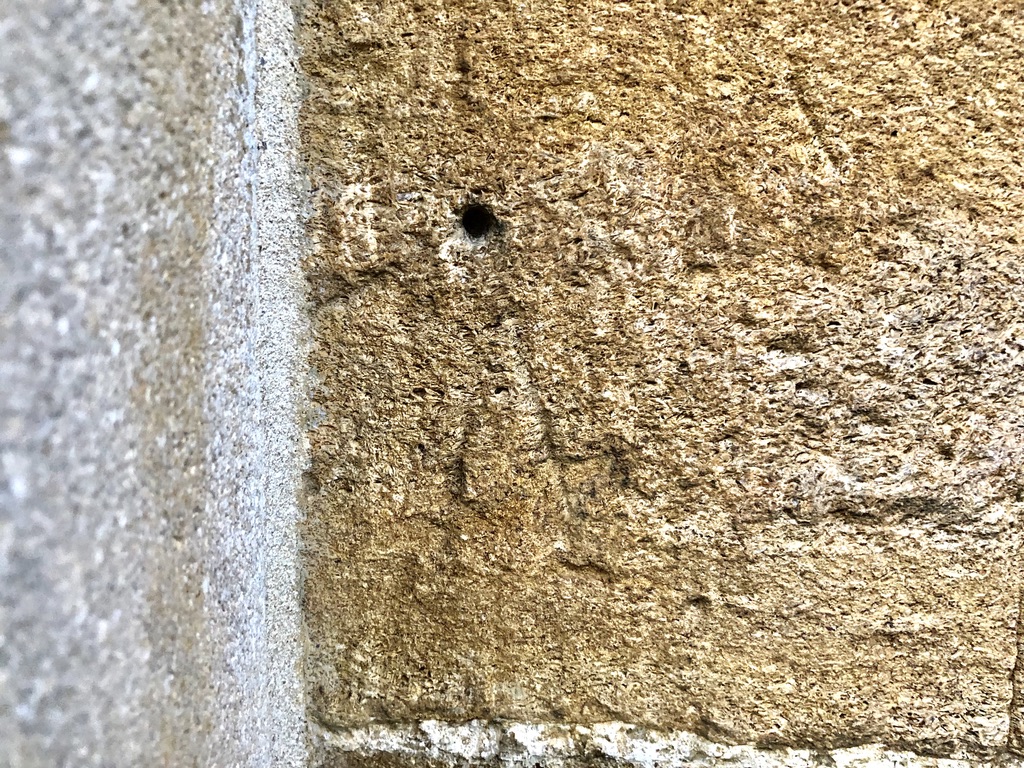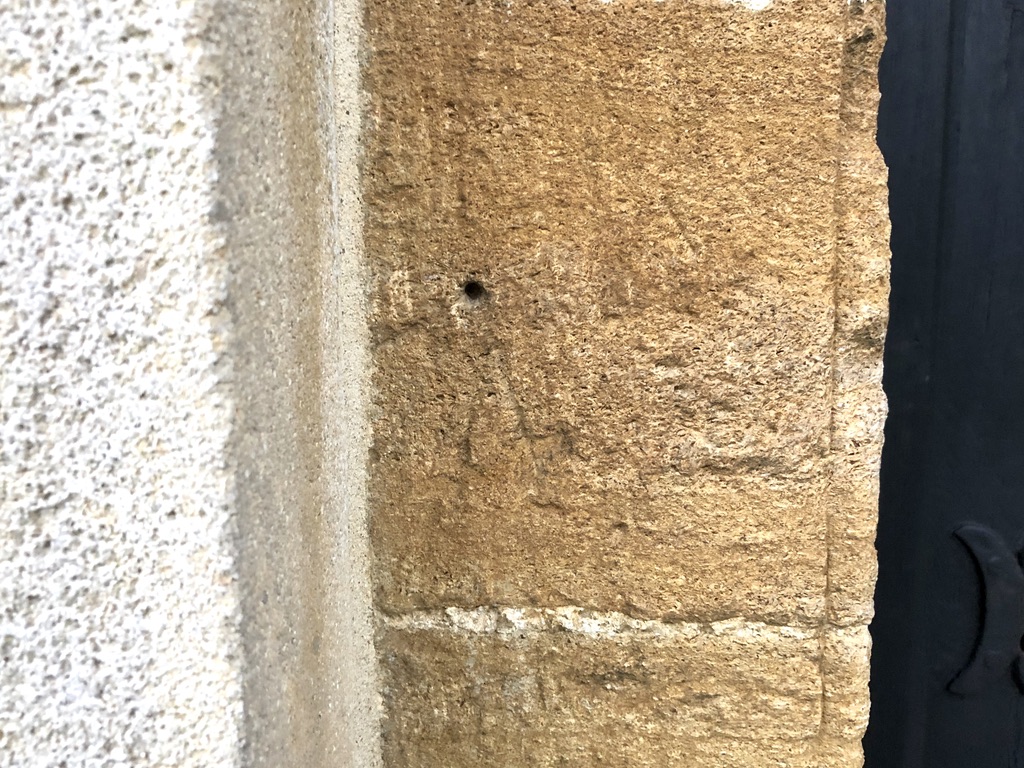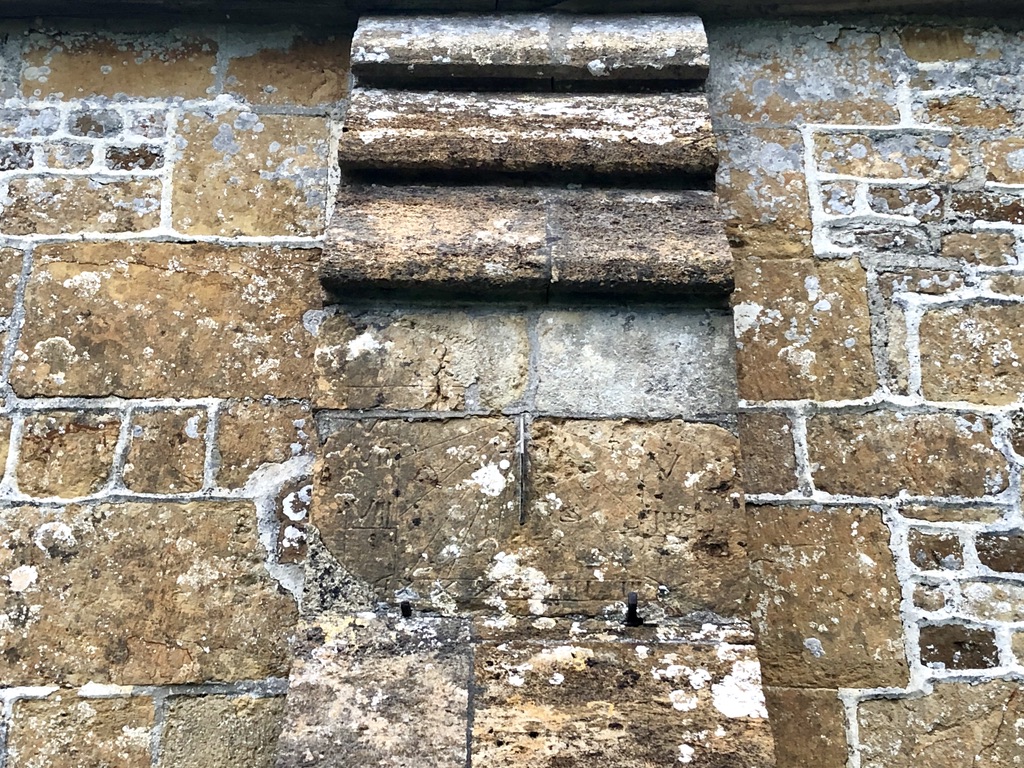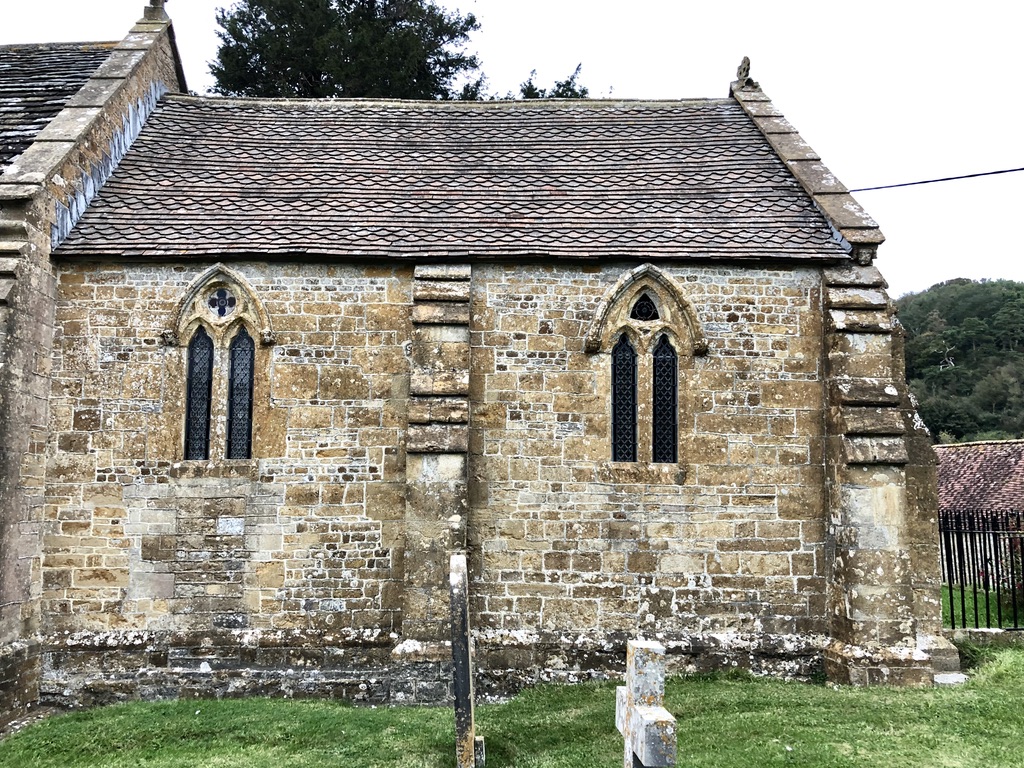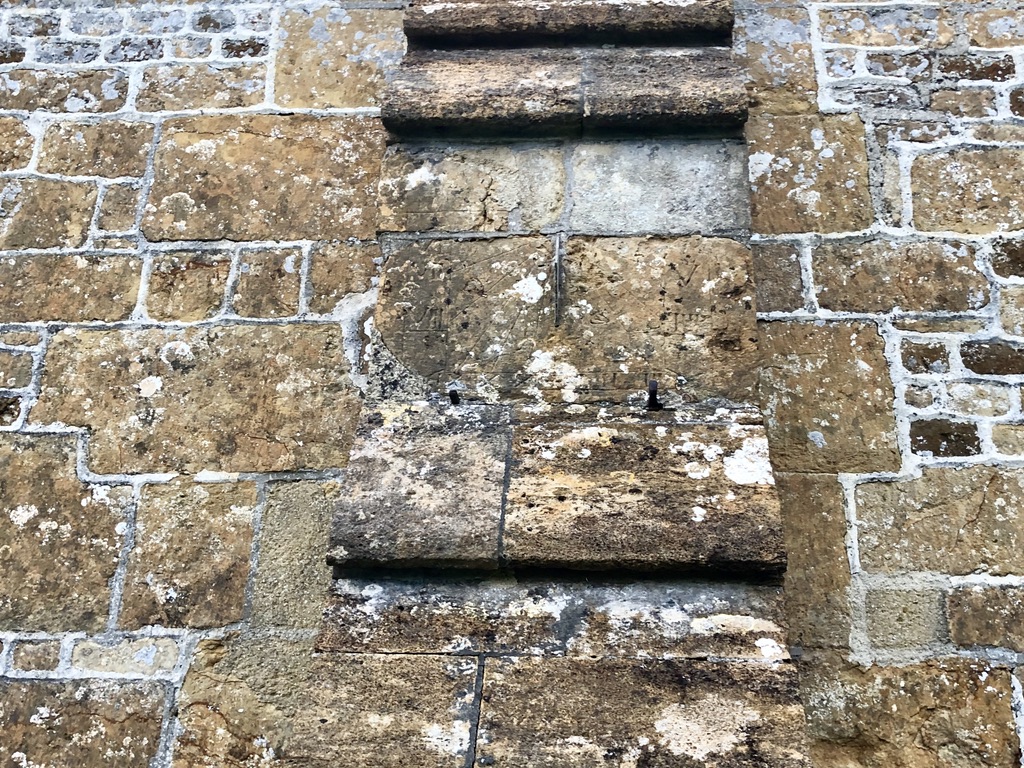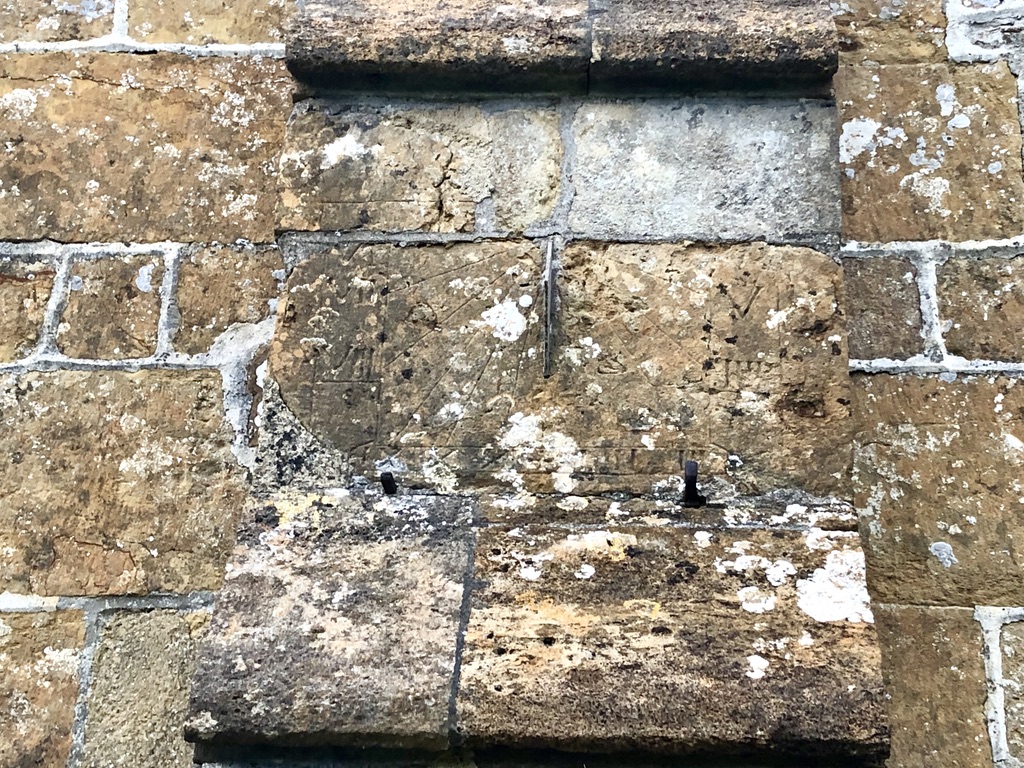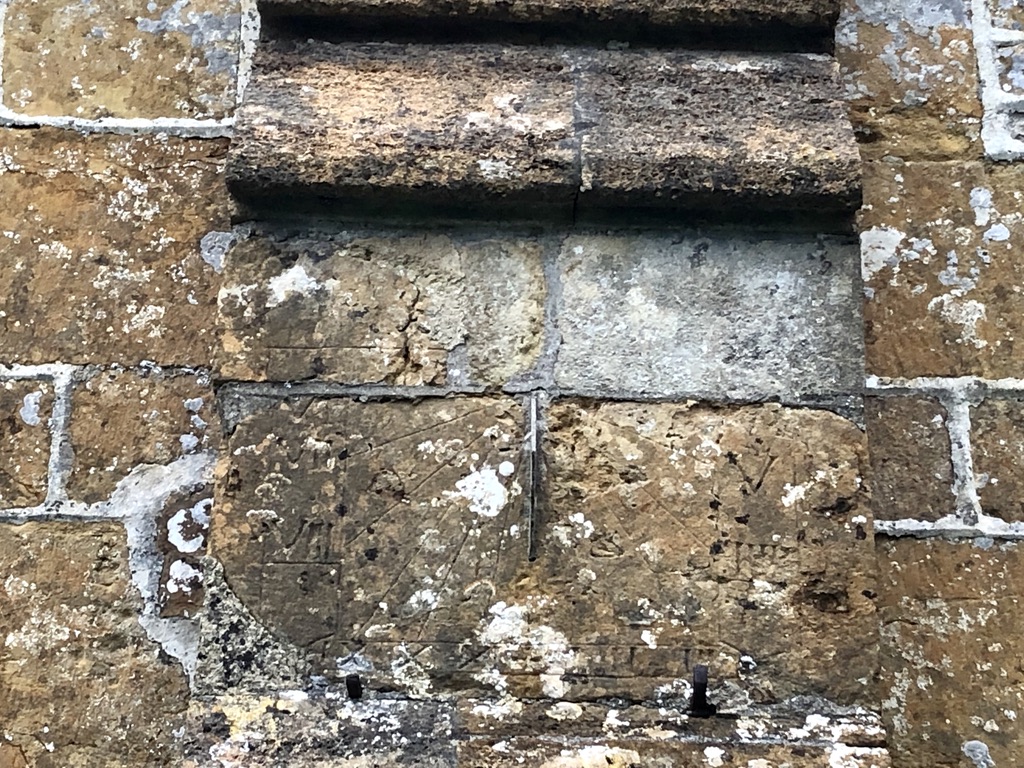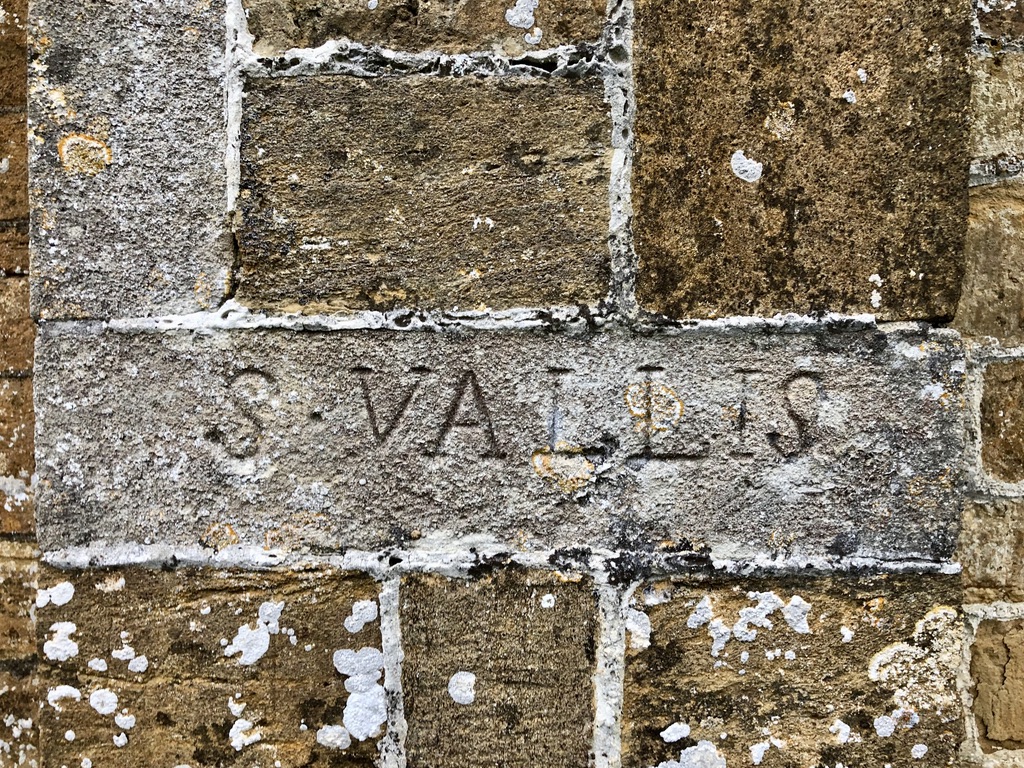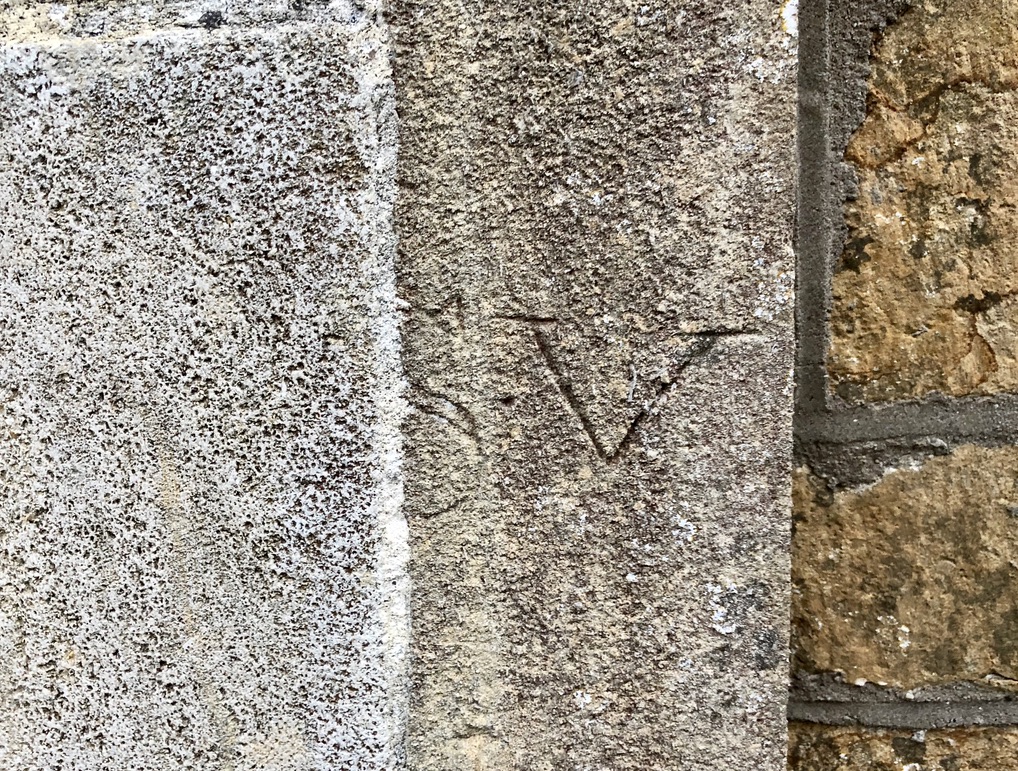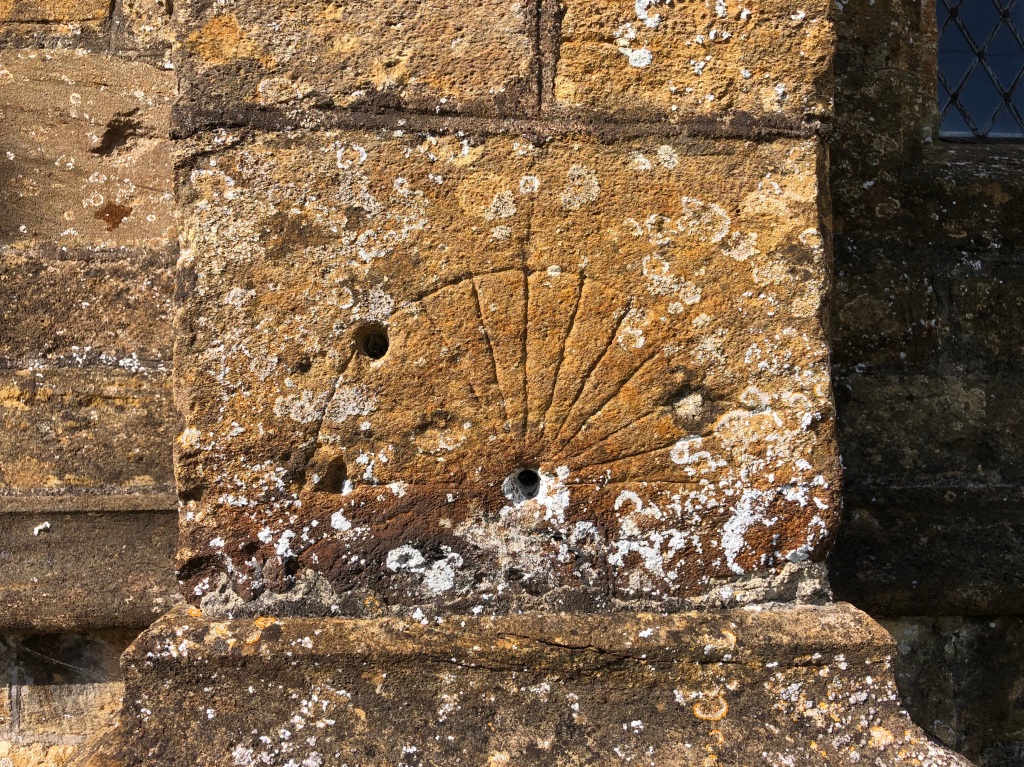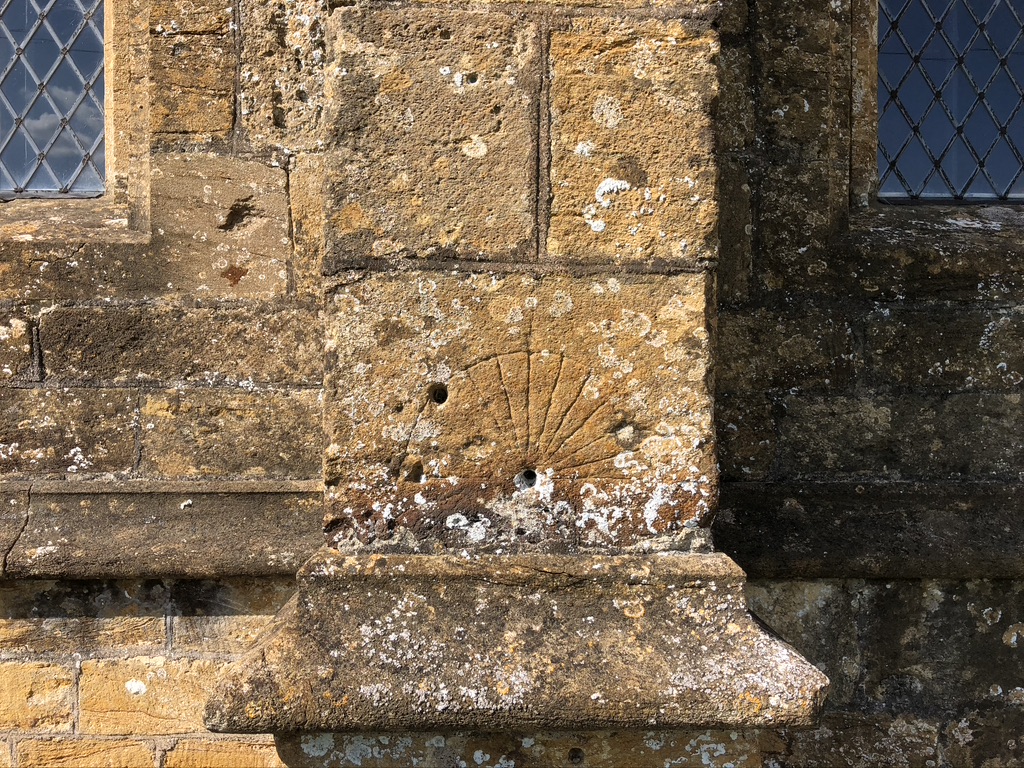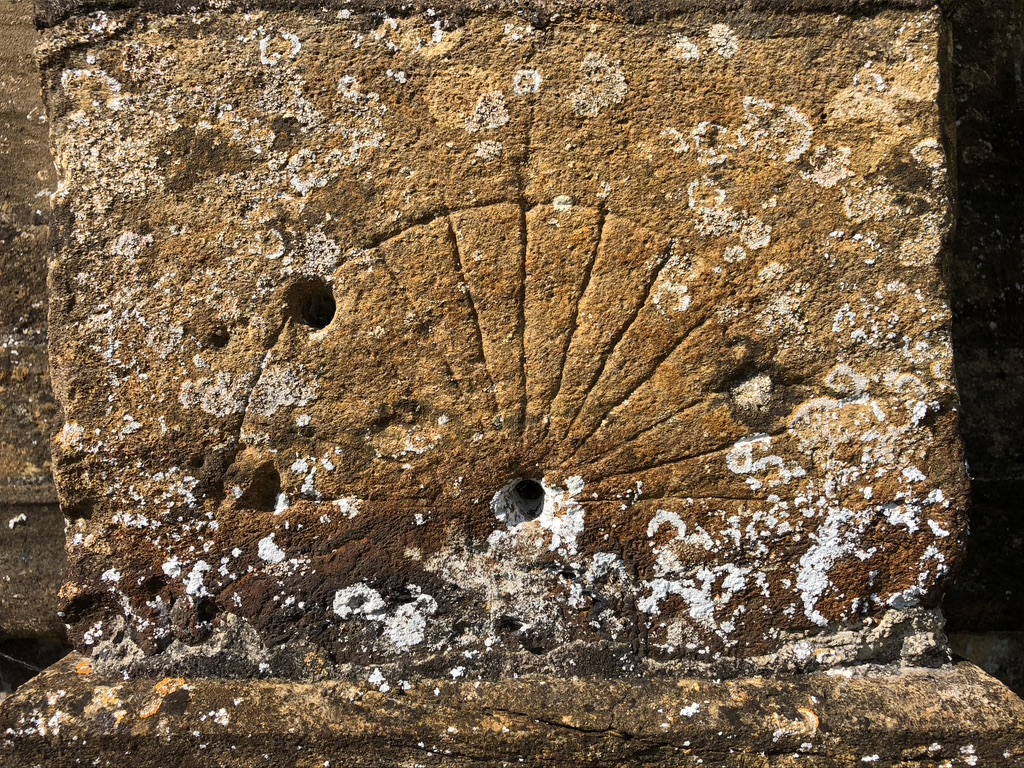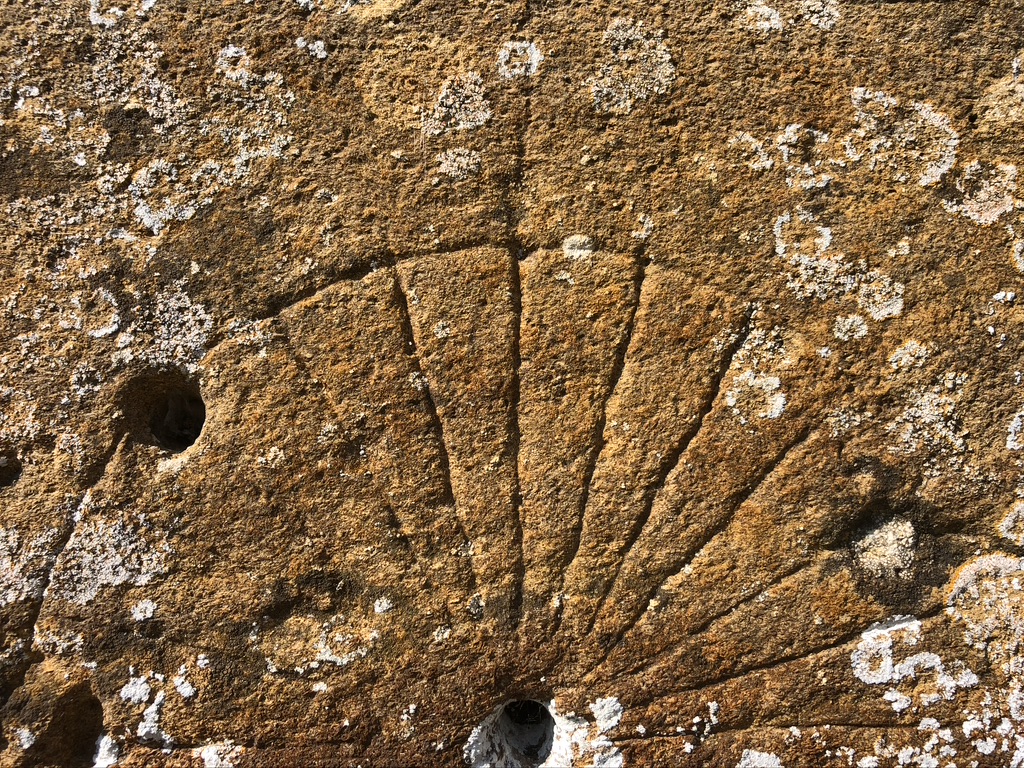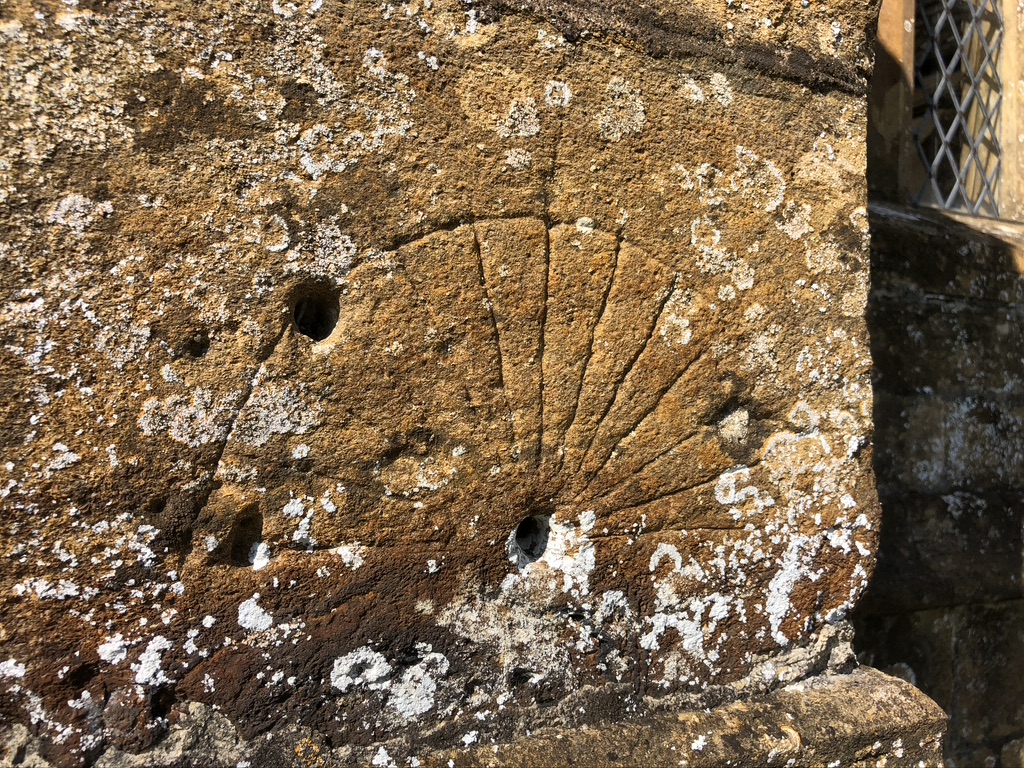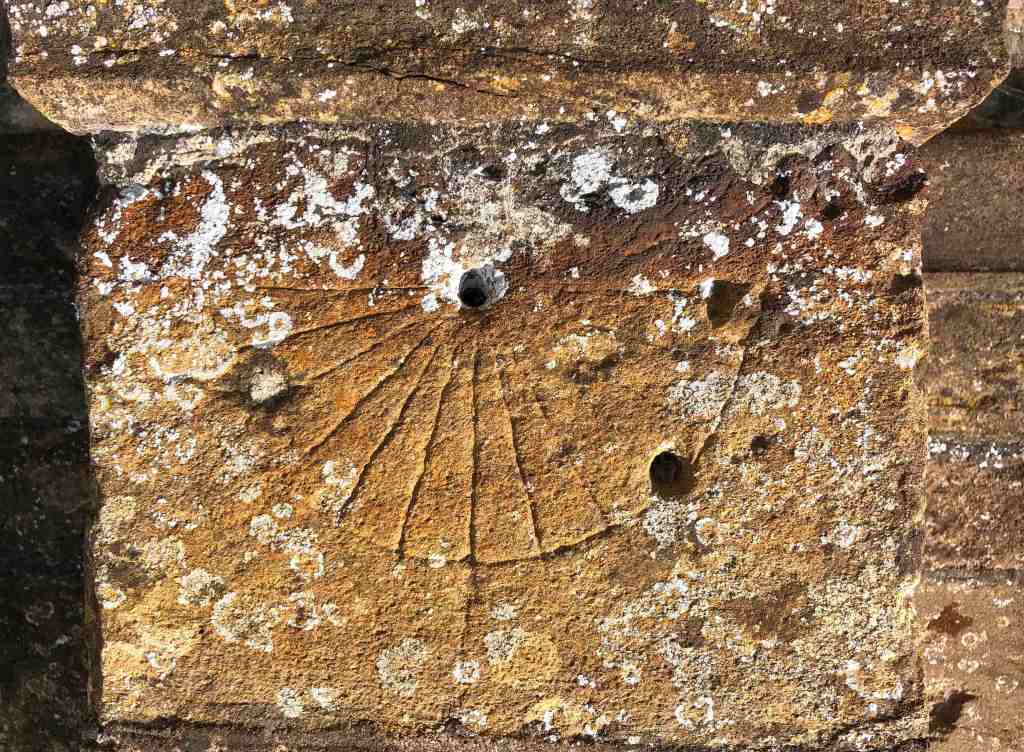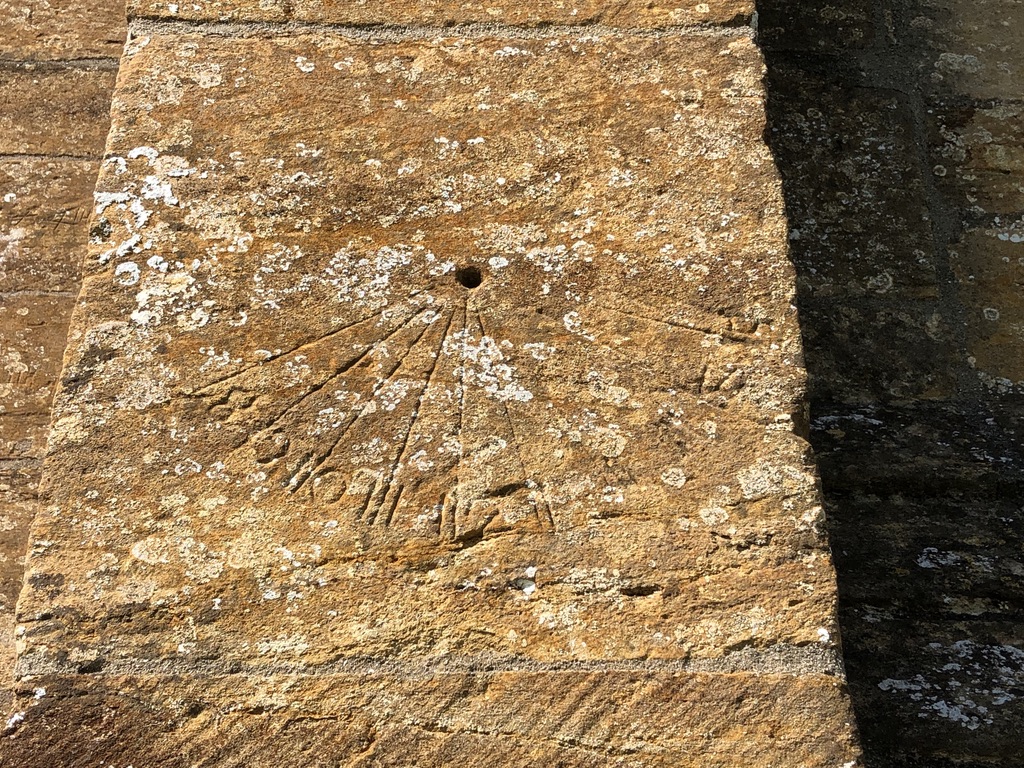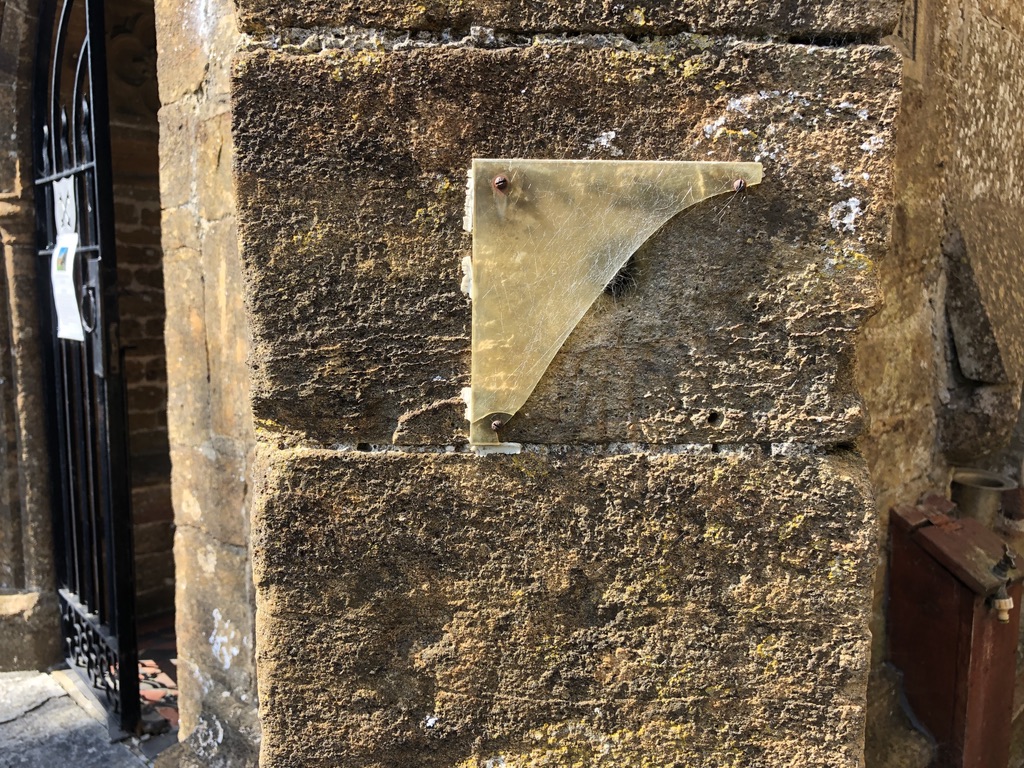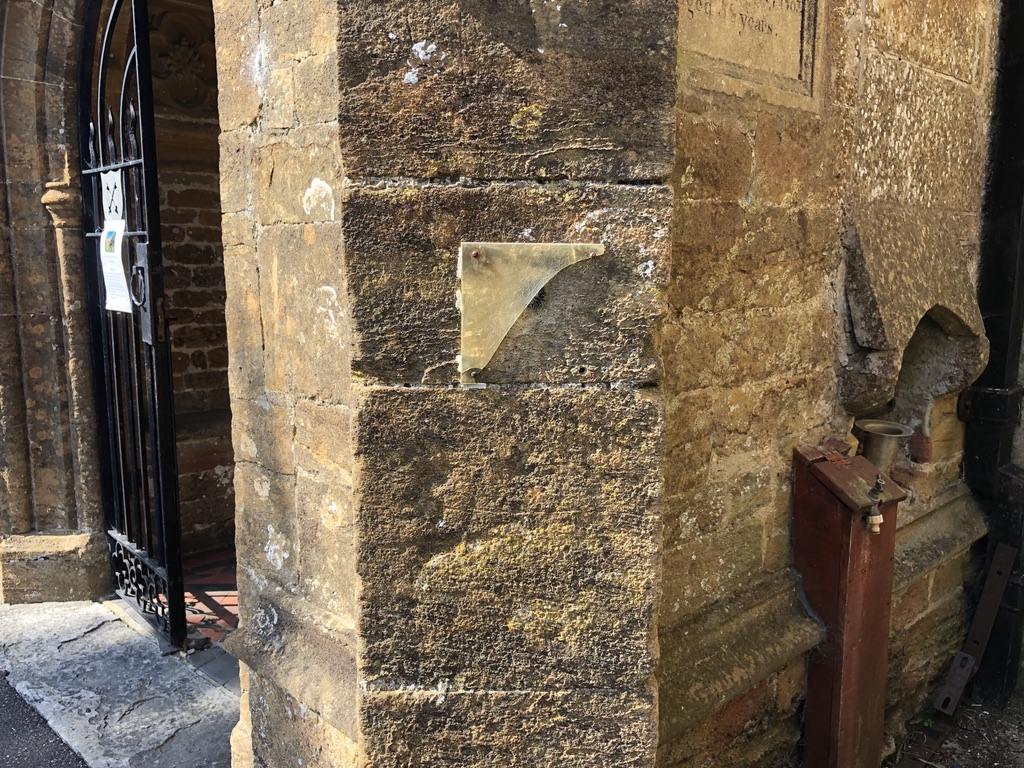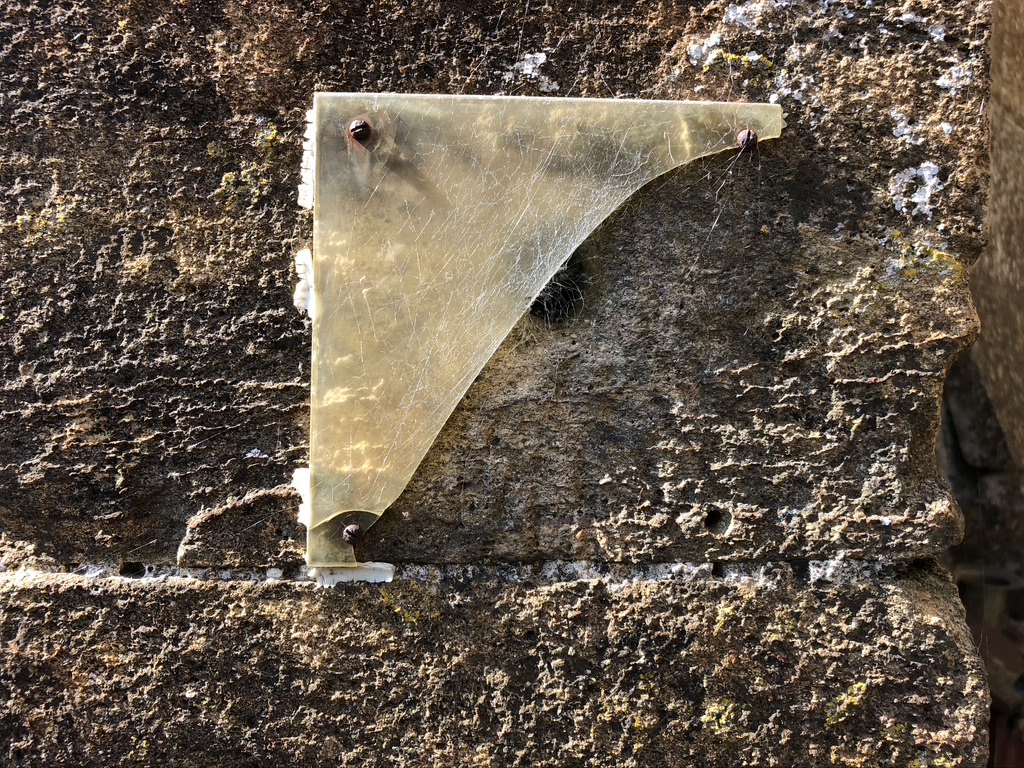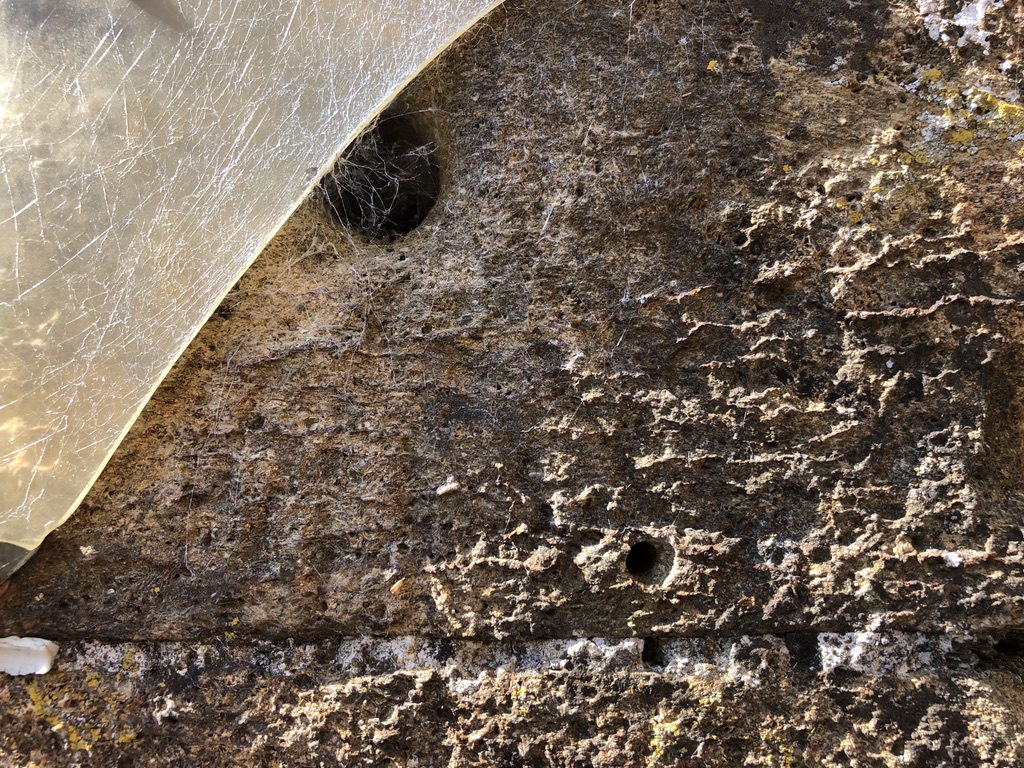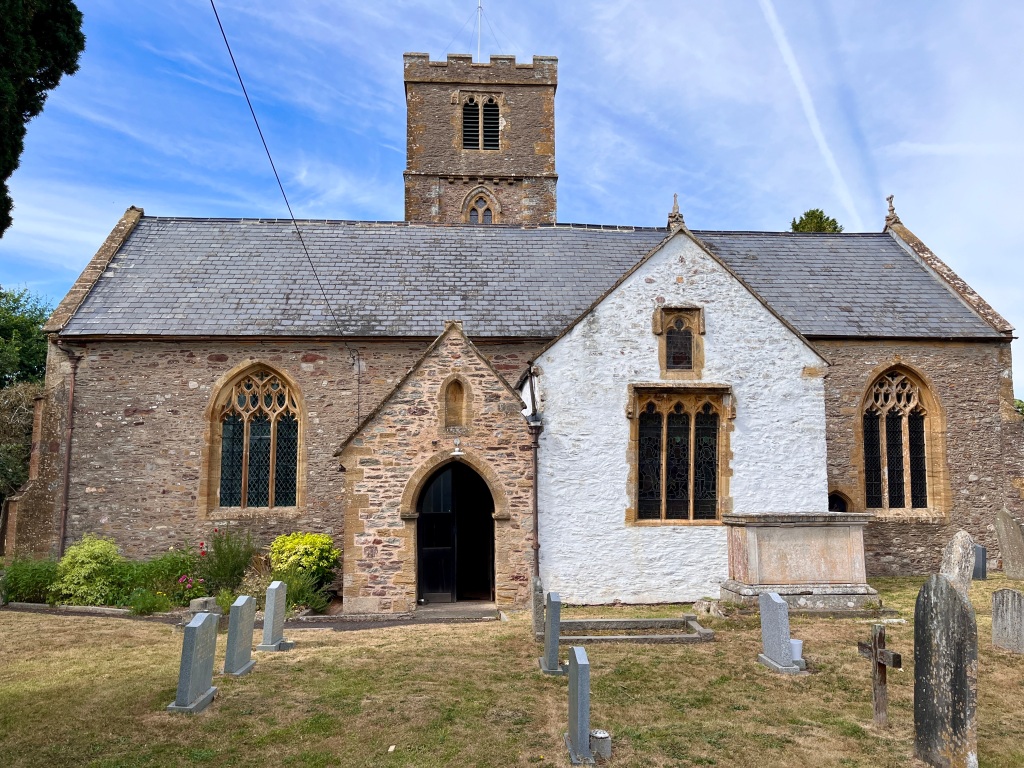
ST MICHAEL . CREECH ST MICHAEL. SOM
GRADE I † C12 origins, mainly C13; C15 perp additions and C19 restoration. A most attractive building, highly praised as an uncommonly interesting church PEV. Called All Saints until C16. Traces of C17 wall paintings. 6 bells, earliest 1590. Additional dials found. 5m E of Taunton. 51.0224 / -3.0355 / ST274252

DIALS
DEH visited St Michael in Sept 1913 and noted a group of 3 dials on W side of the porch. He recorded All three of these dials are close together, very poor in construction, and one or other of them is probably only a copy dial, but the lines of all have been added to, and it is difficult to say which is the original. Dial 2 is the least explicable.
There are 3 other dials (one is debatable): 2 on E side of the porch, in much the same position as Dials 1-3; 1 on the W window jamb of the whitewashed chapel. This last is in good condition comparatively; and the more precise design suggests it was the latest and presumably superseded the others in accuracy and legibility.

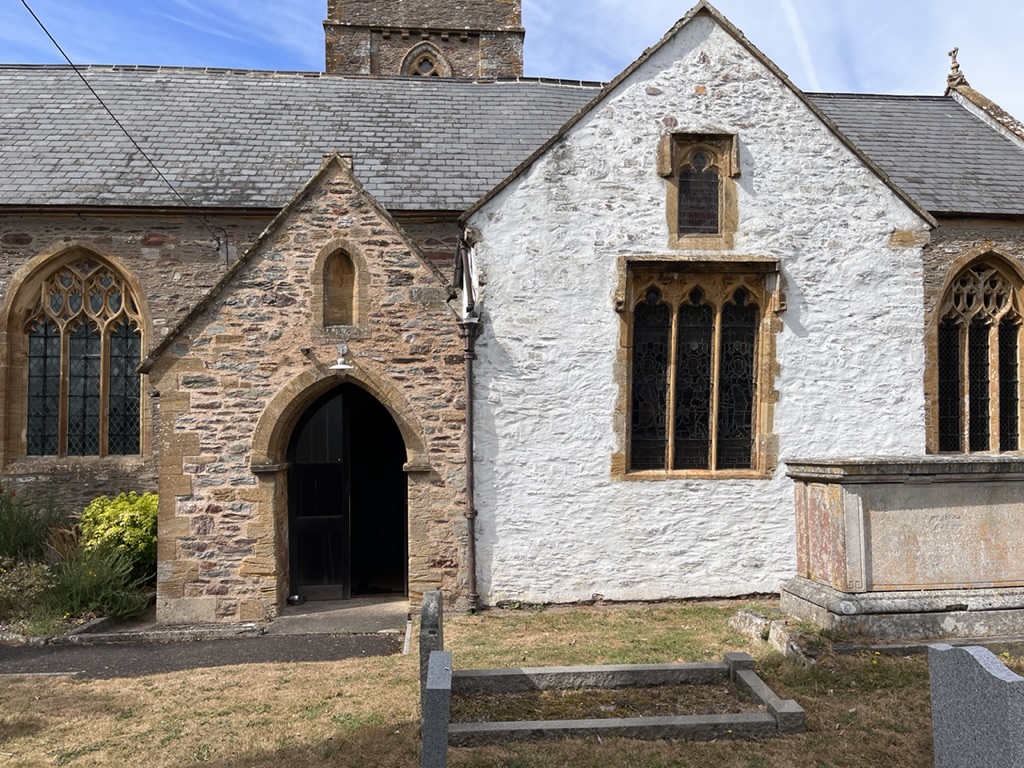


DIAL 1
DEH: 152. (1) This dial is on the w. side of the s. porch, 4 feet 8 inches above the ground. The noon line is 4 inches in length, the style hole is filled, and the aspect is s. by 8° e.



A fairly conventional morning dial with 9 (10?) lines, with the lines marking (roughly) Tierce and noon cut deeper. It’s difficult to interpret the pocks, if that is what they are. Several correspond with the relevant radials; the vertical seems to have a 2nd pock lower down (Mass time marker?). Possibly they were added later.

DIAL 2
DEH: 153. (2) This dial is close by the side of No 1. The noon line is 4 inches in length, the style hole is filled, aspect as above.
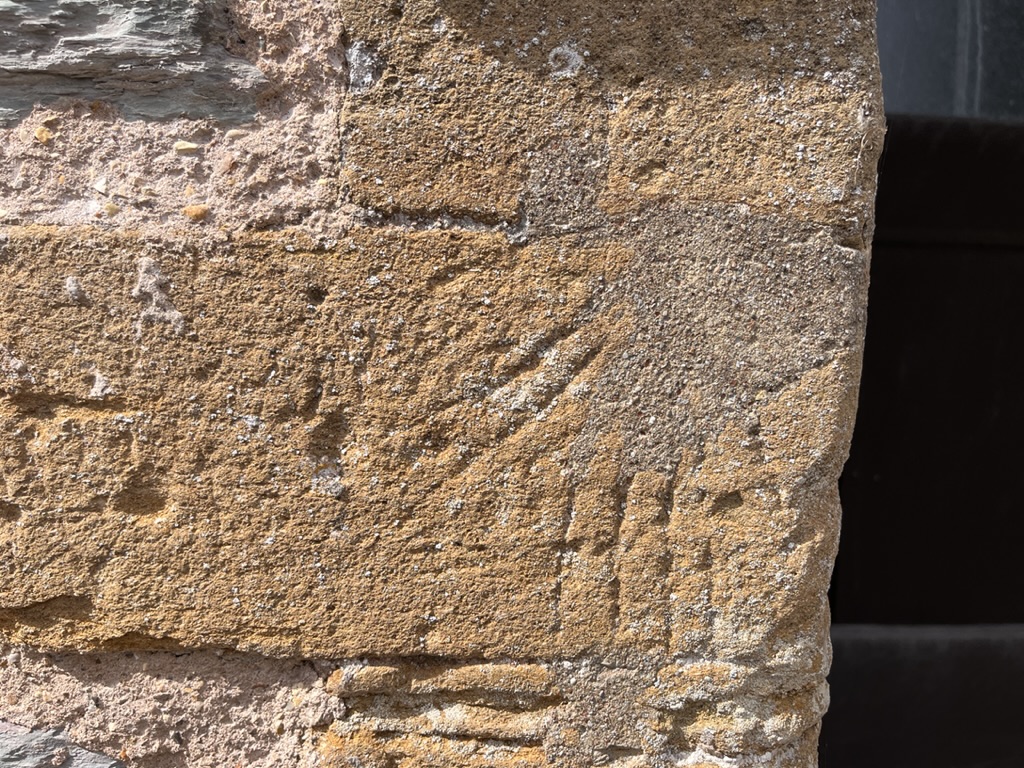


Dial 2 is confusing. How did that mish-mash of lines, hole-infilling, and extensive repair come about – and when? There’s no doubt that in the mix is a very basic dial with 2 lines curving left that appear to radiate from the mortar line above.
The 4 quite deep and almost parallel incisions just below the 2-line dial are problematic. It’s hard to see them as part of the overall dial design on that stone. And 4 verticals in a row would make a poor marker for noon. Also, it does not seem that they would converge at the same position as for the identifiable dial. In fact, seen on their own, they might be taken as an apotropaic mark of the grid and pock kind (though they are not convincing in that respect either).


DIAL 3
DEH: 154. (3) Six inches above No. 2, a dial with noon line 3 inches in length, the style hole filled, aspect as above.
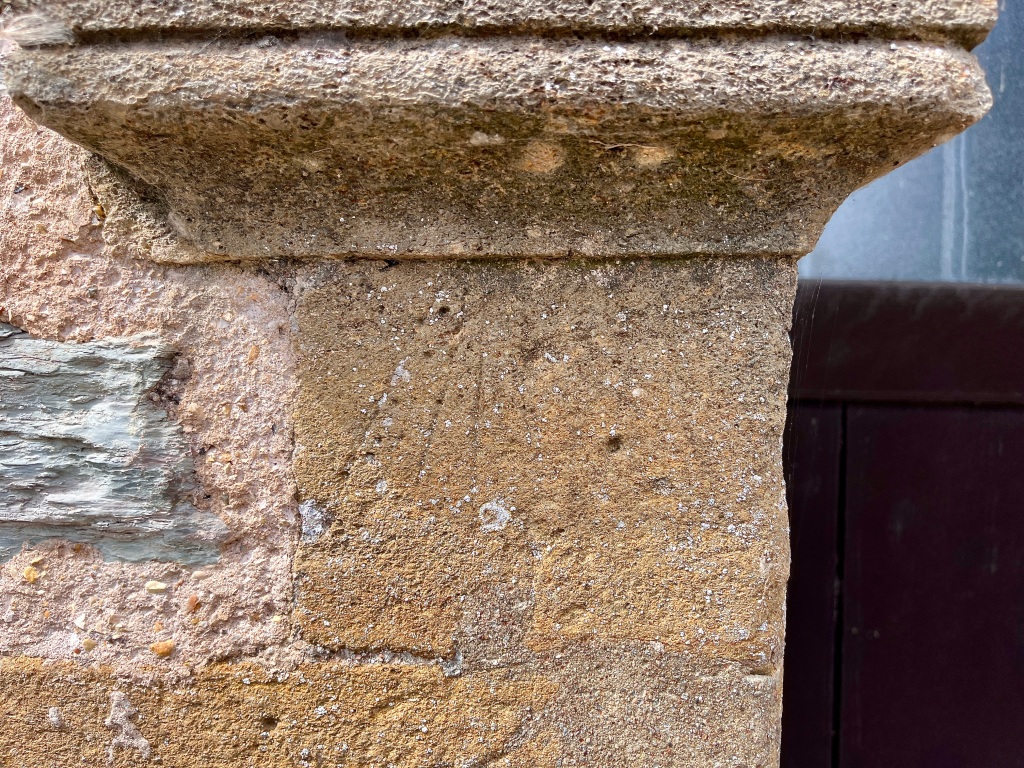
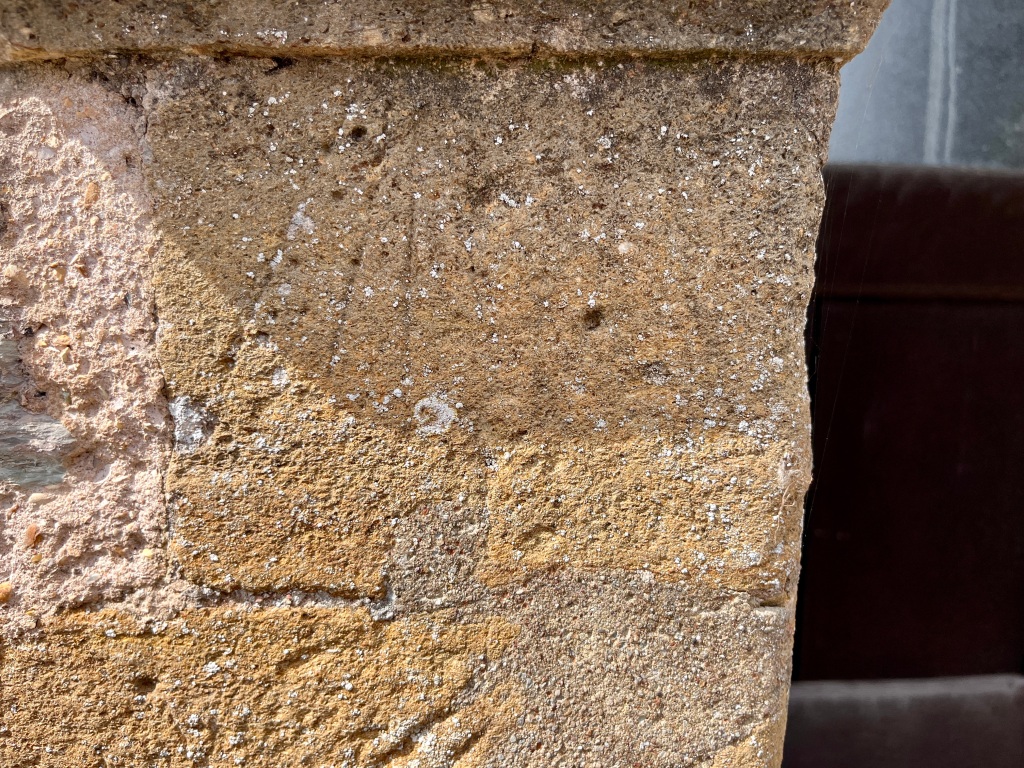


This morning dial has 3 lines that radiate from the stone overhang, There is a small hole at the apex where presumably a thin style was inserted. The upper line ends with 2 clear pocks, and must have marked the most significant Mass time of the day (in this case, Tierce)

DIAL 4
A rough, eroded, and damaged dial on E jamb of the porch, level with dials 1 – 3. There are 6 detectable lines, 2 very faint. Again, a morning dial, with Tierce marked with a pock. The filled gnomon hole is big, but that may have occurred over time.


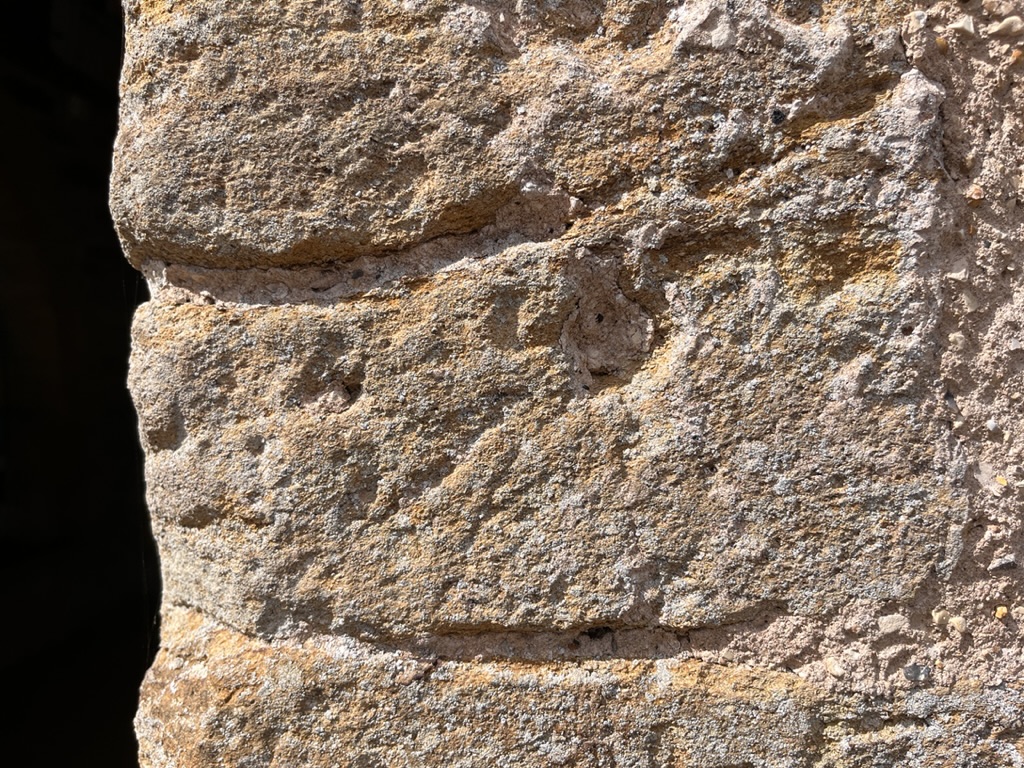

DIAL 5
This small dial is in the corresponding position opposite dial 3. It is simpler and less well defined, with a small style hole and 3 detectable lines radiating from the hole, only one being easily visible. It might be classified as ‘doubtful’ but for its relationship to dial 3 on the other side of the entrance, which I think upgrades it to ‘plausible’.



DIAL 6
This attractive dial, originally completely encircled, has survived the passage of time rather better than the others. There are 18 lines that make up a 3/4 circle, with a deeper cut noon line and a large style hole. The angles between the lines are somewhat random but I expect that the dial was effective as a marker of the progress of the day.
The way in which the dial stone has been cut to fit the space could suggest that it was relocated. In a way it might make more sense if rotated 90º clockwise, but testing that theory using a photo didn’t look right.



GSS Category: Scratch Dial; Mass Dial
All photos: Keith Salvesen

